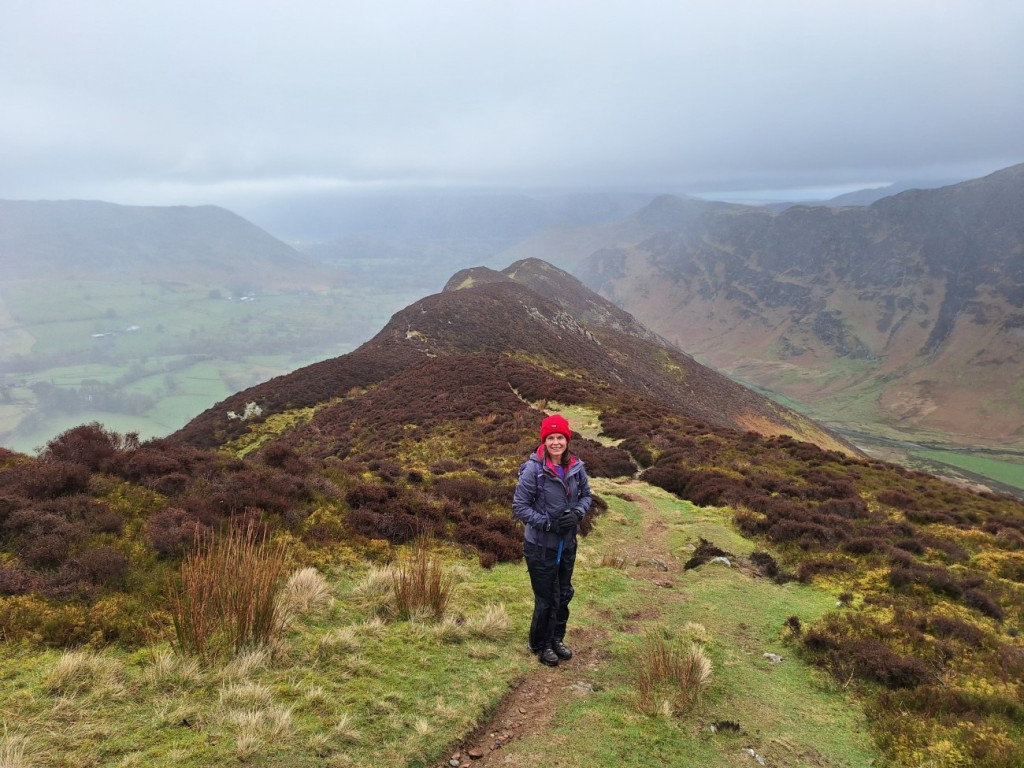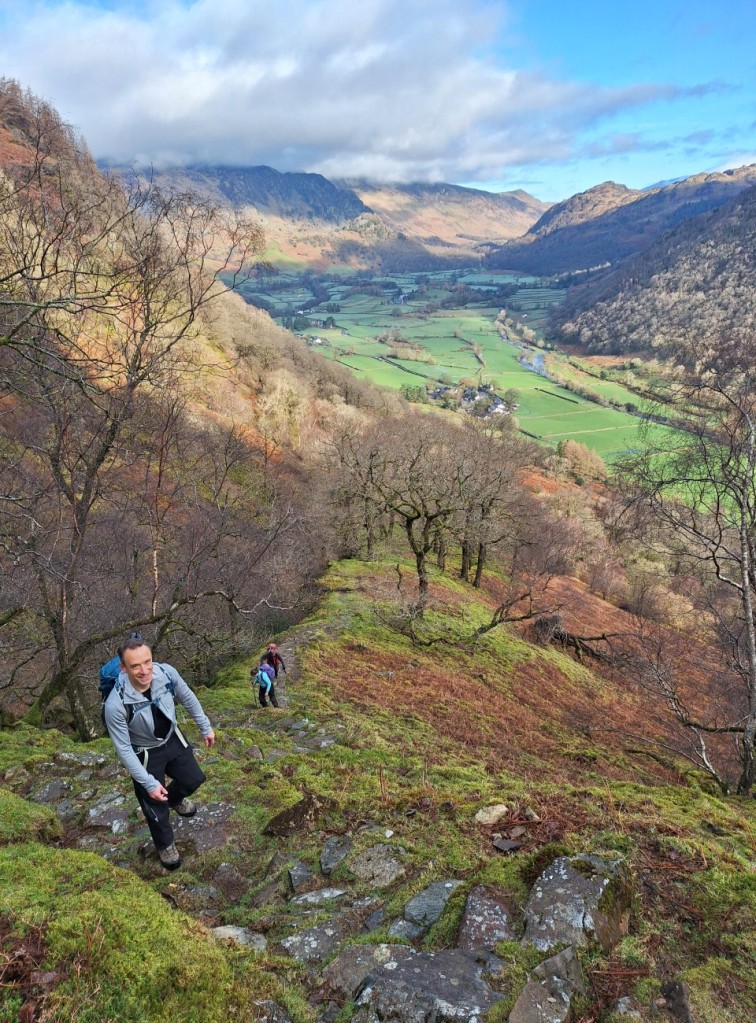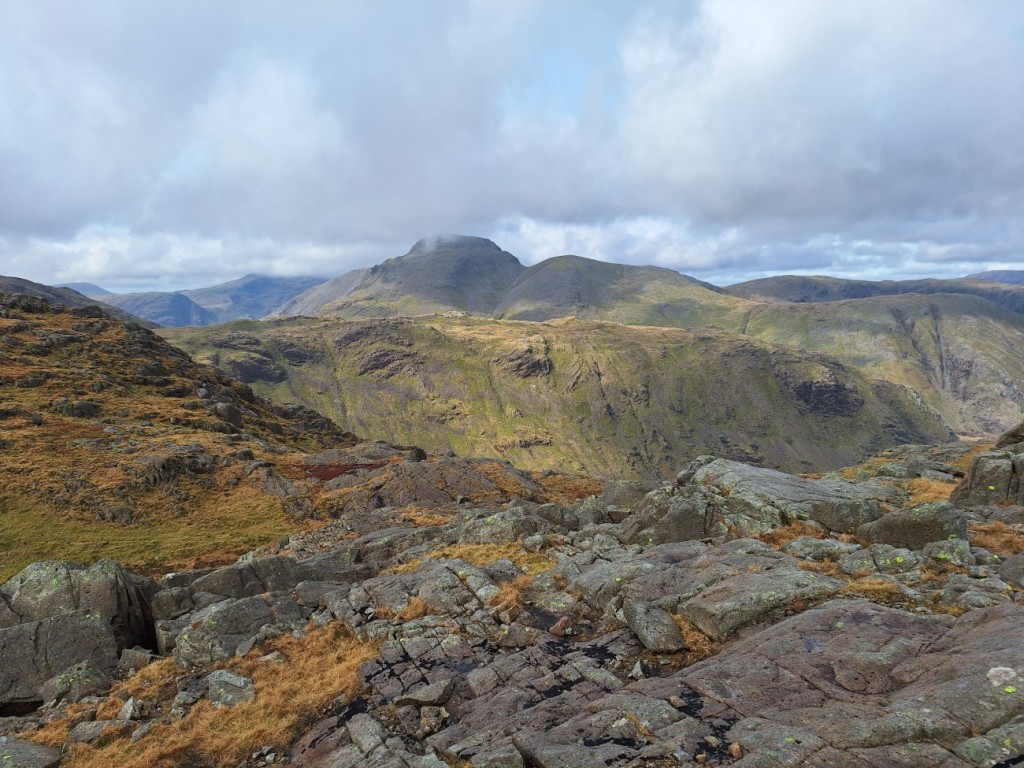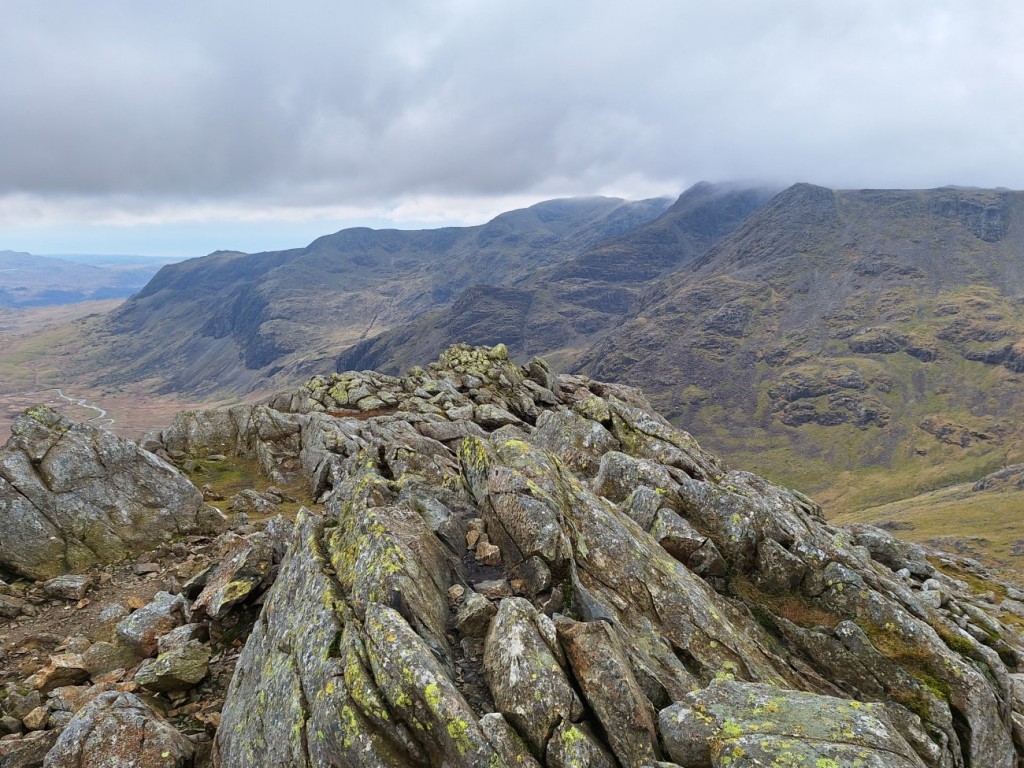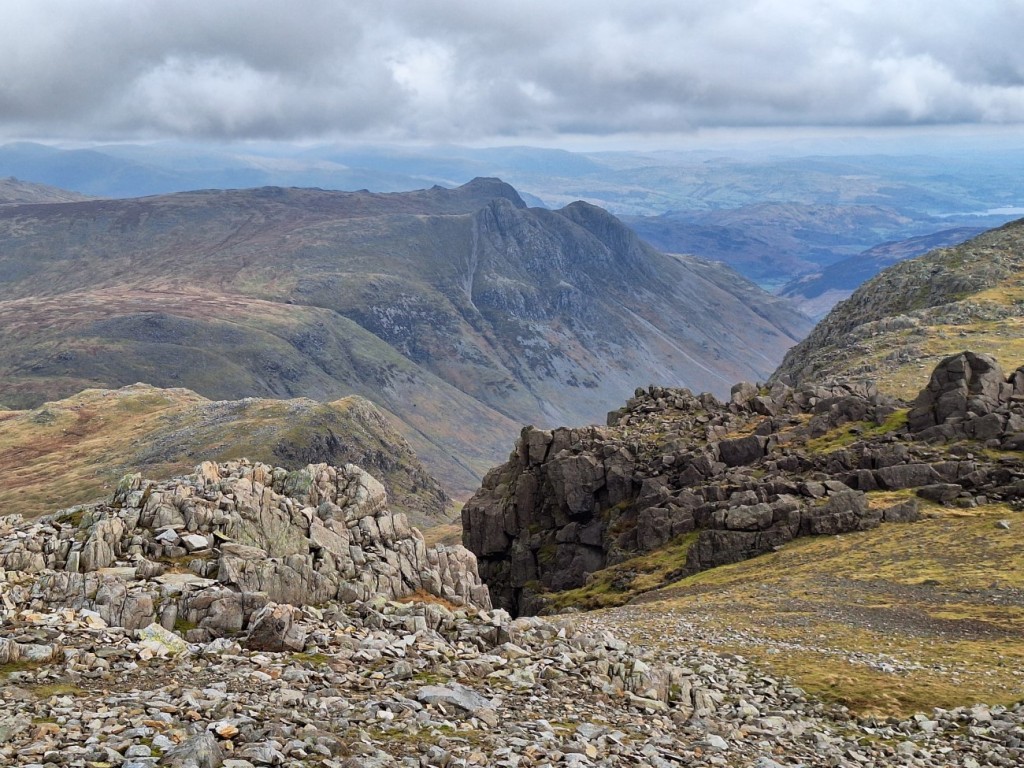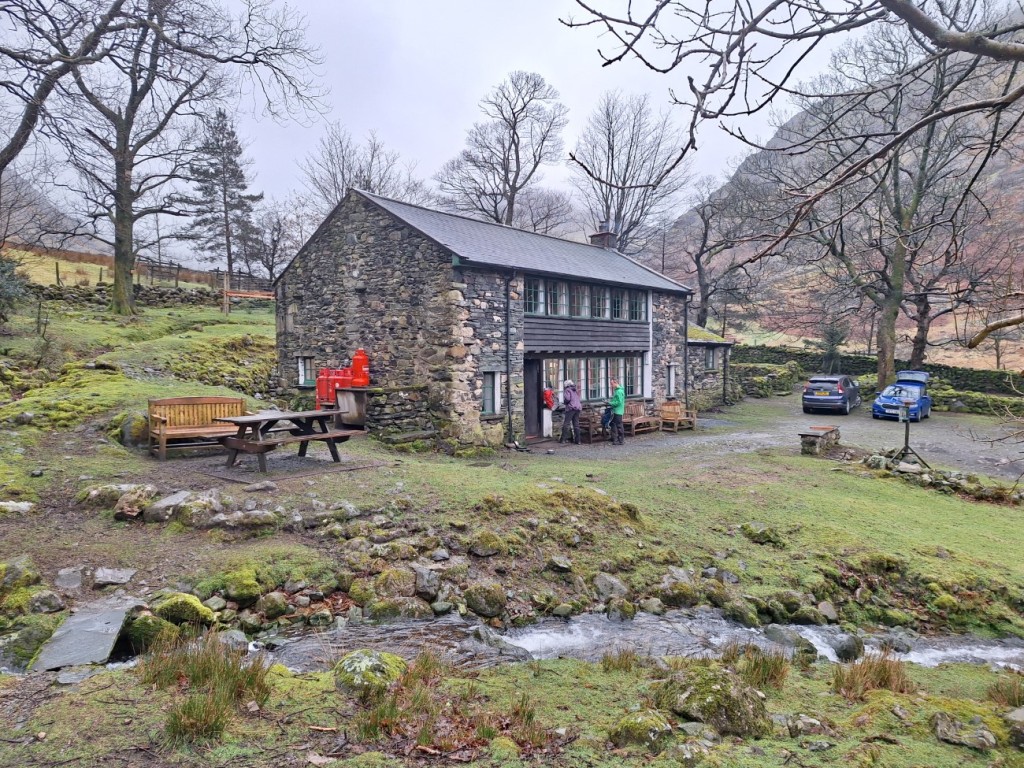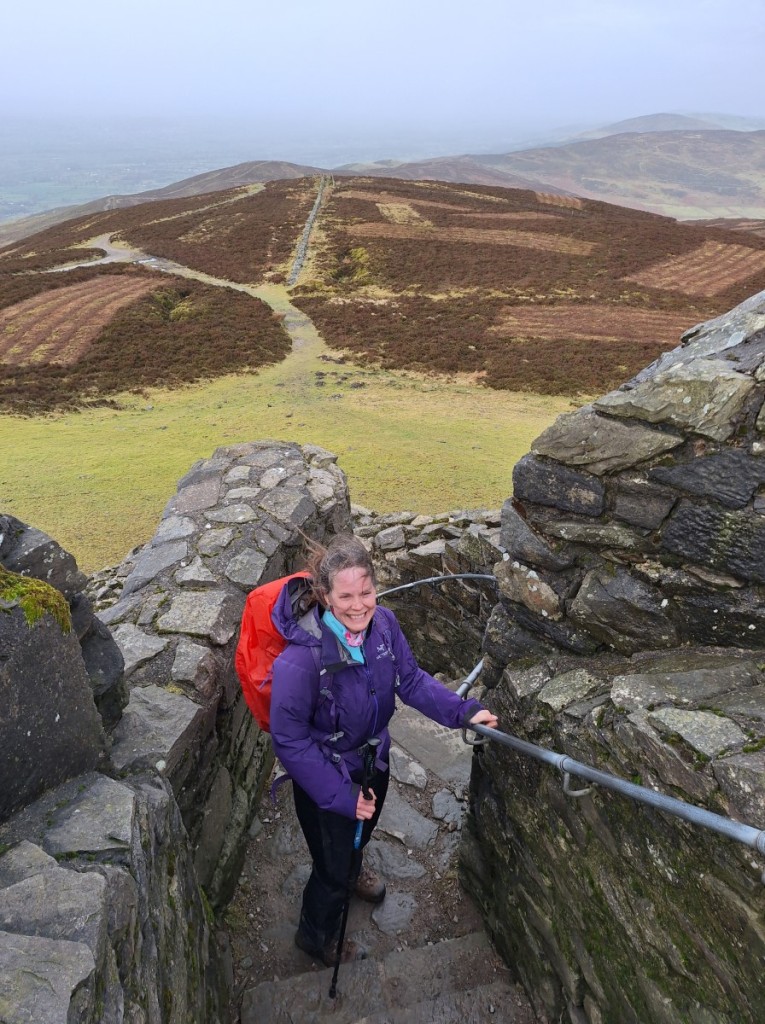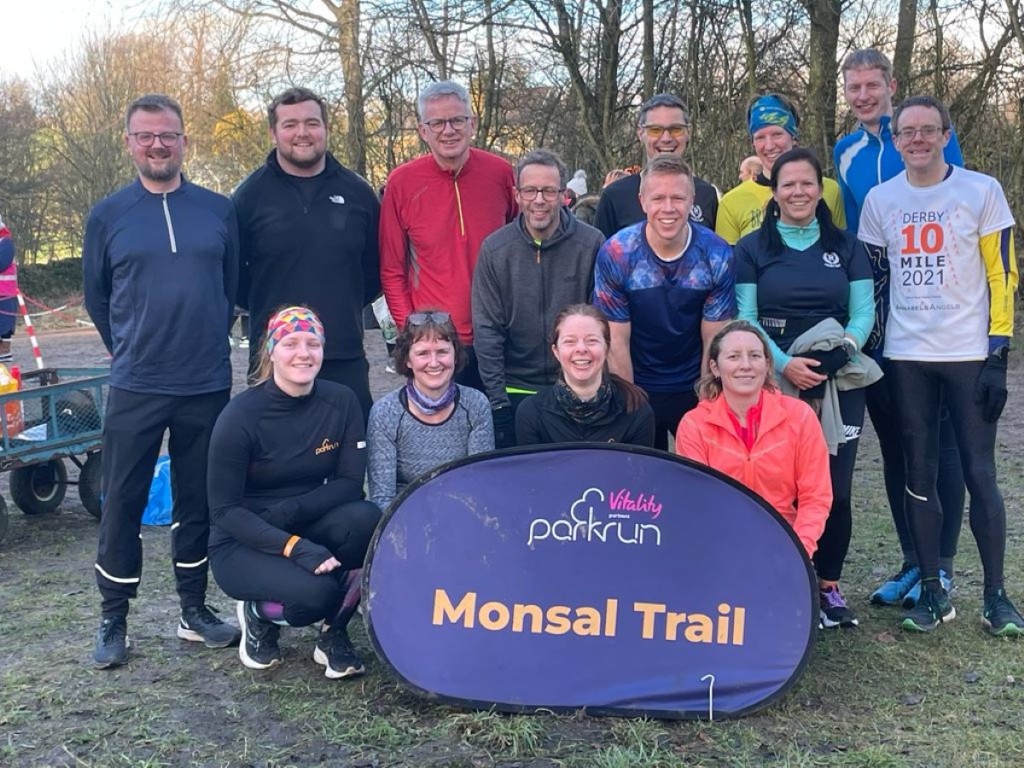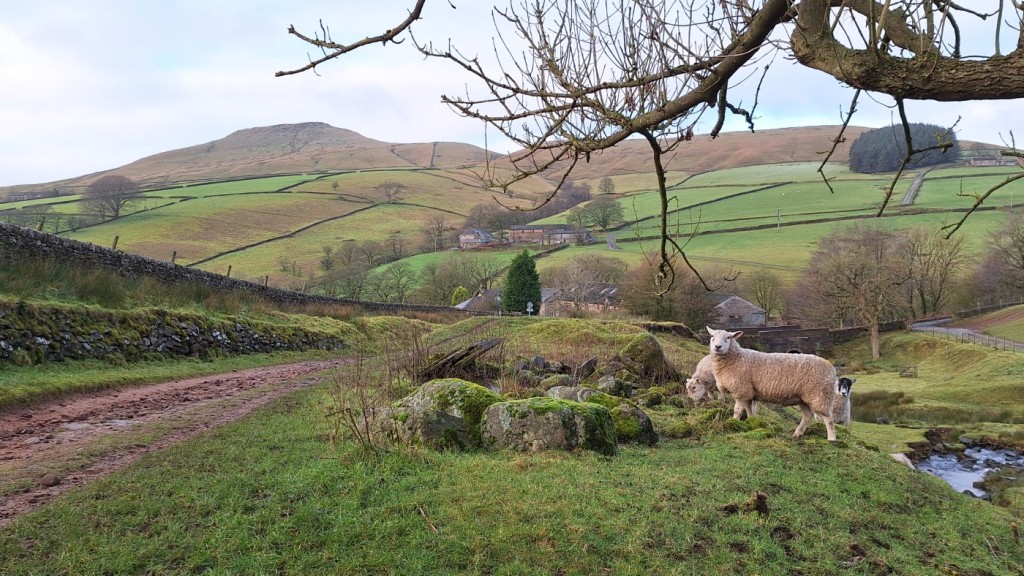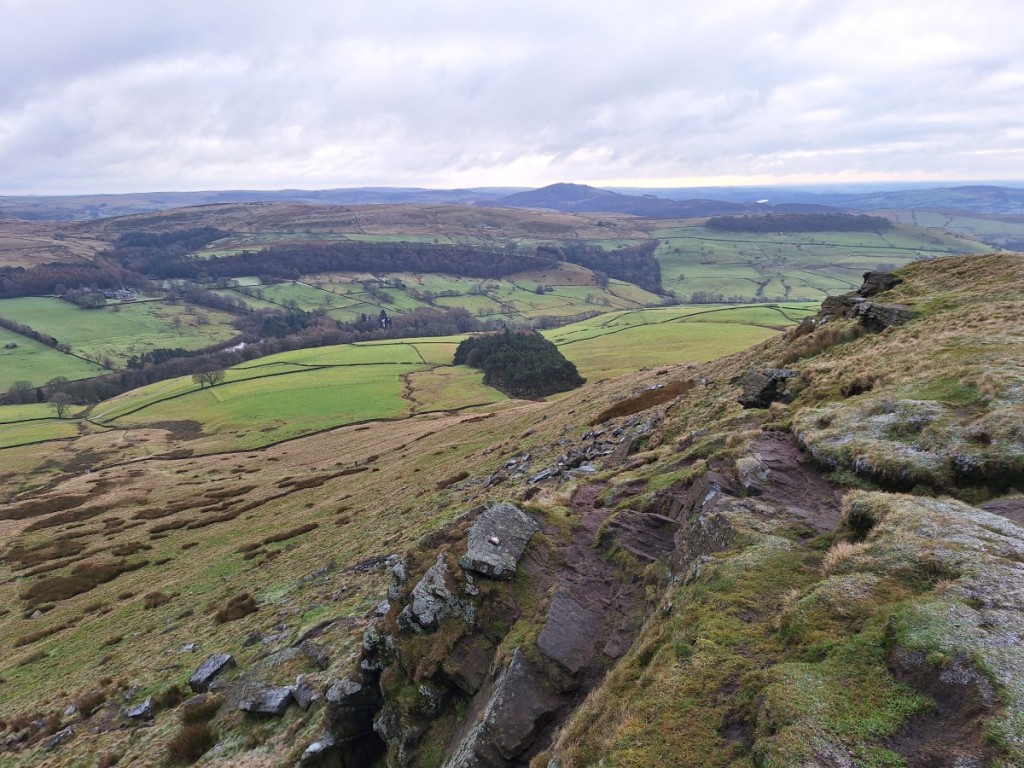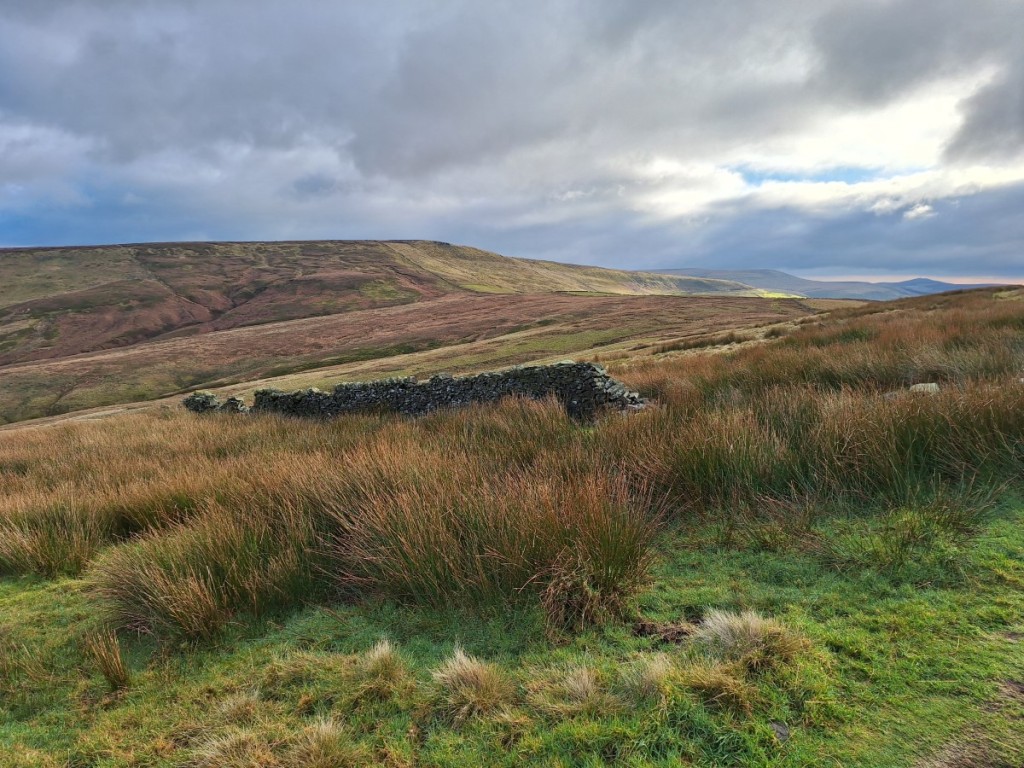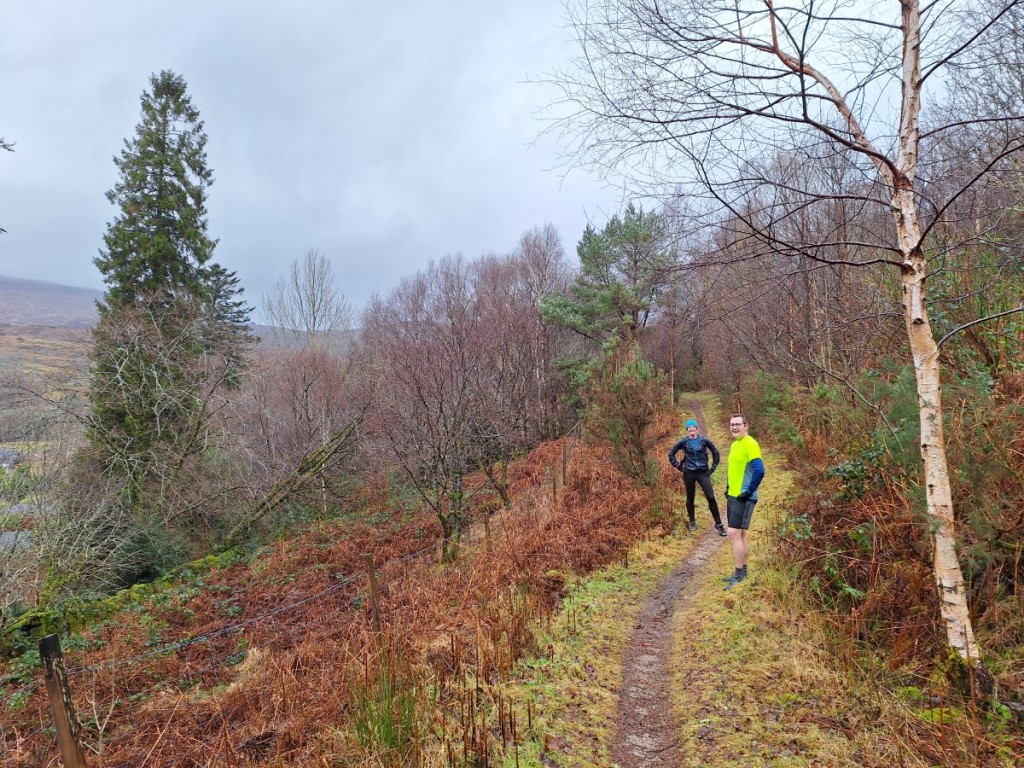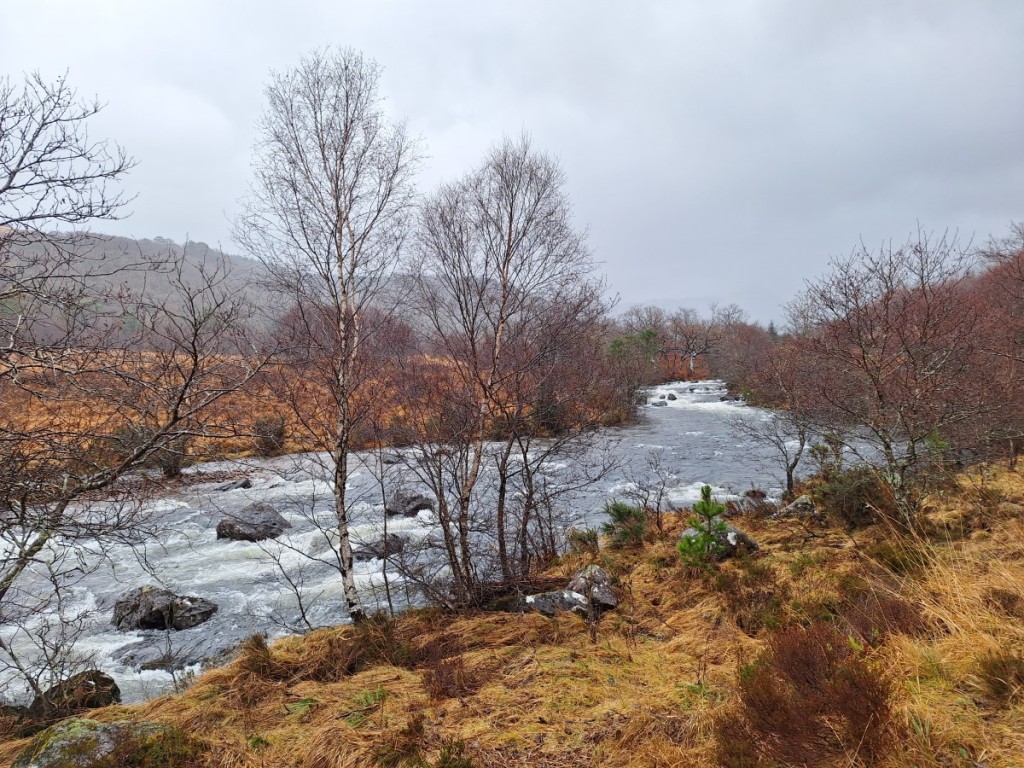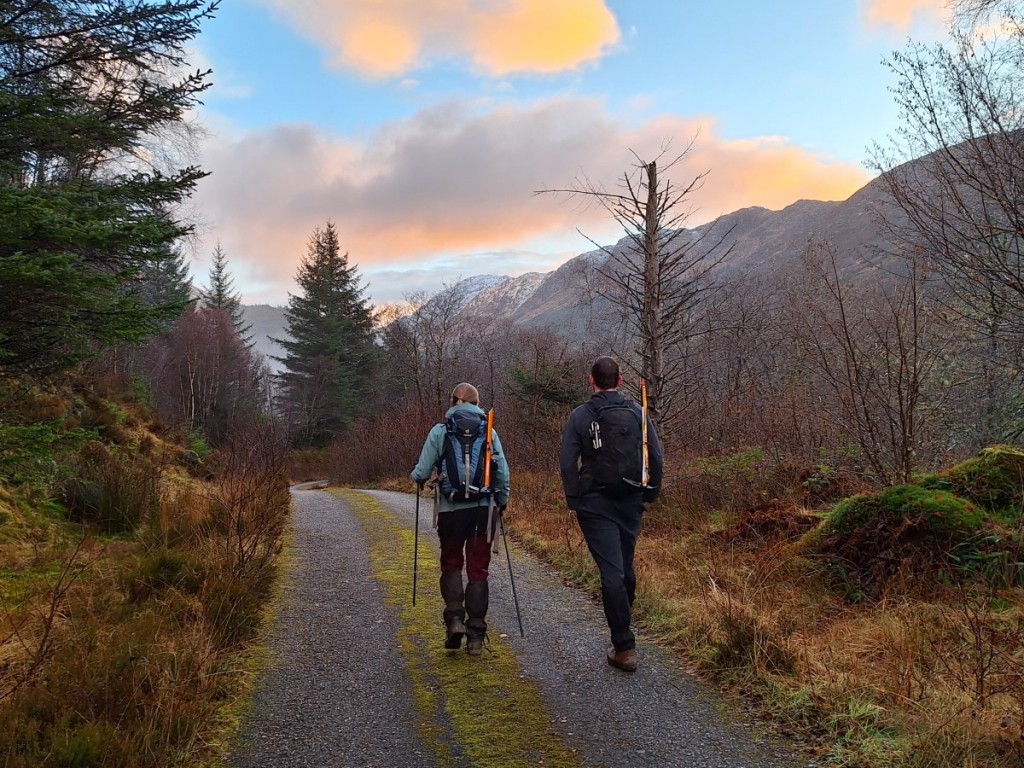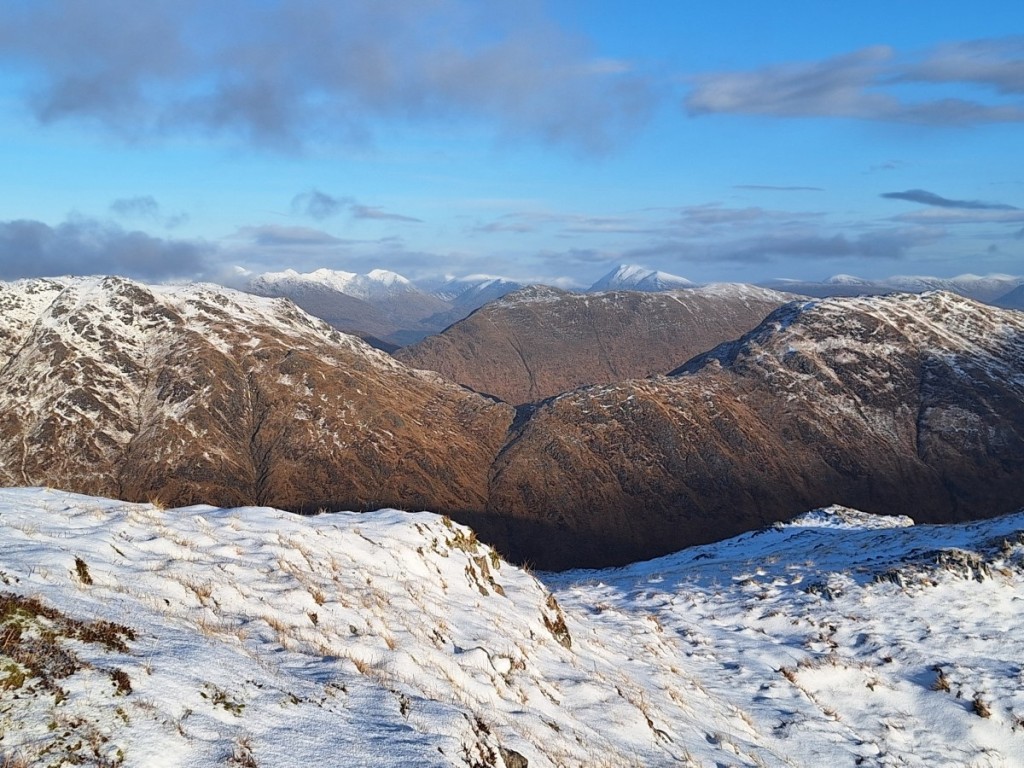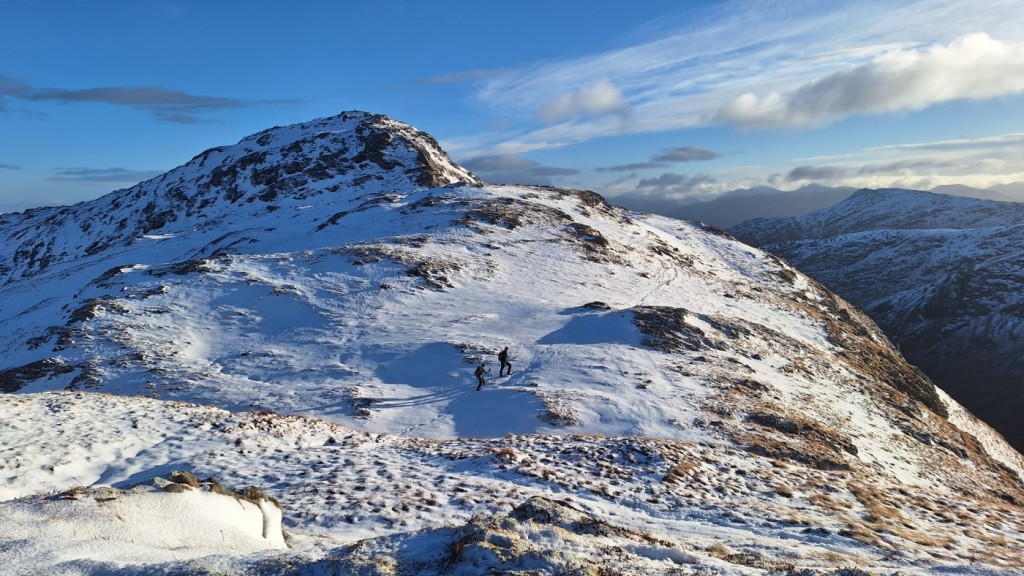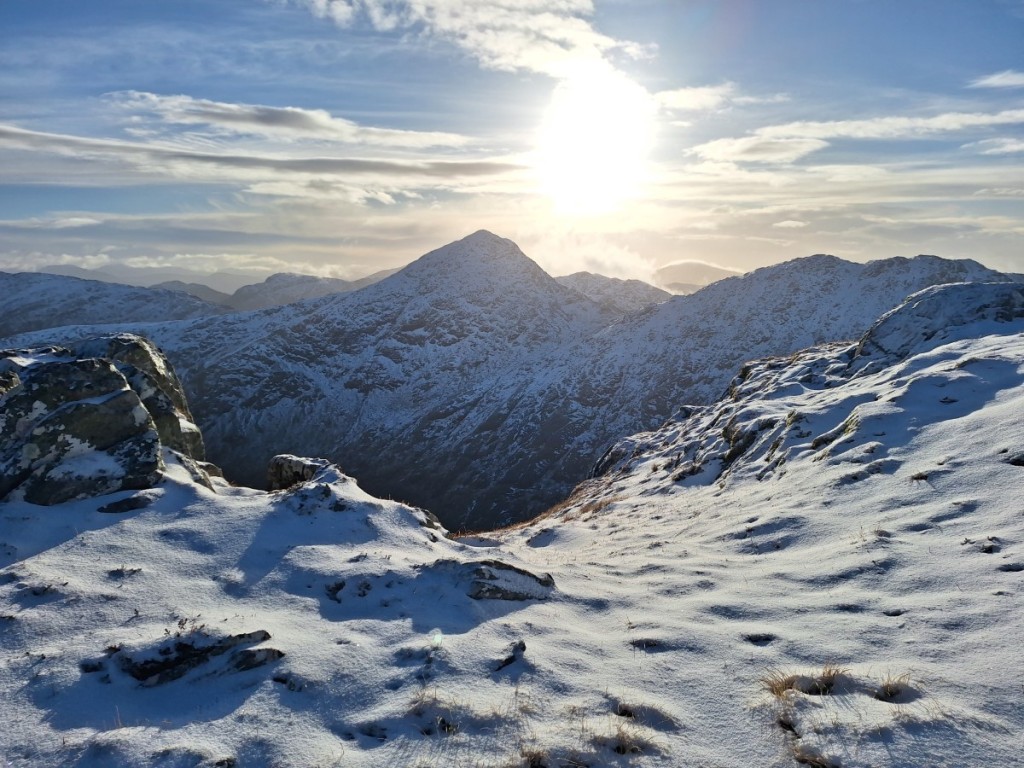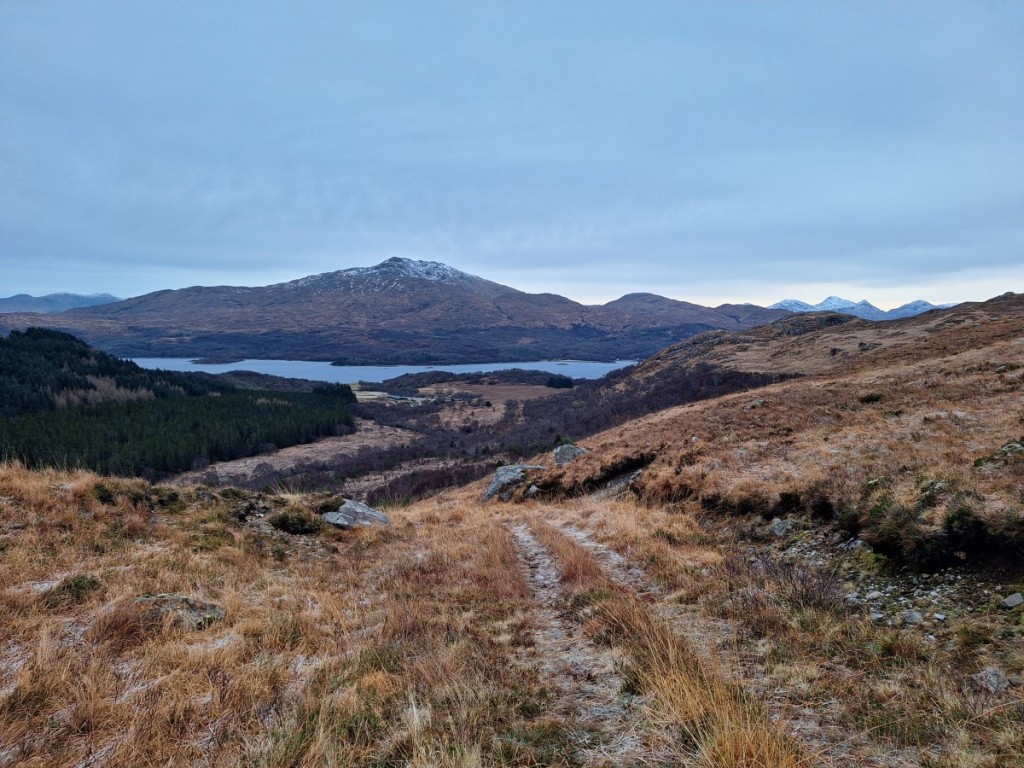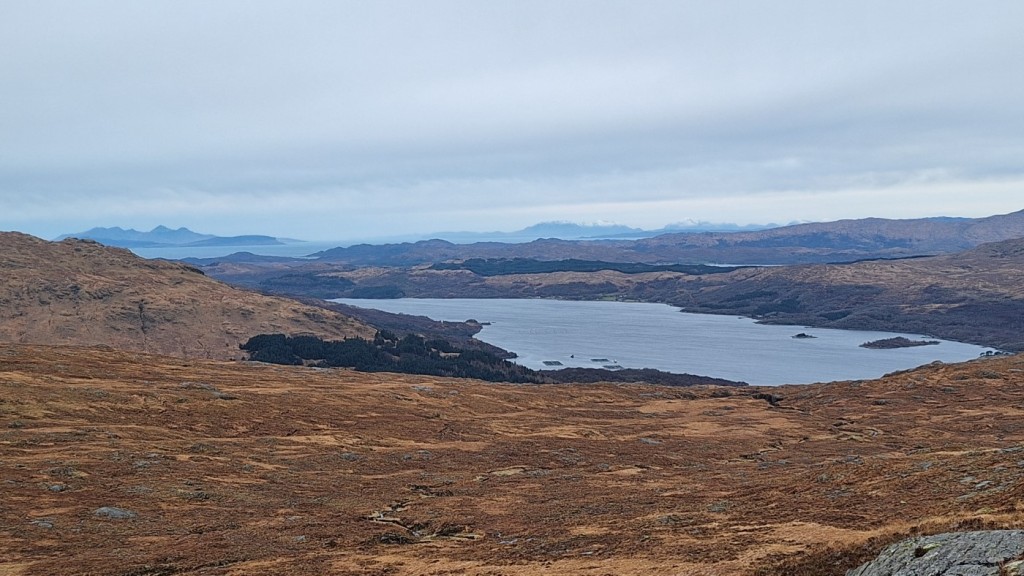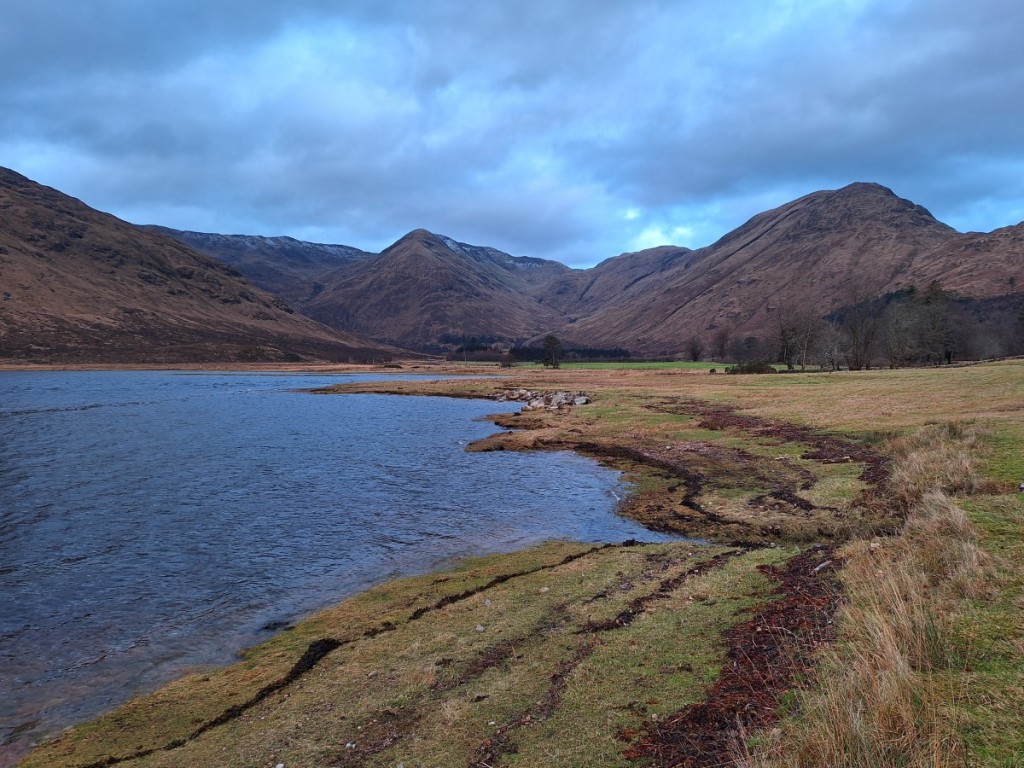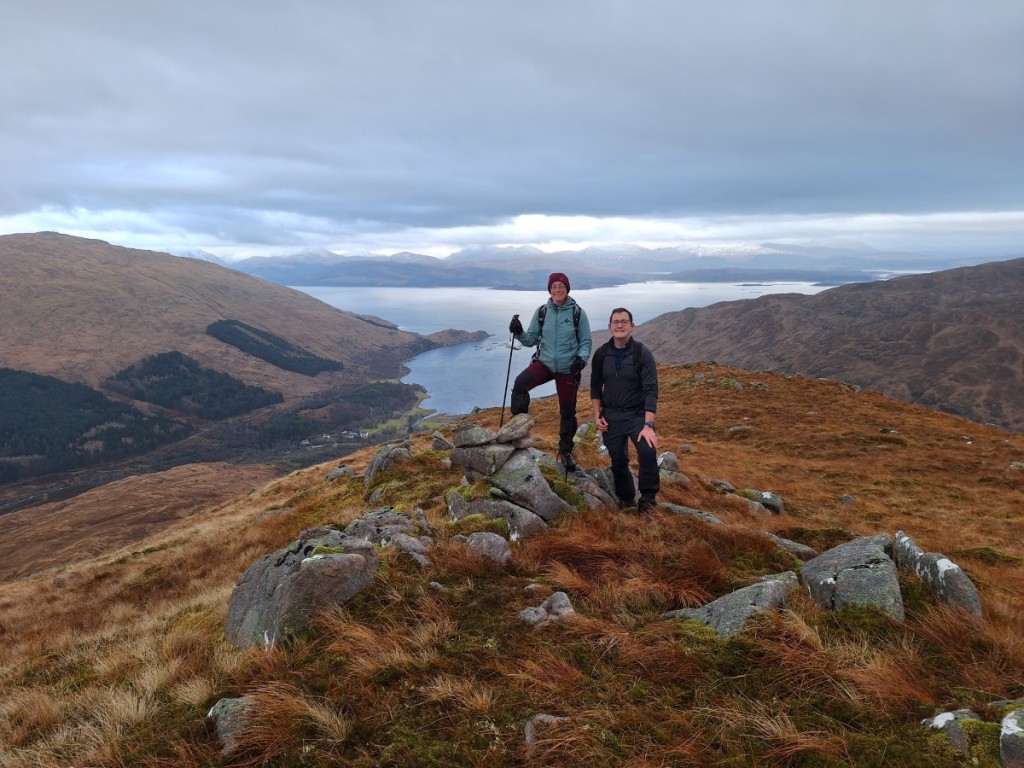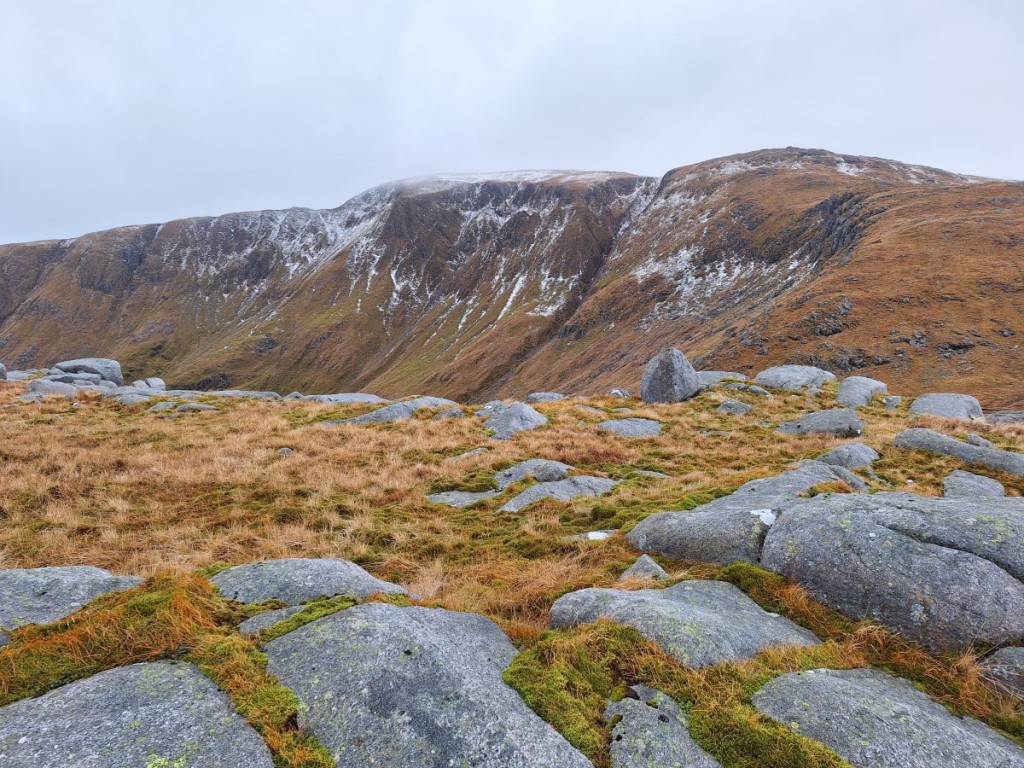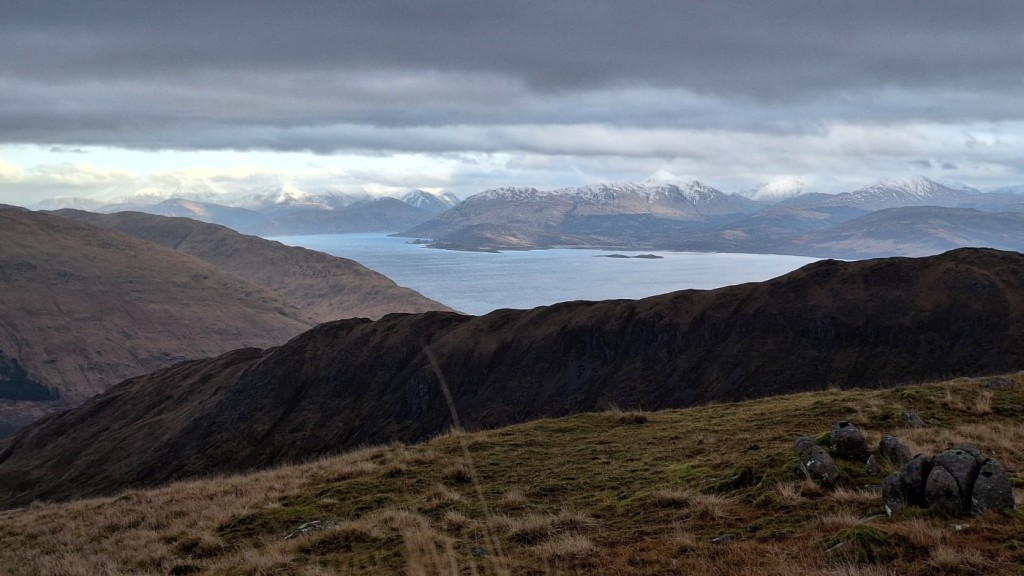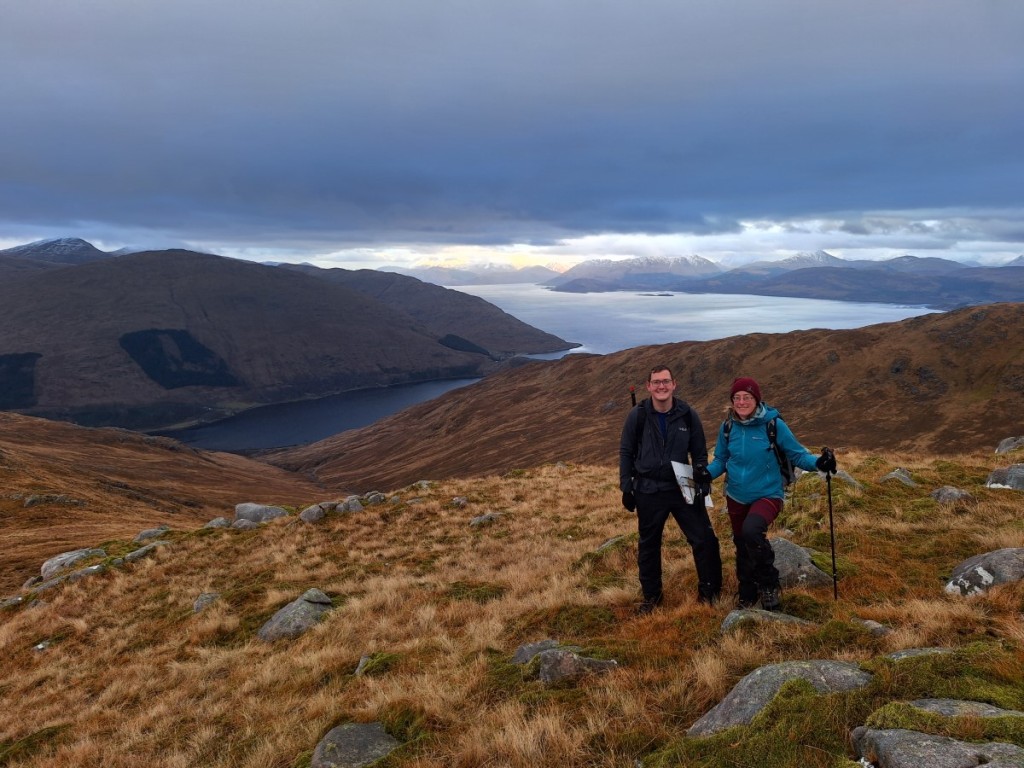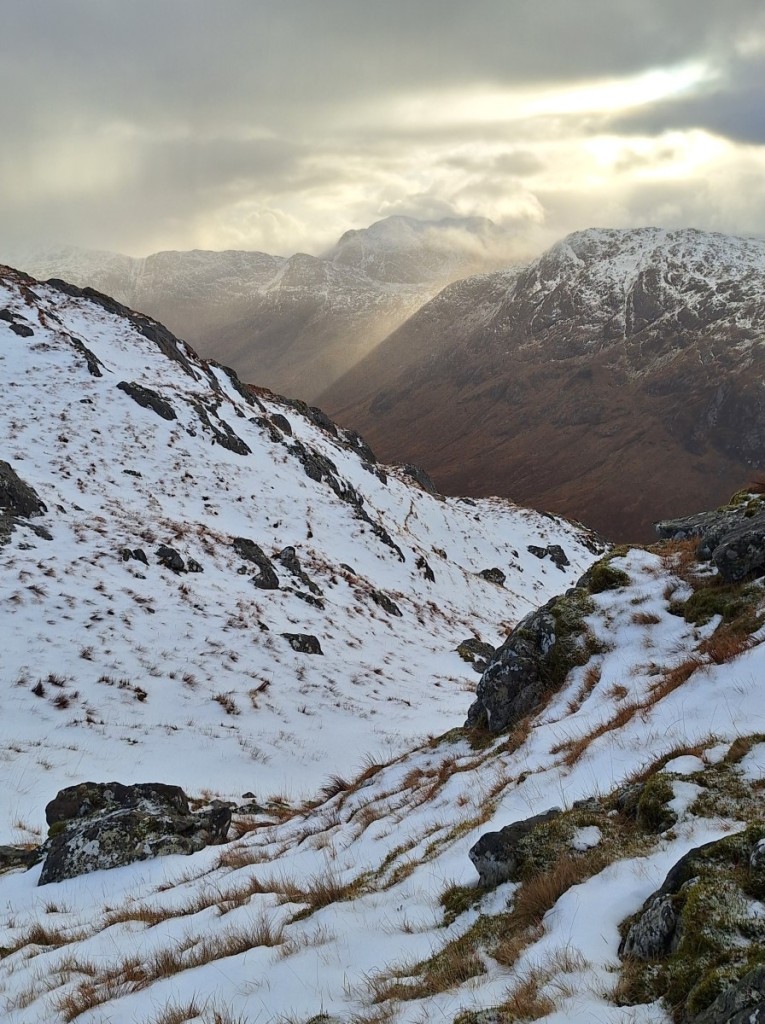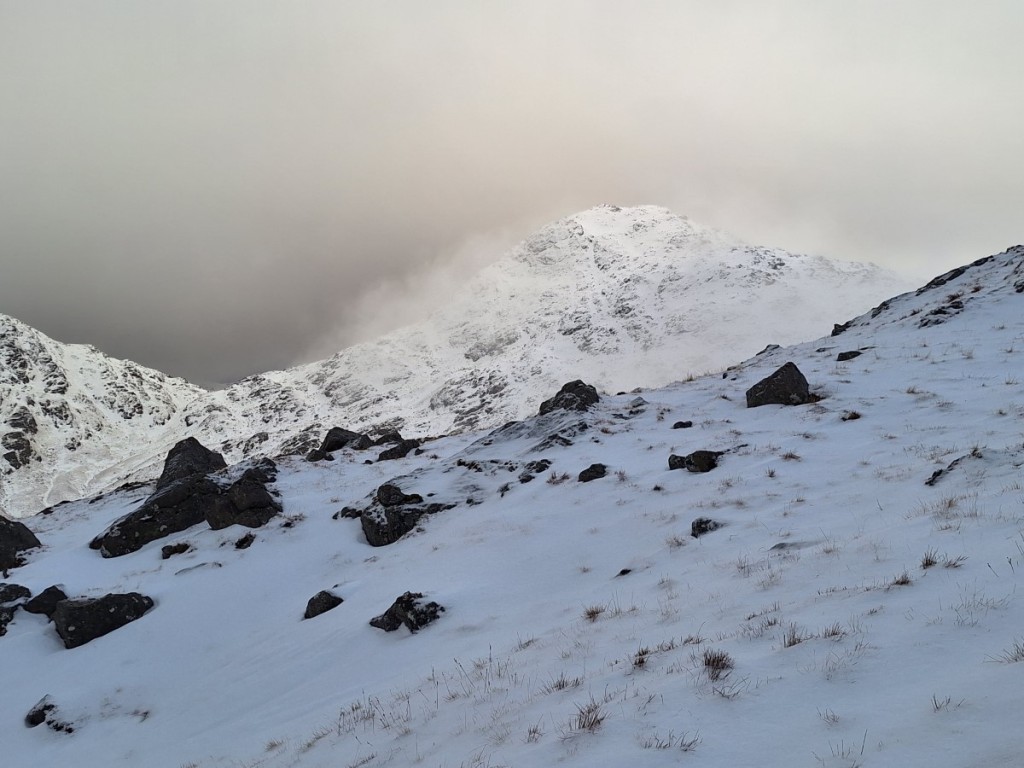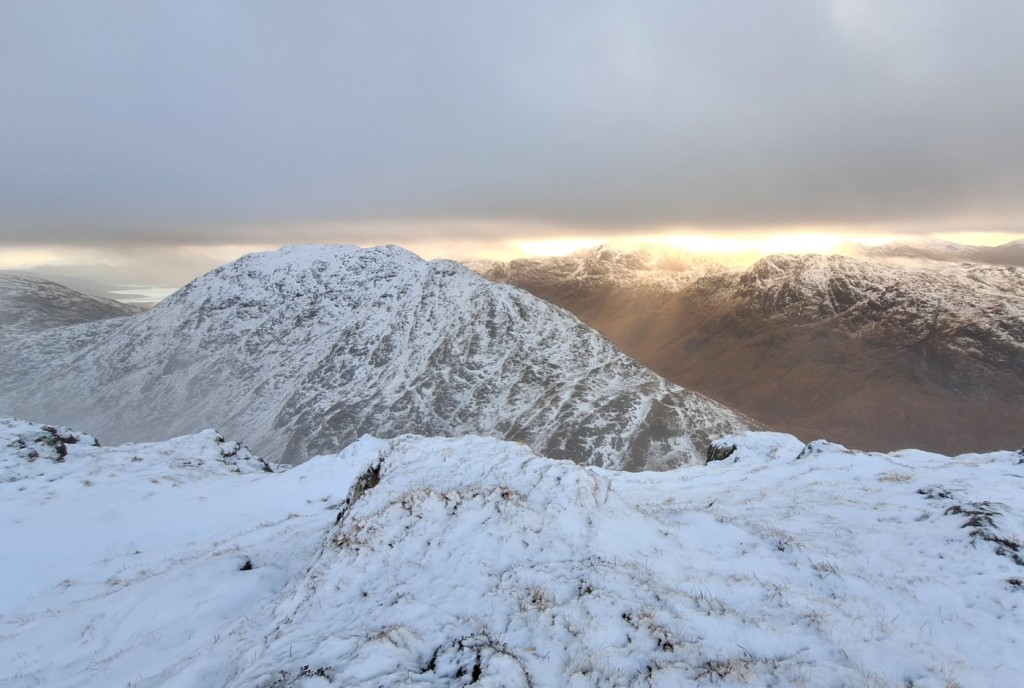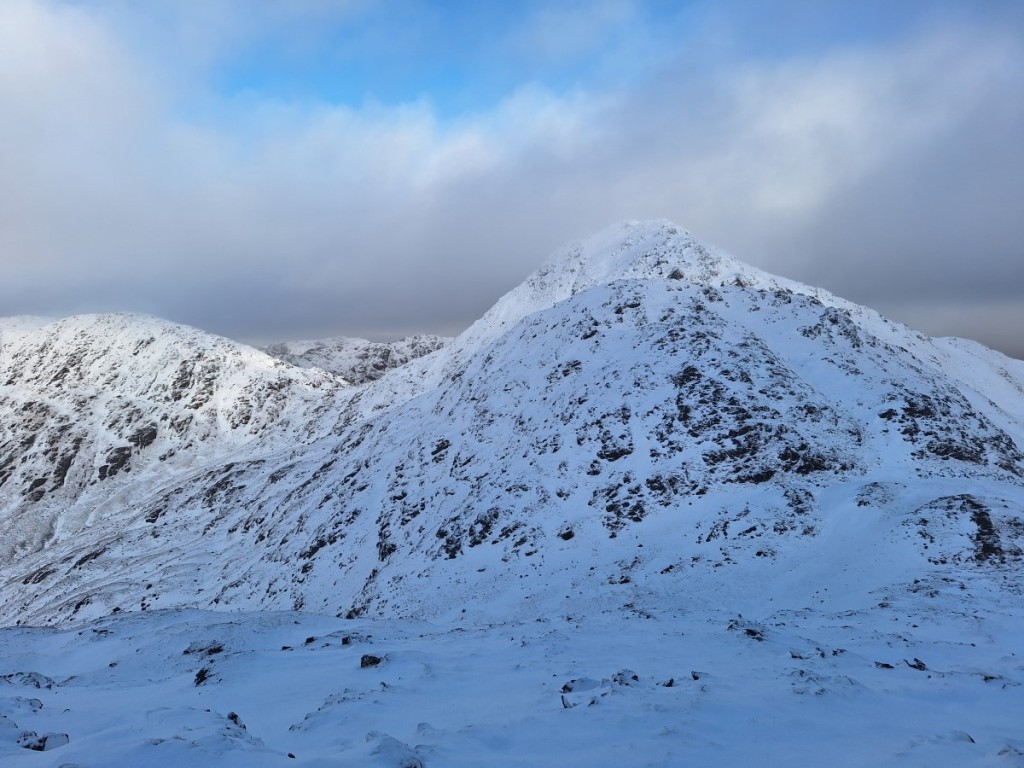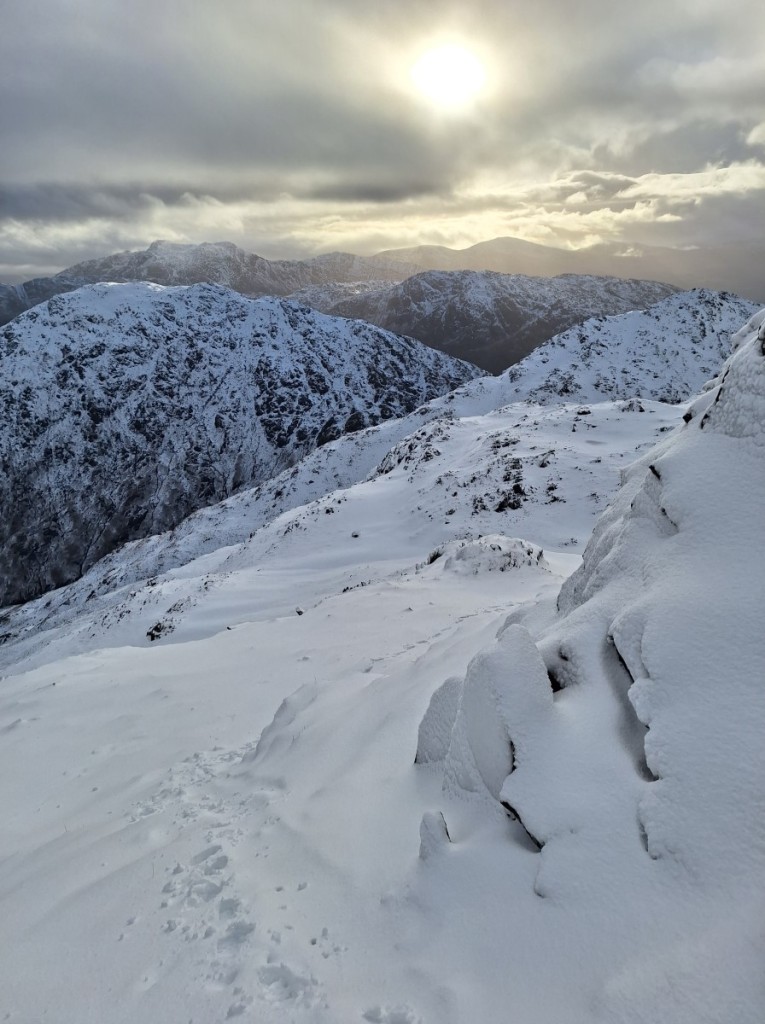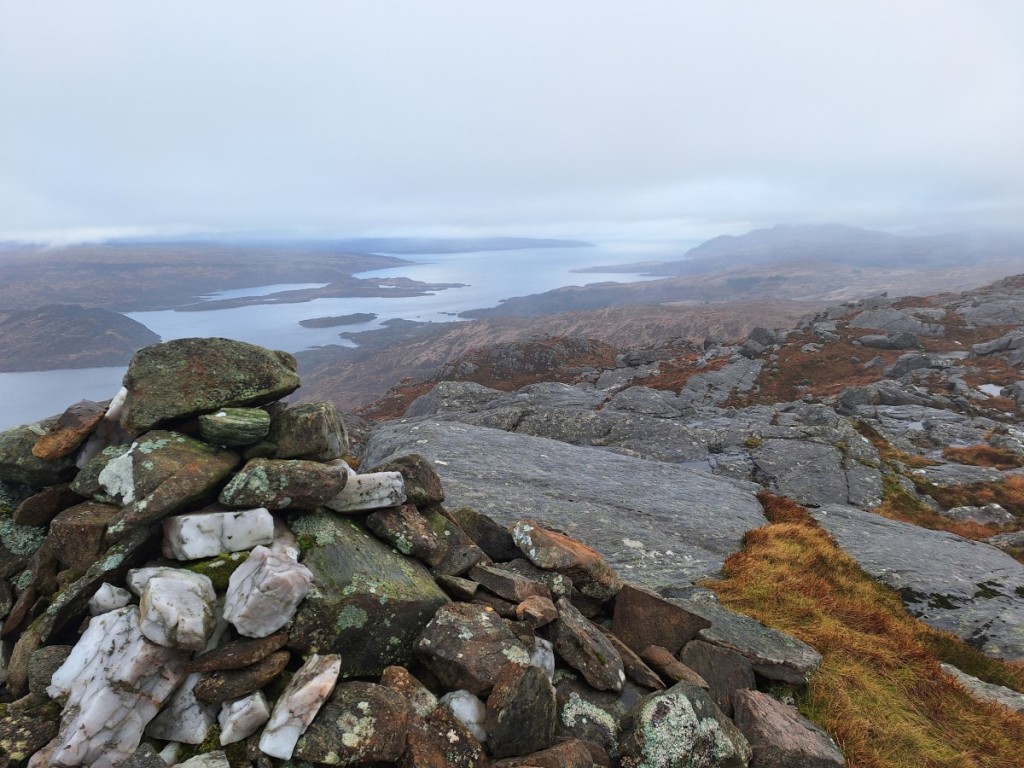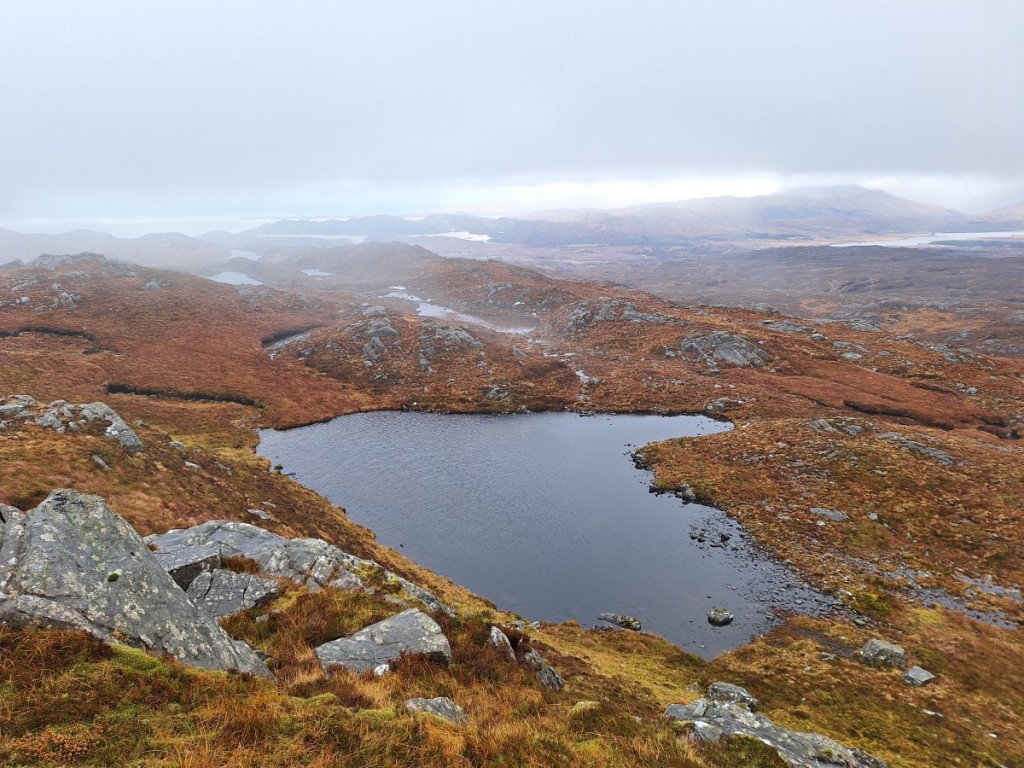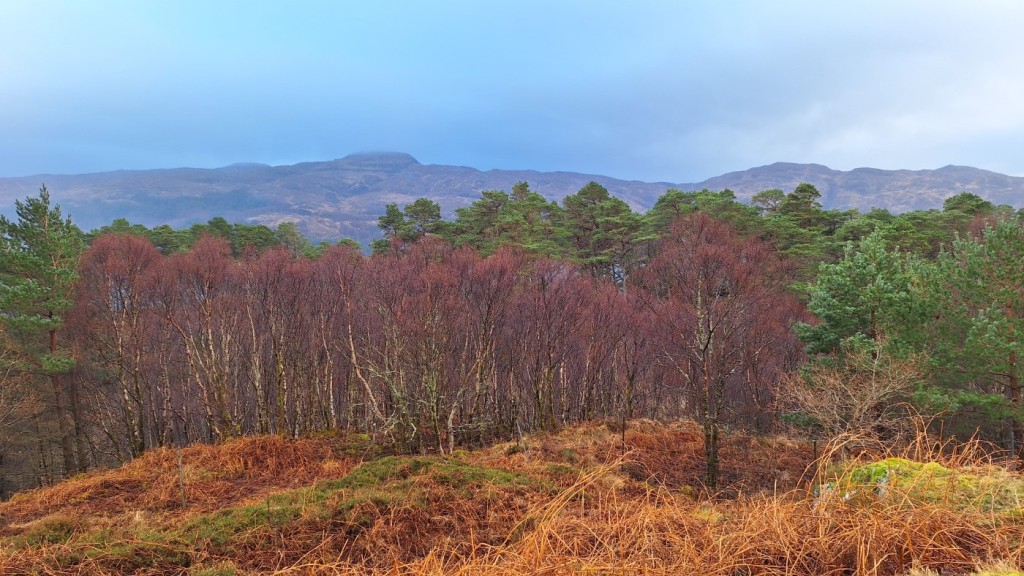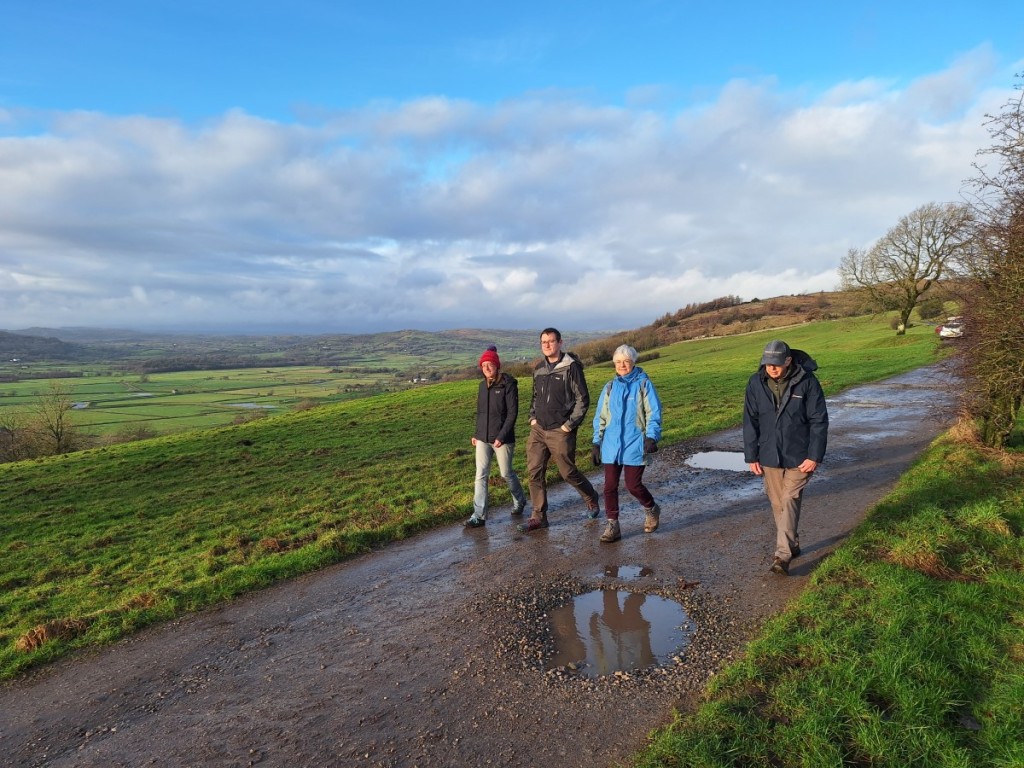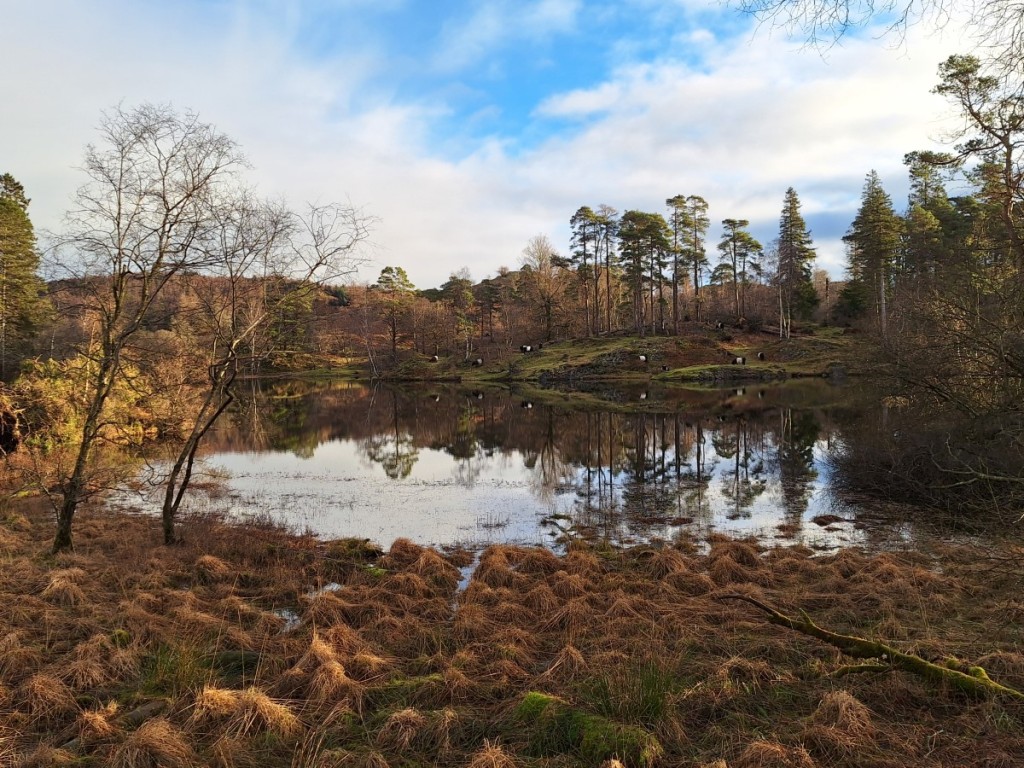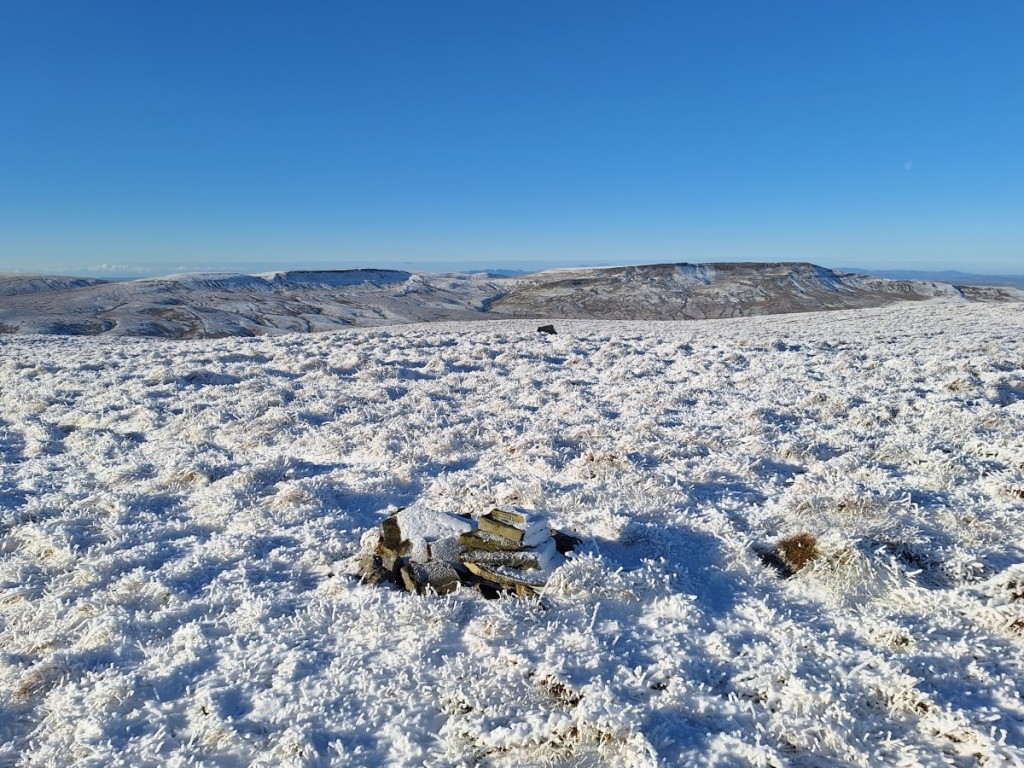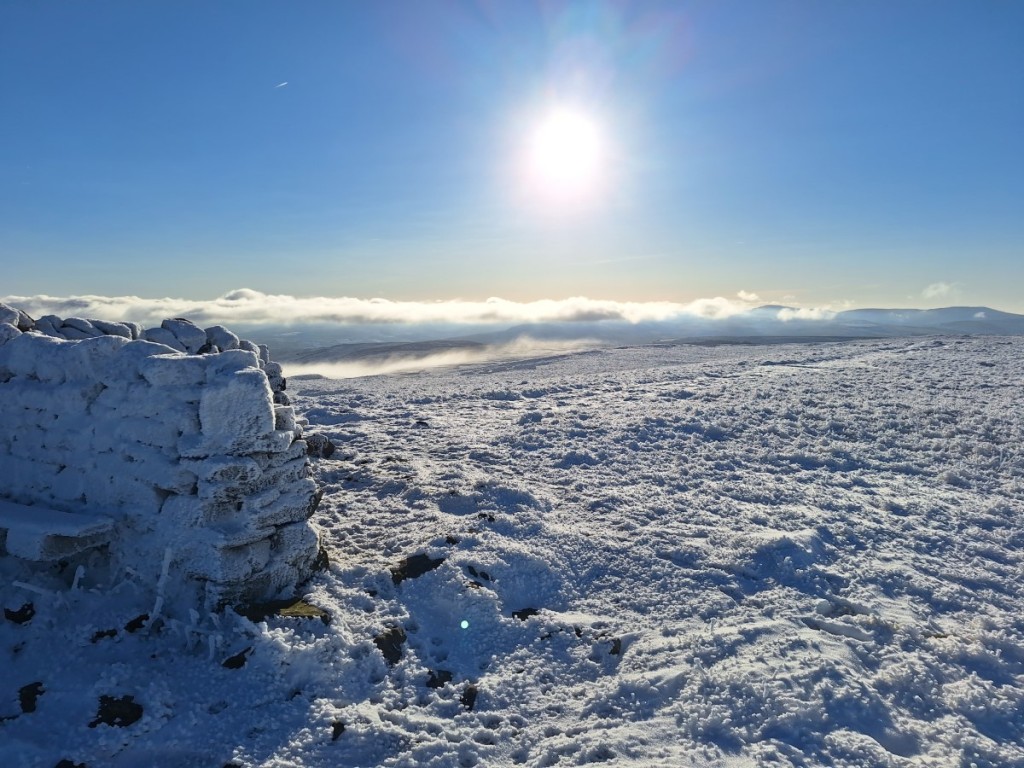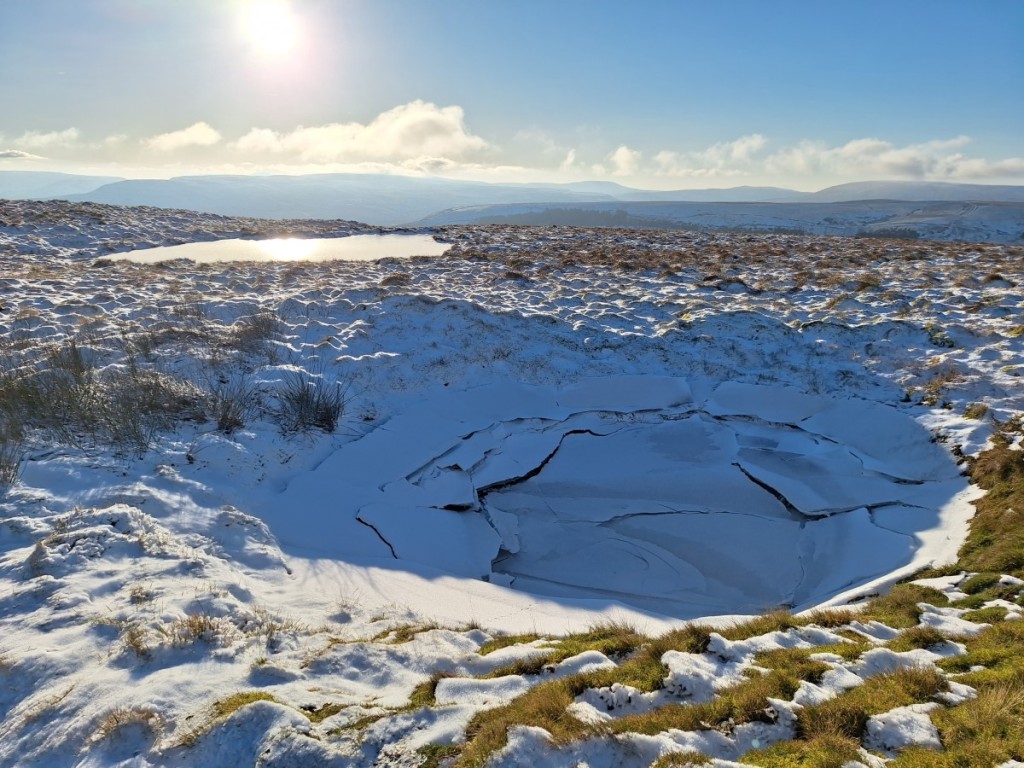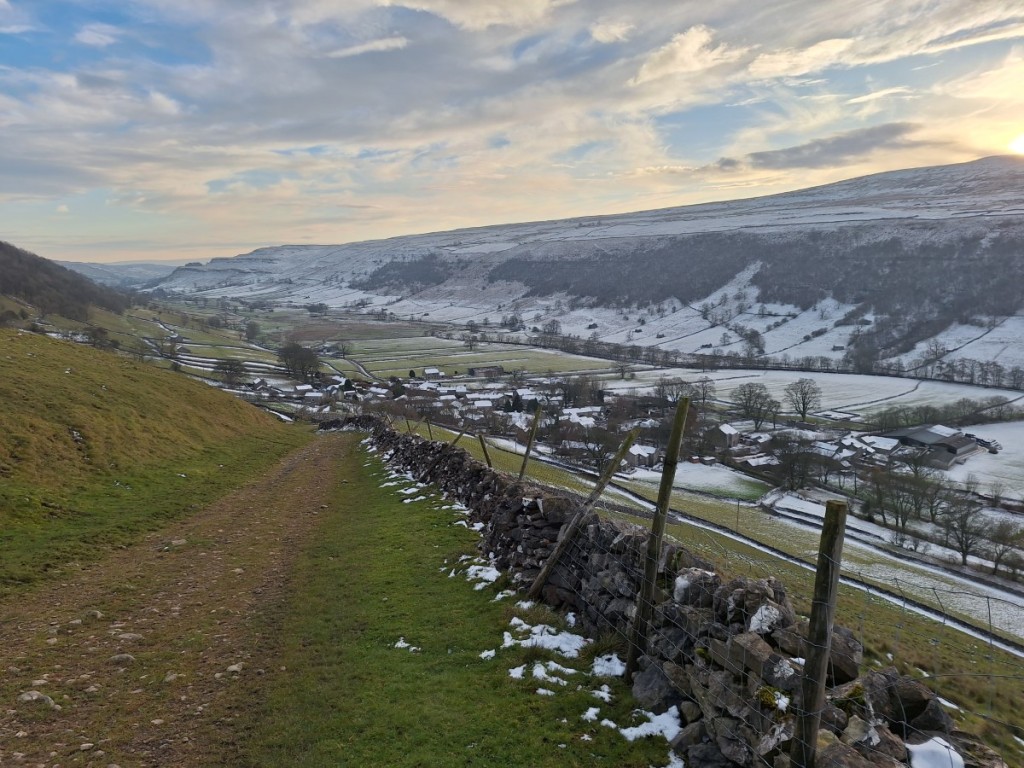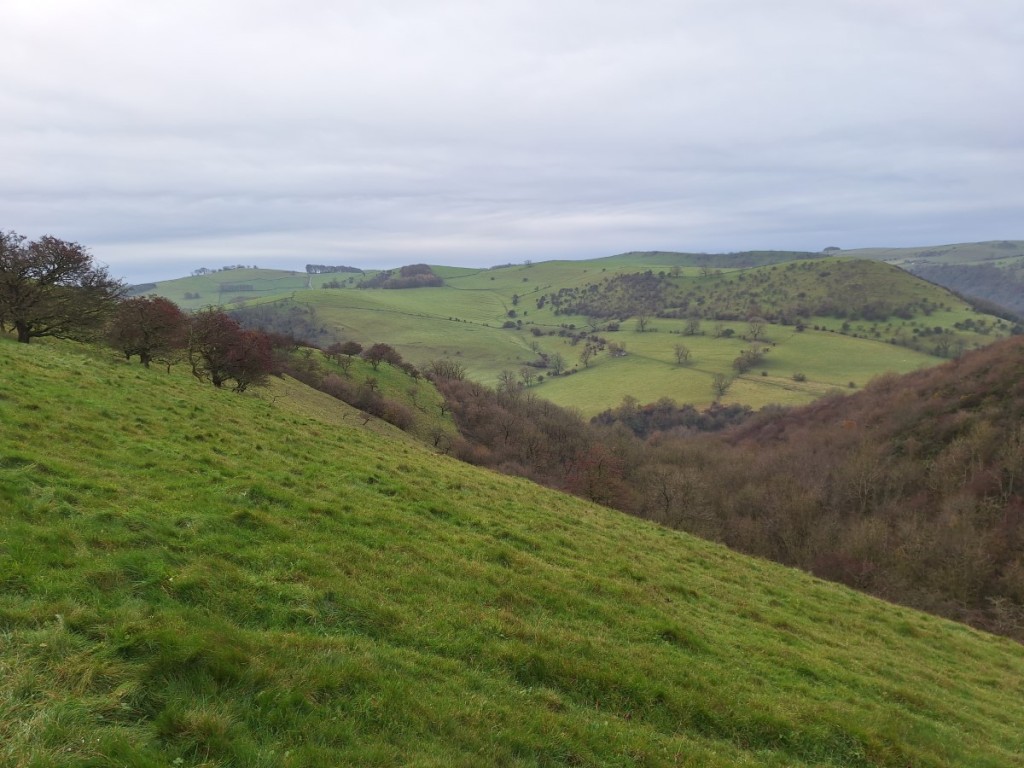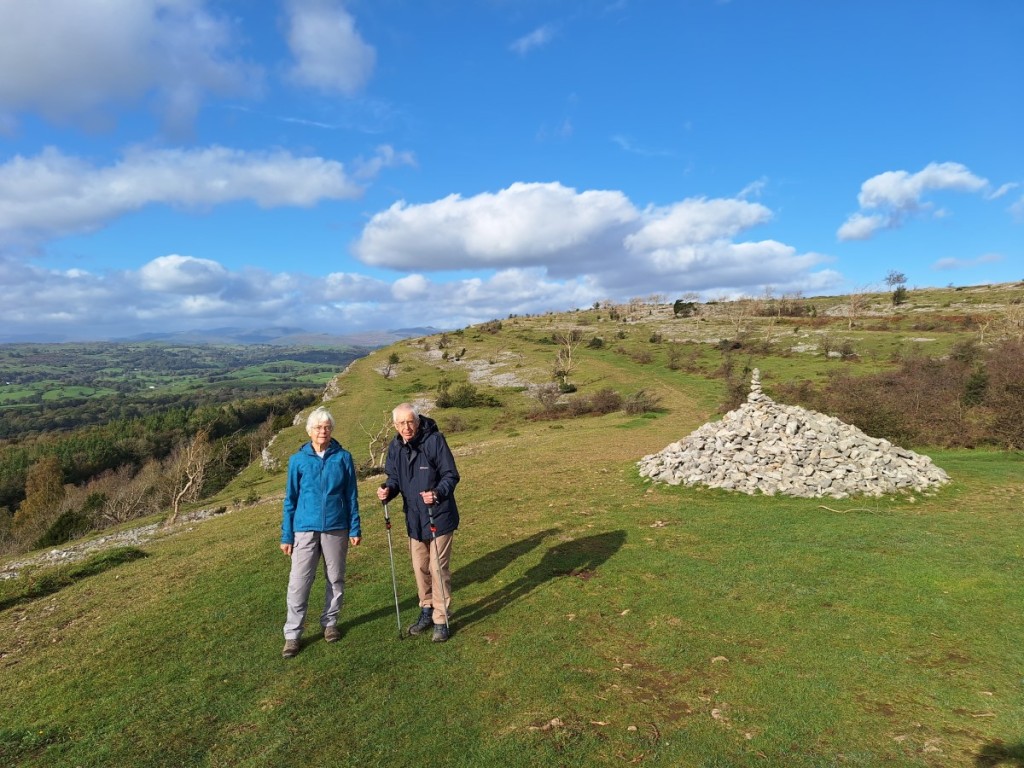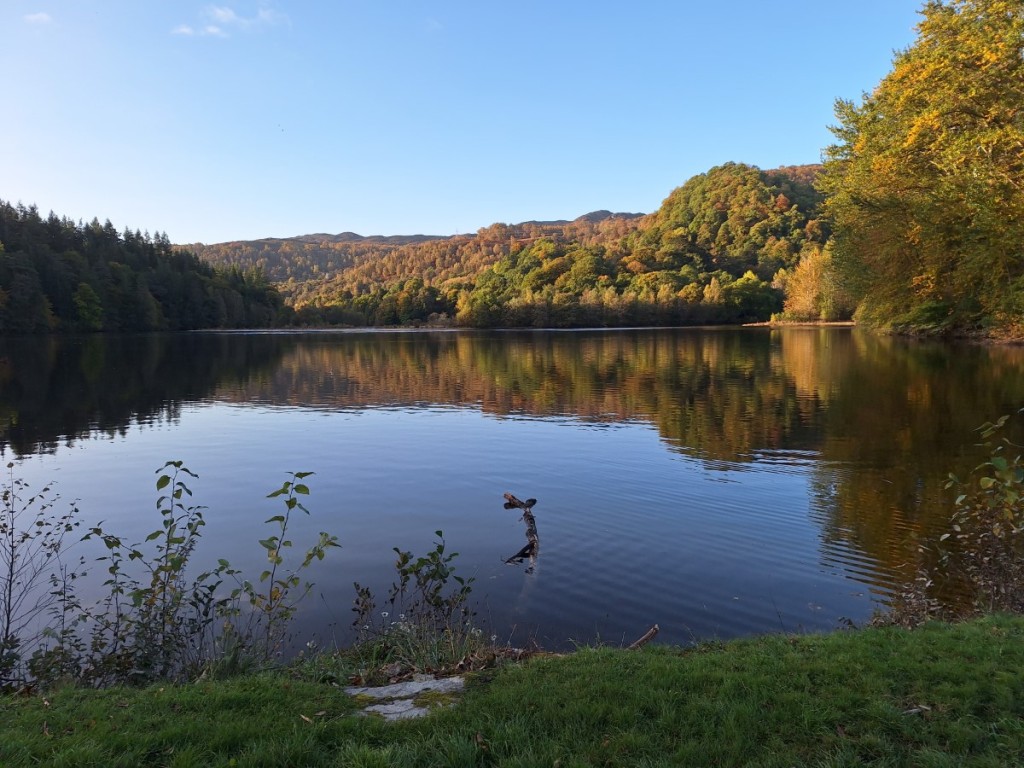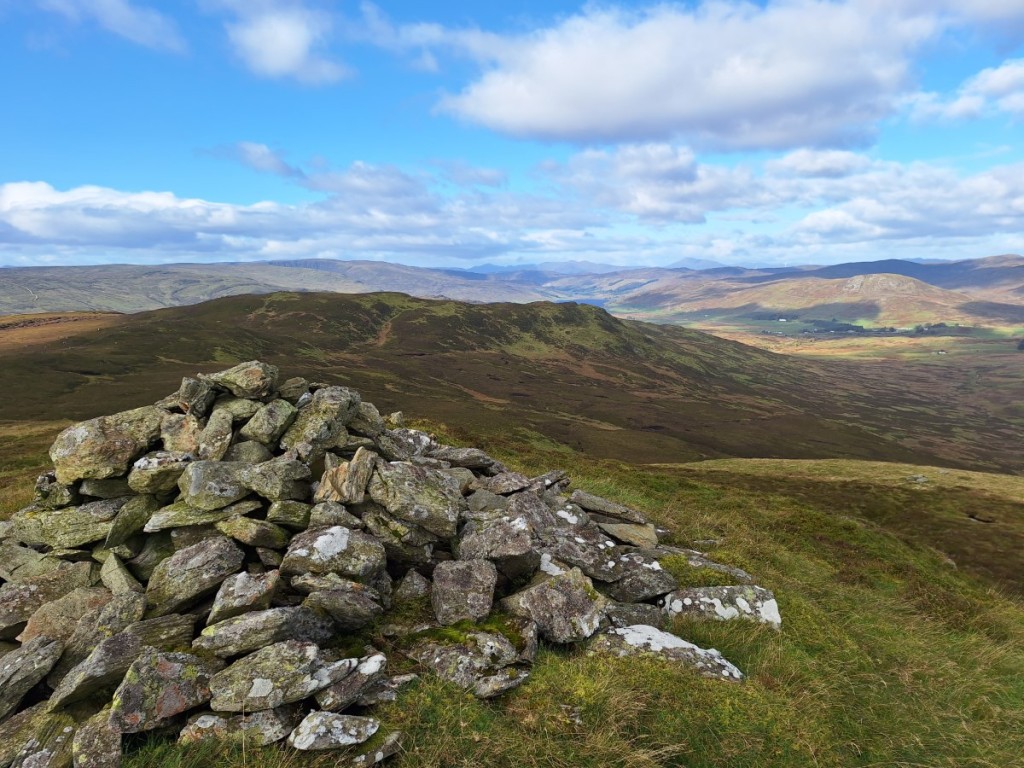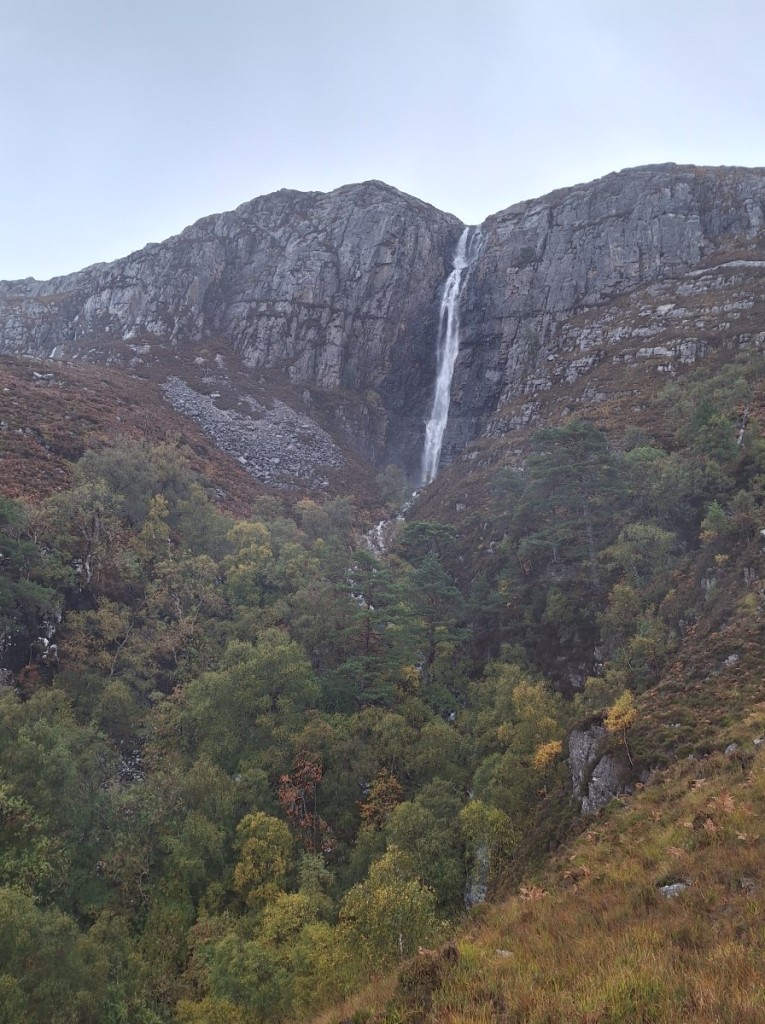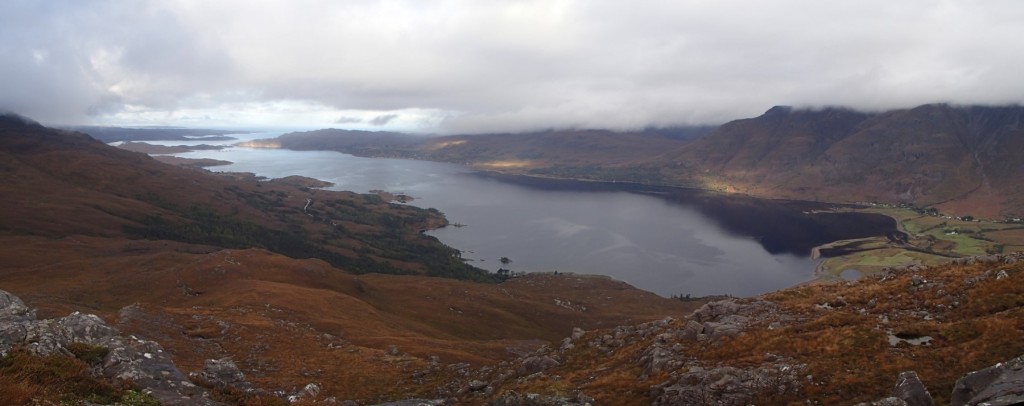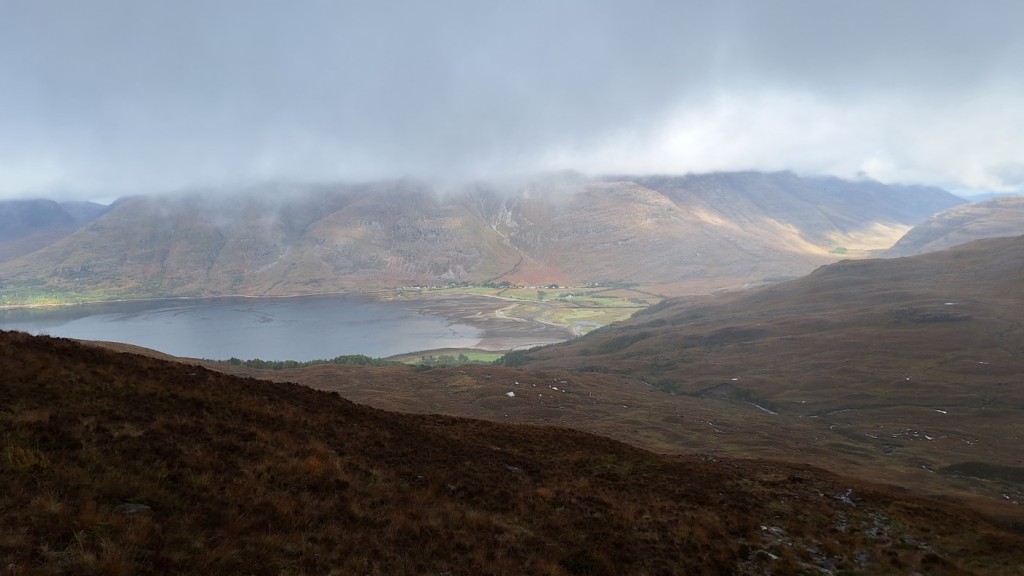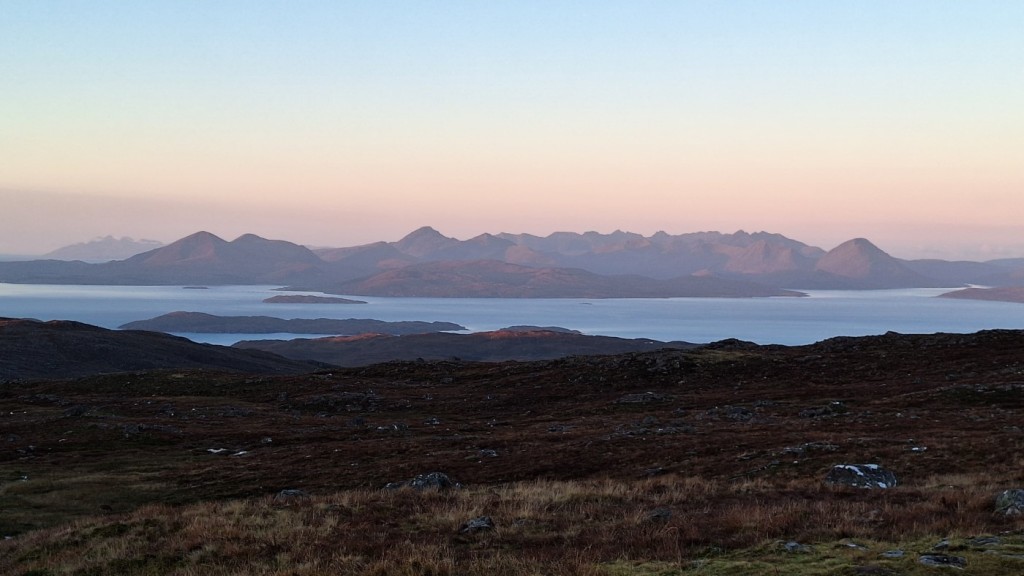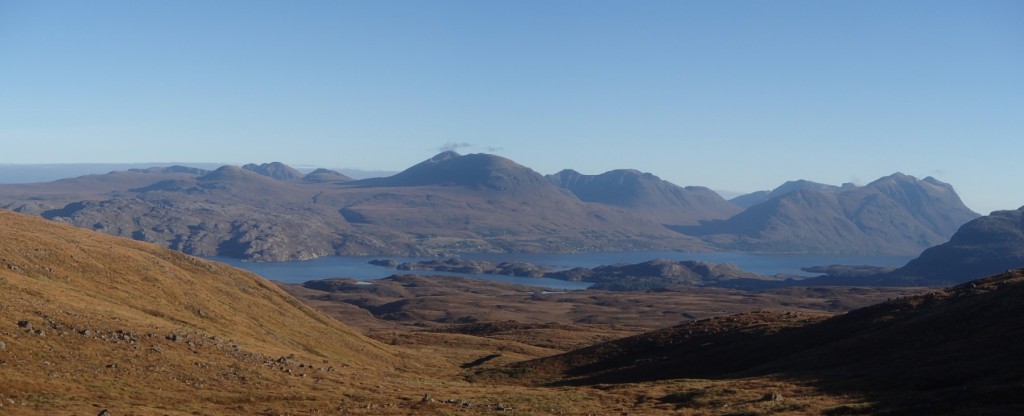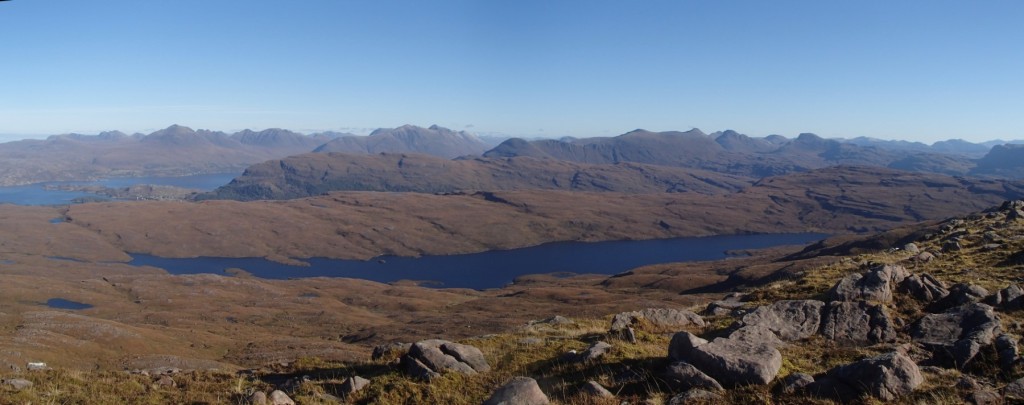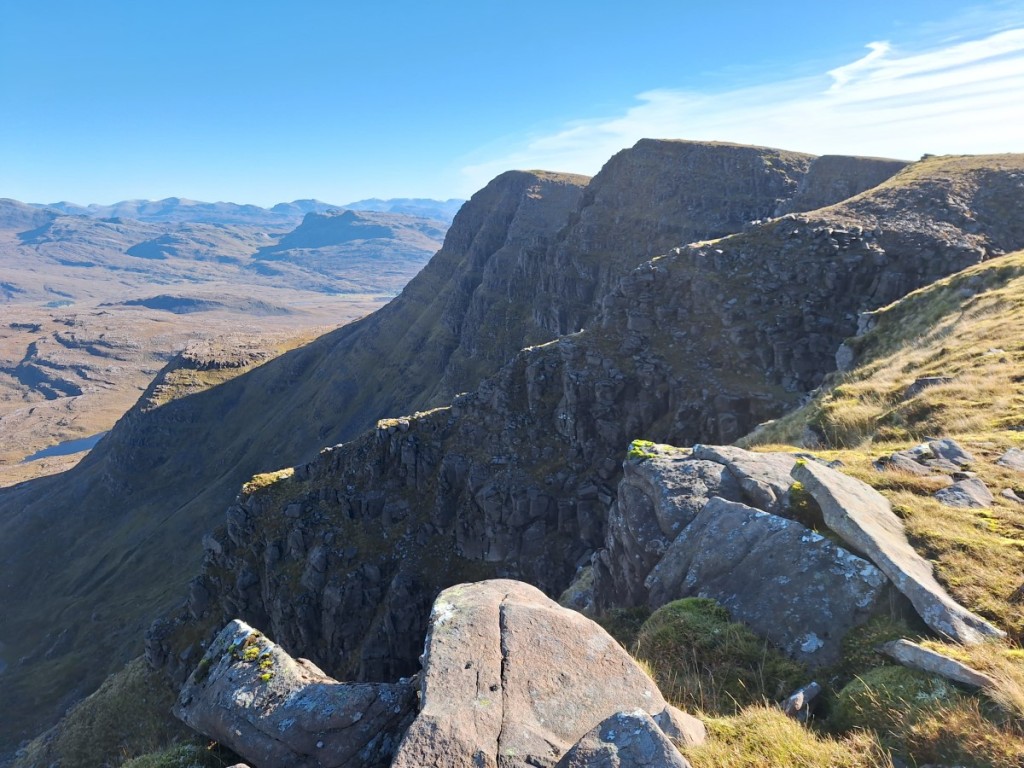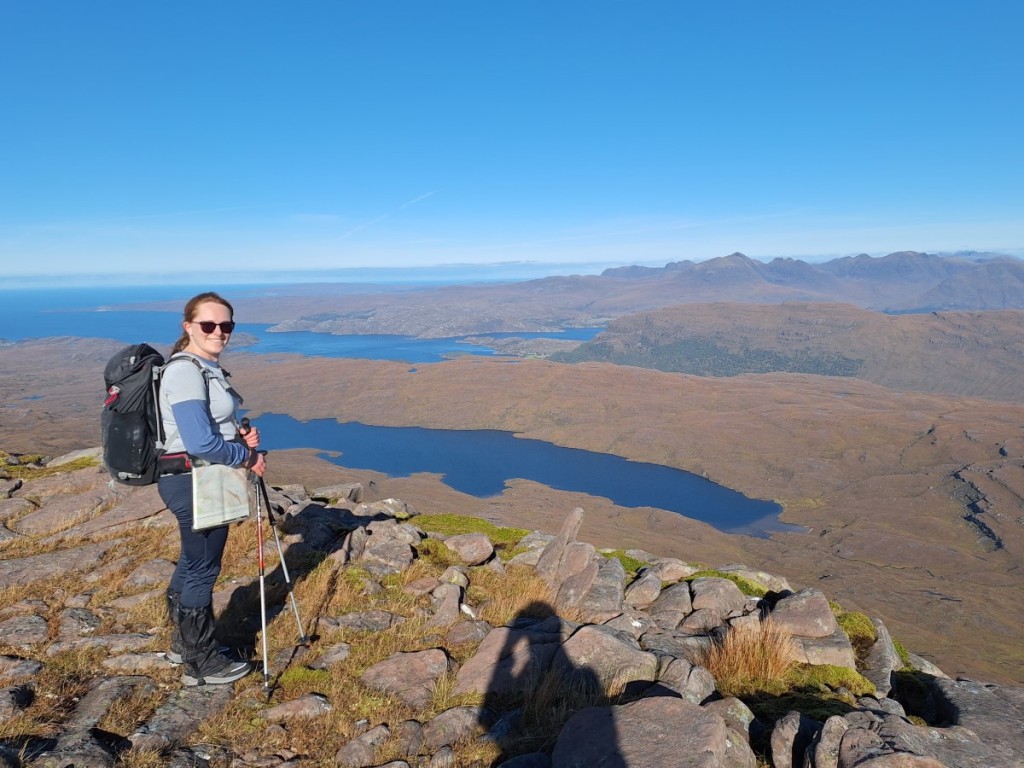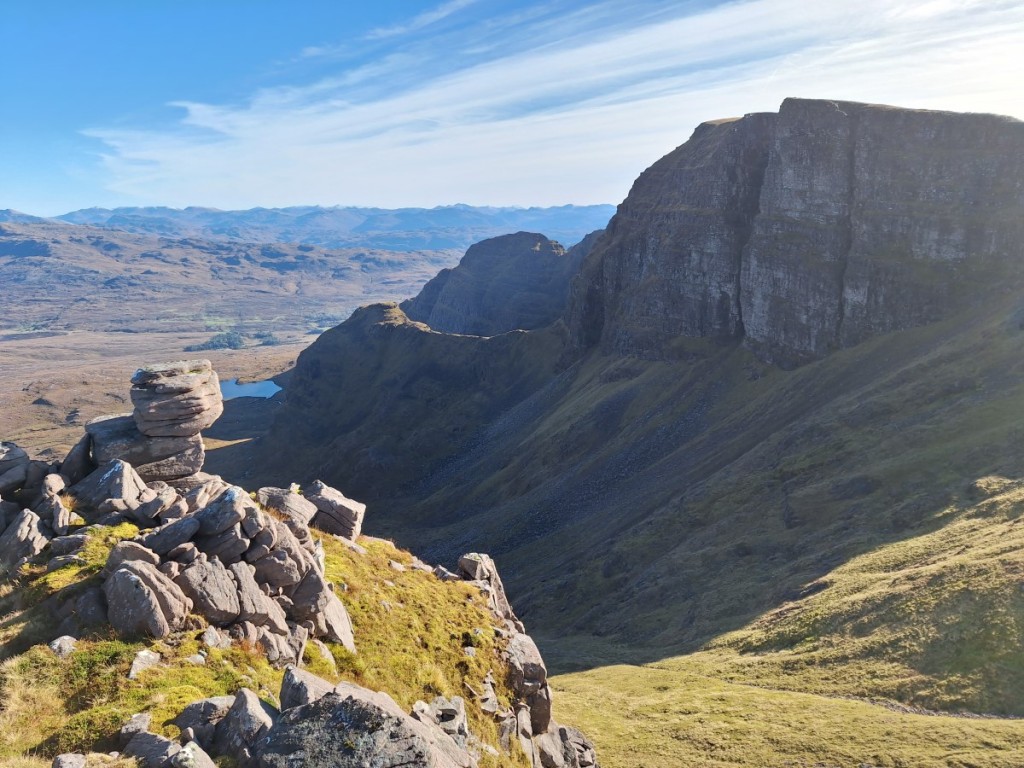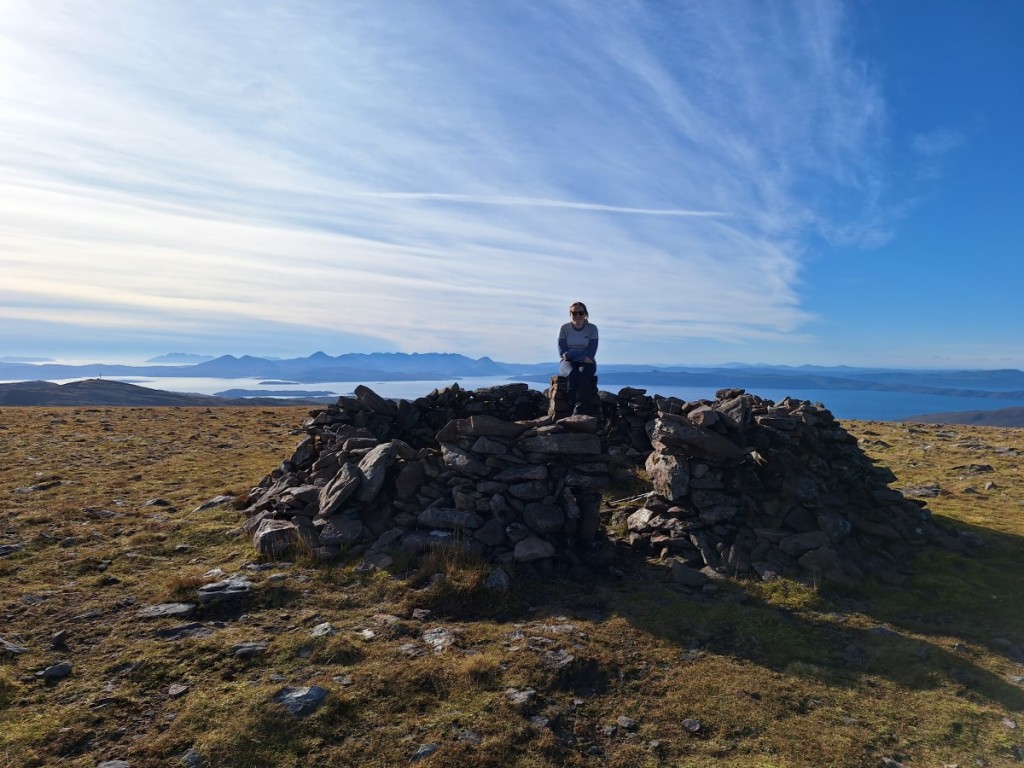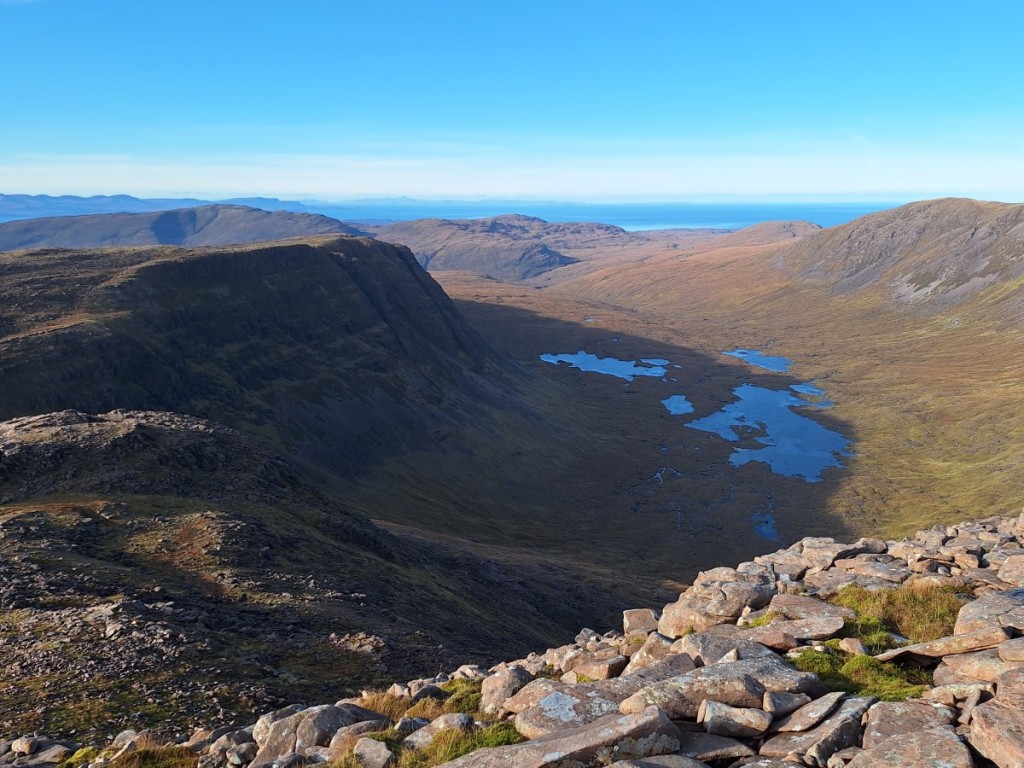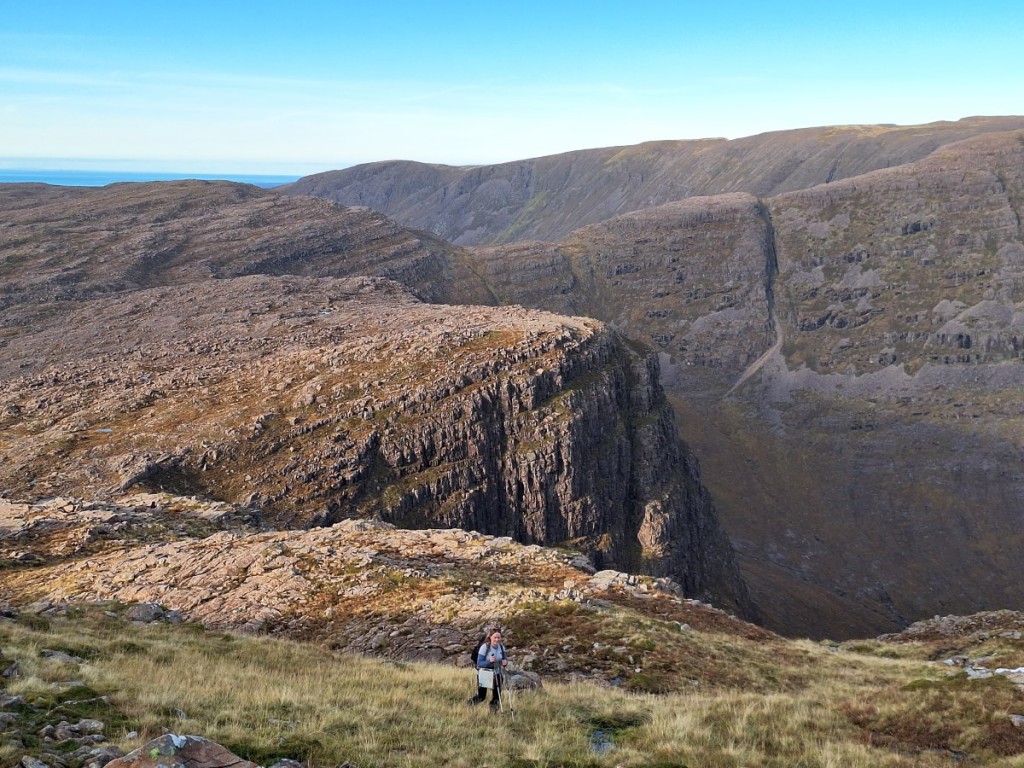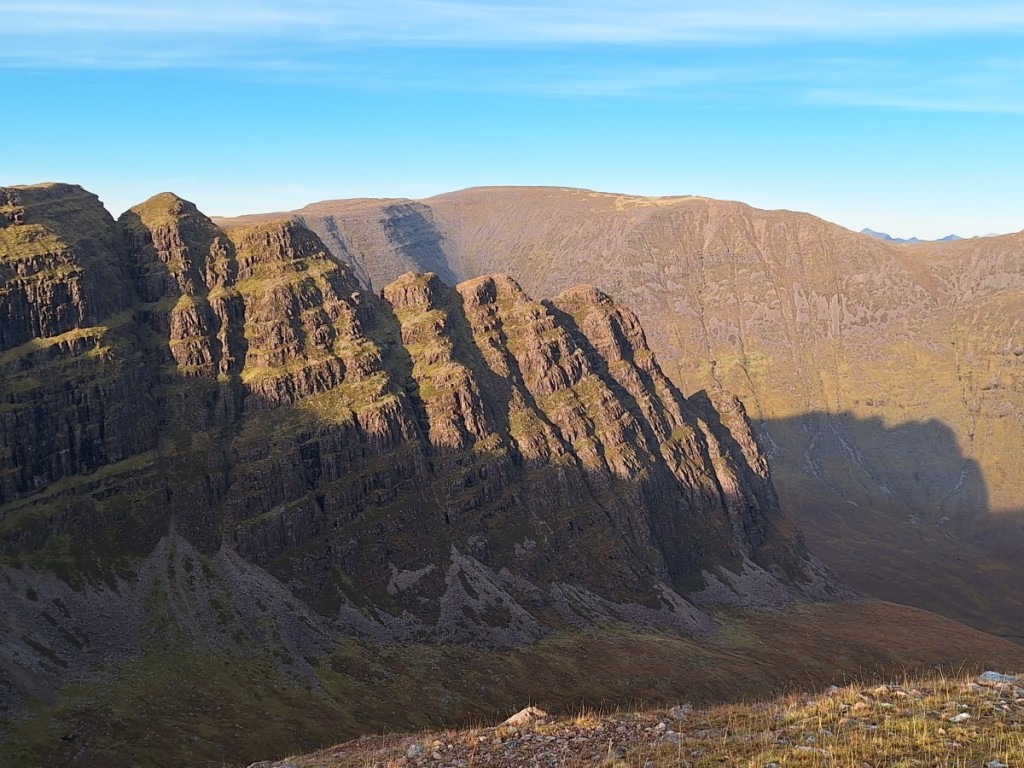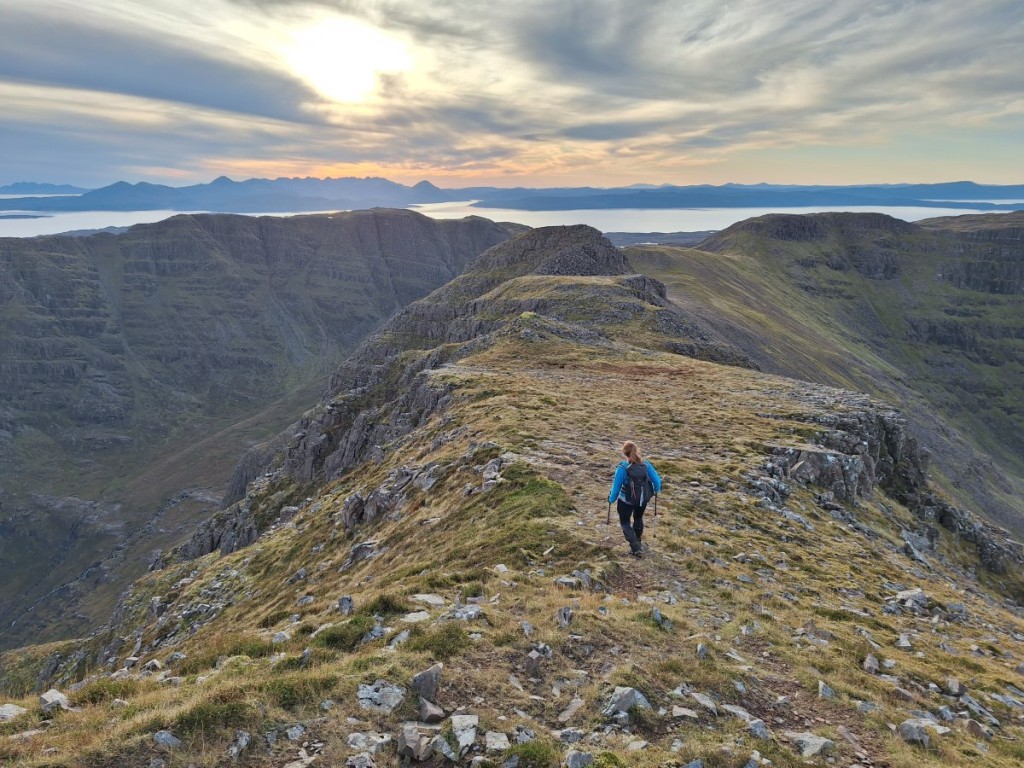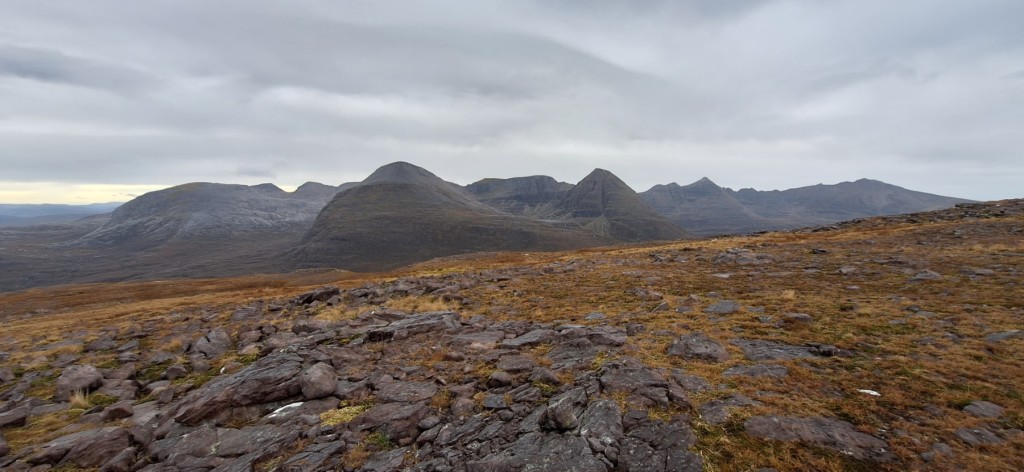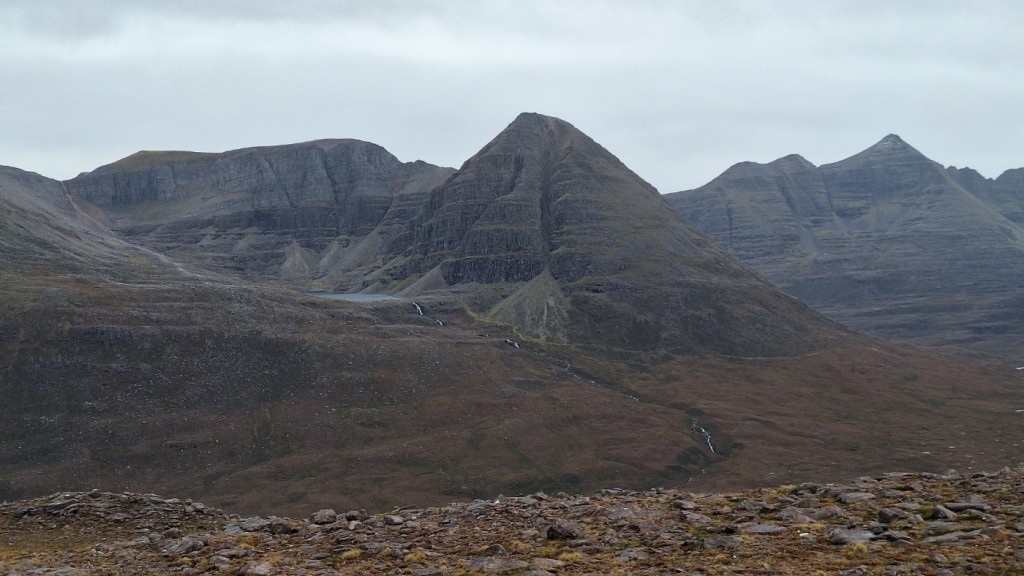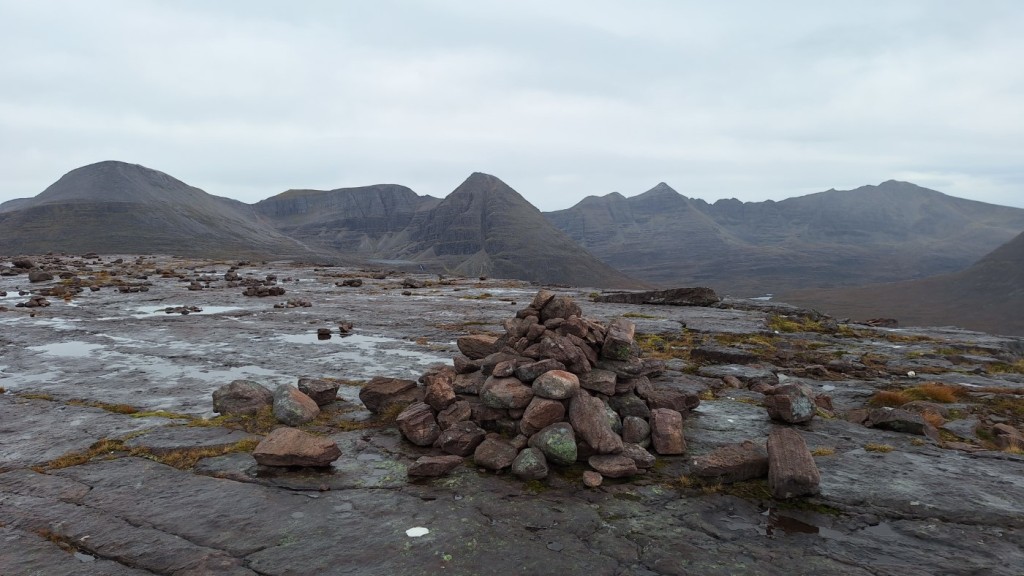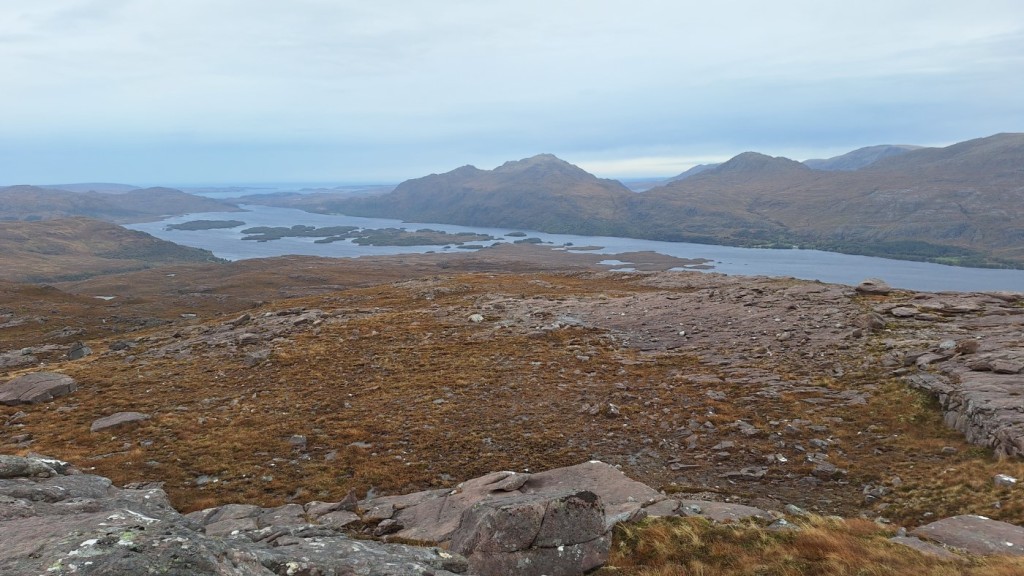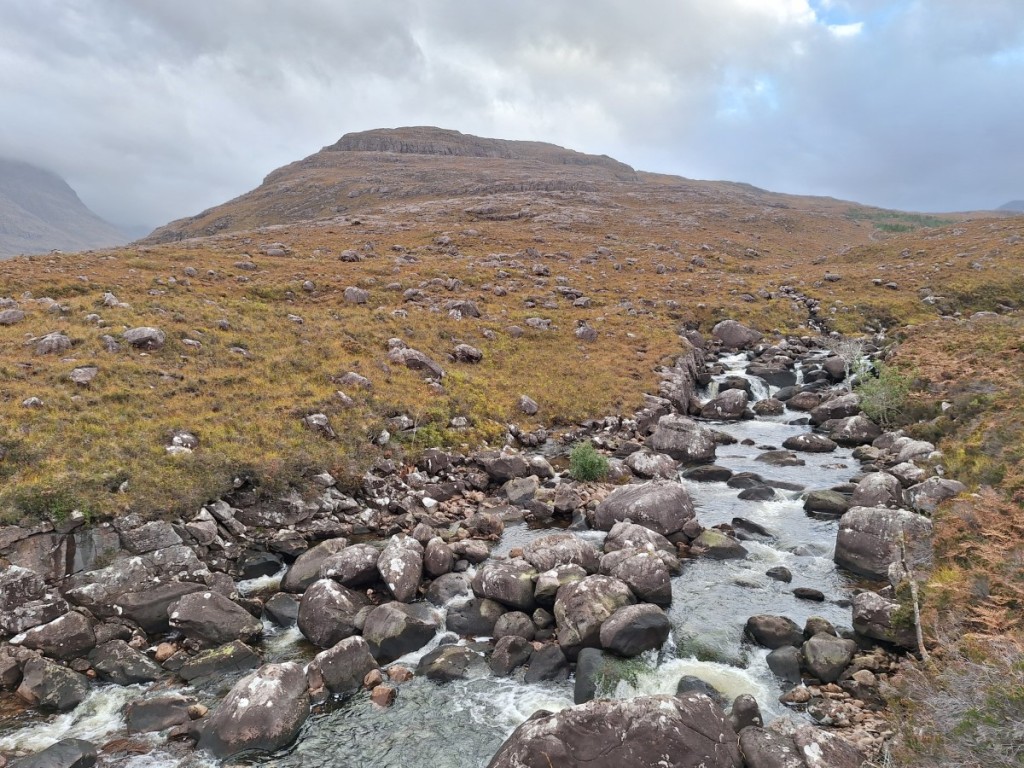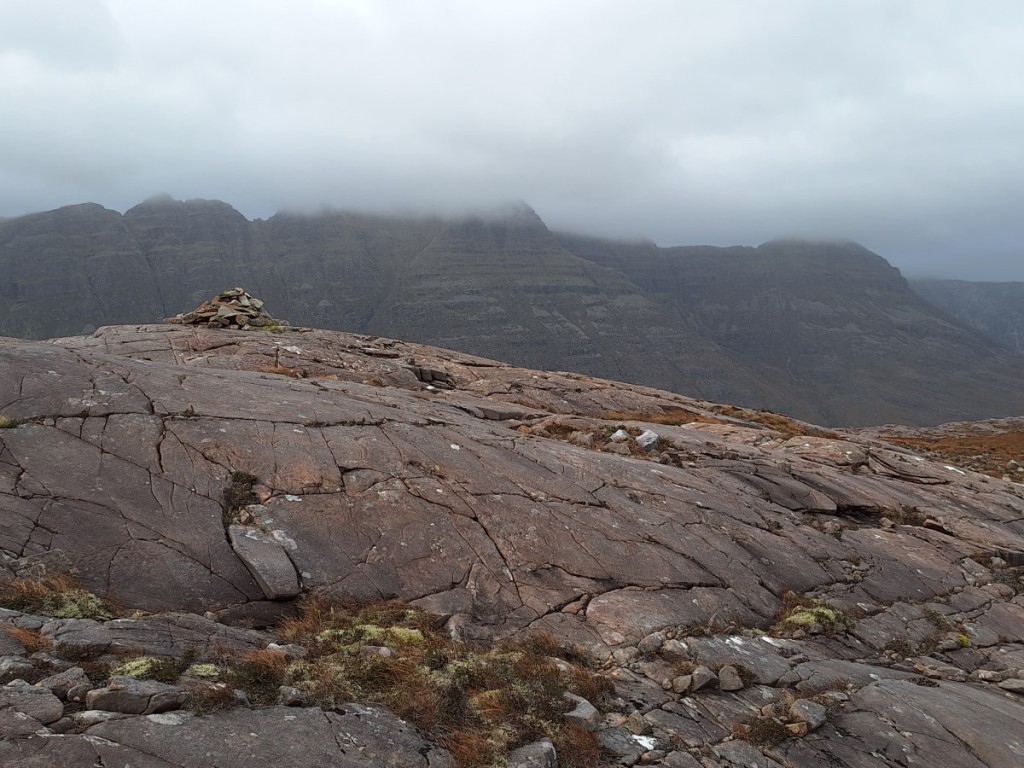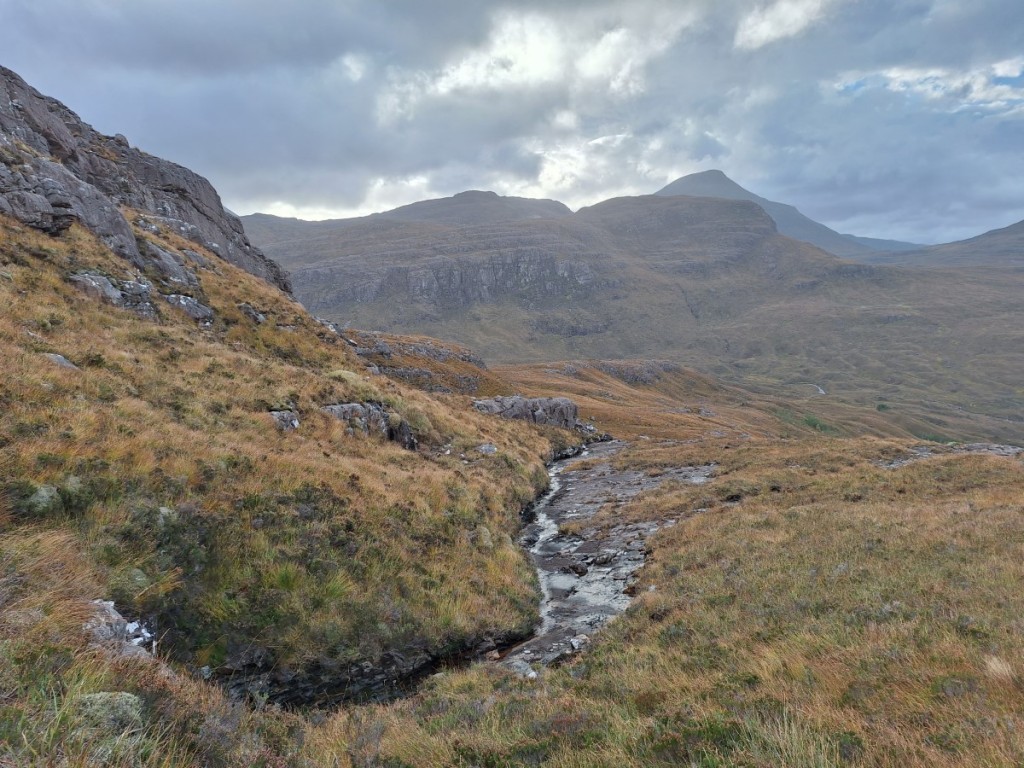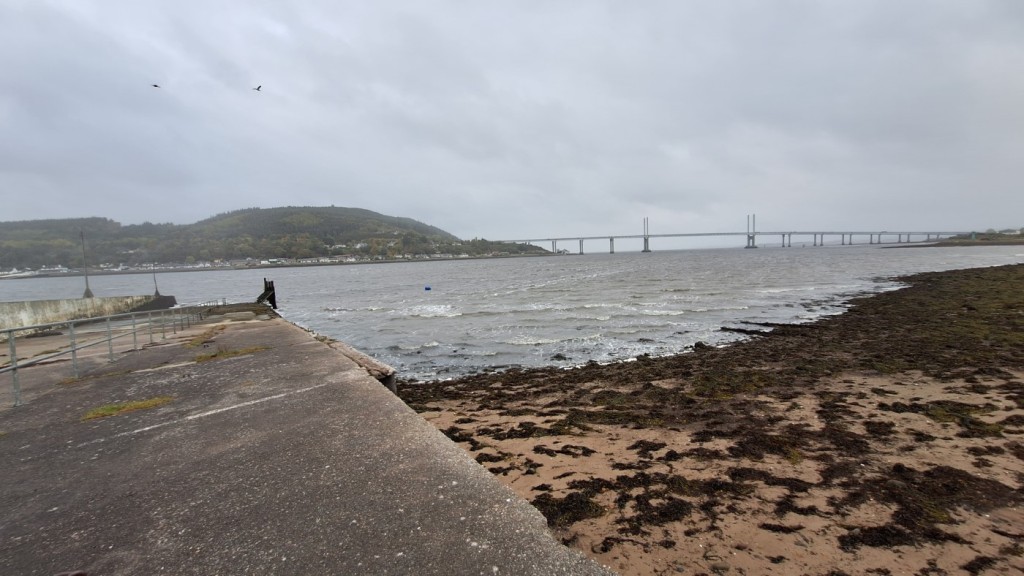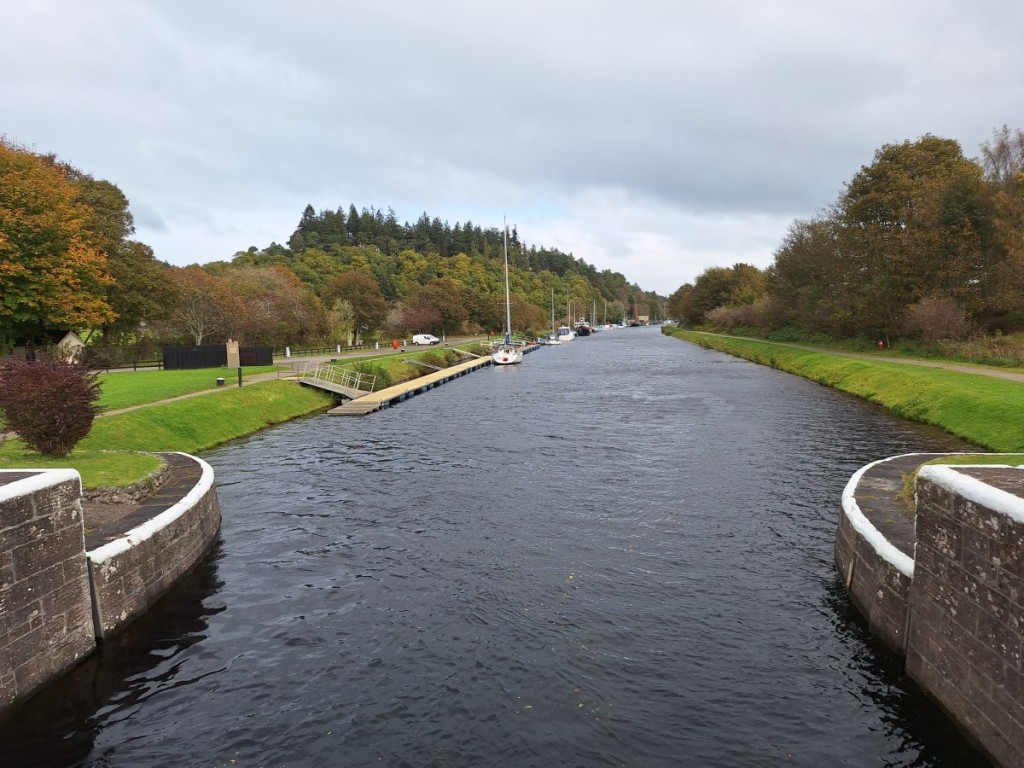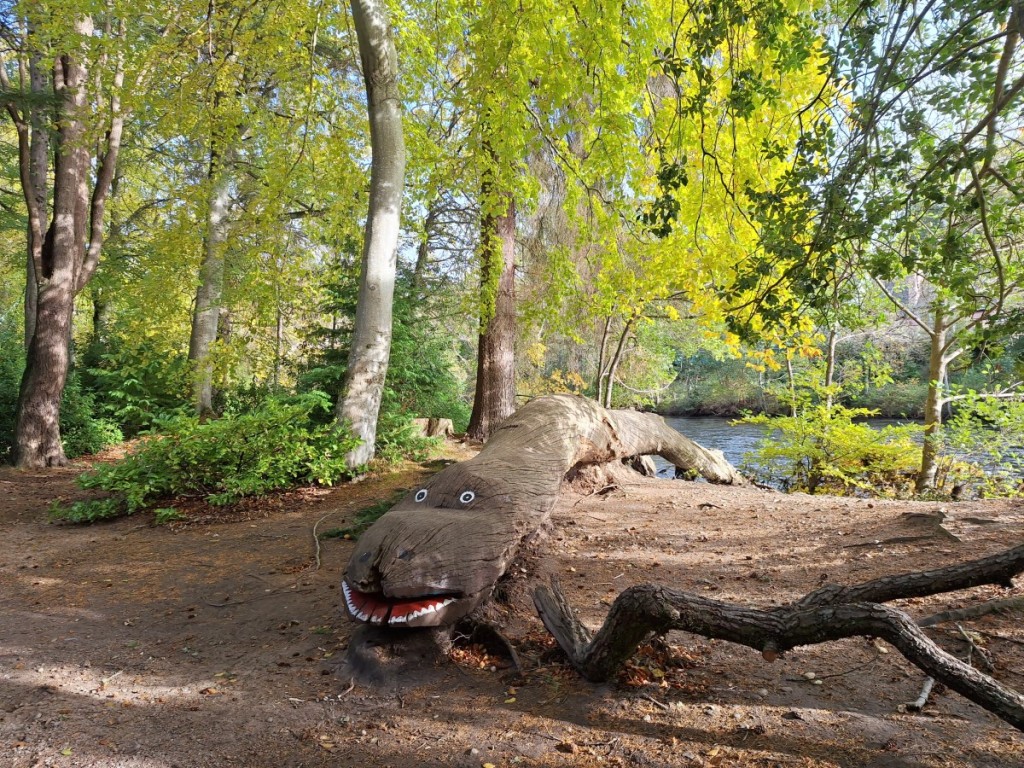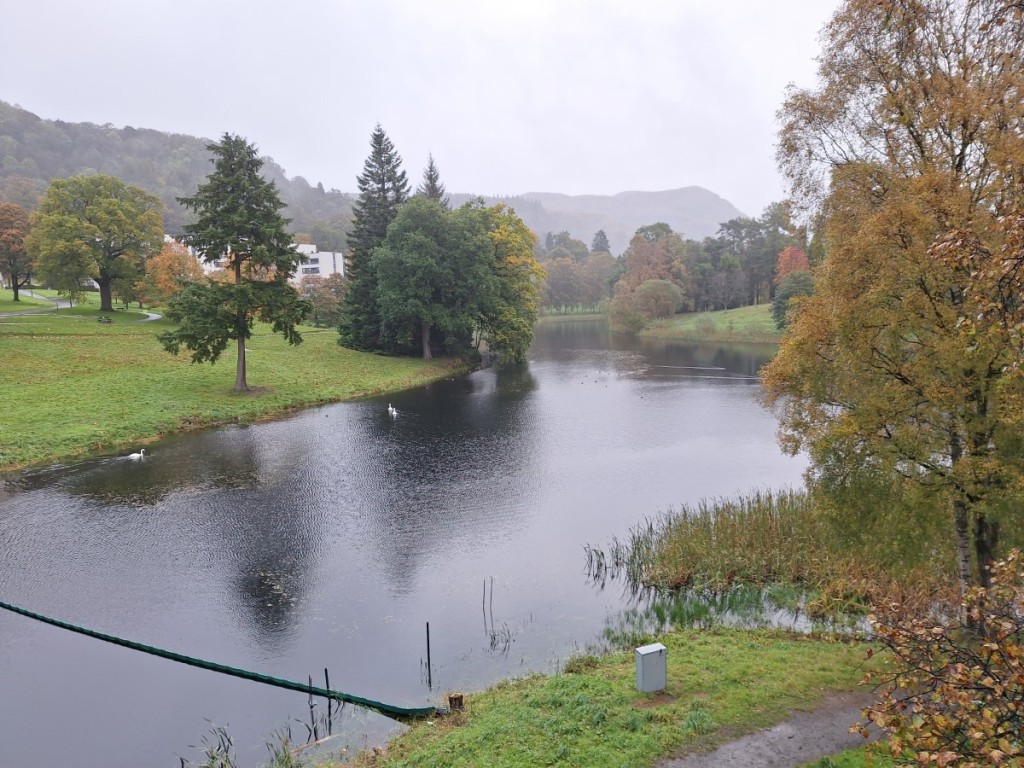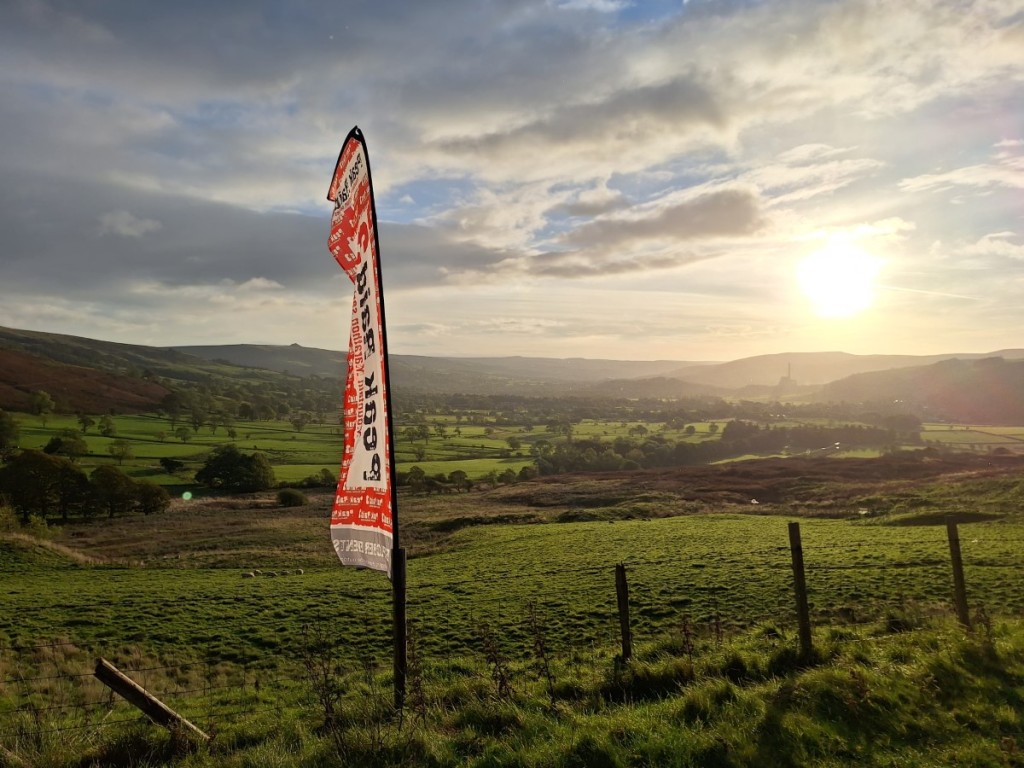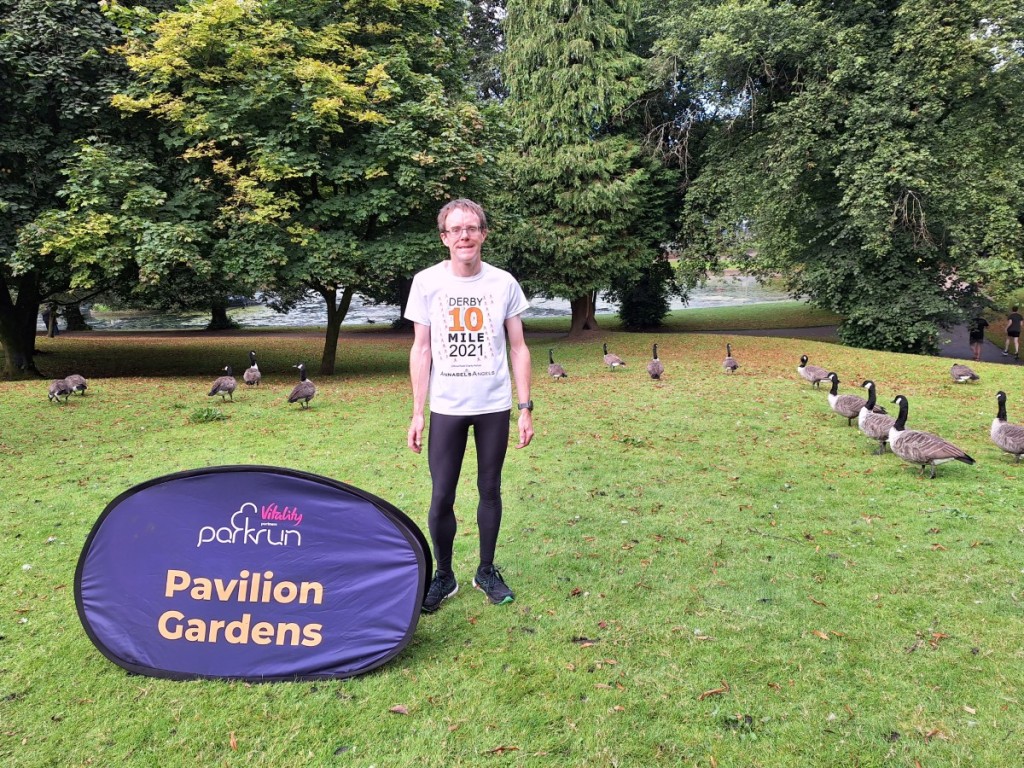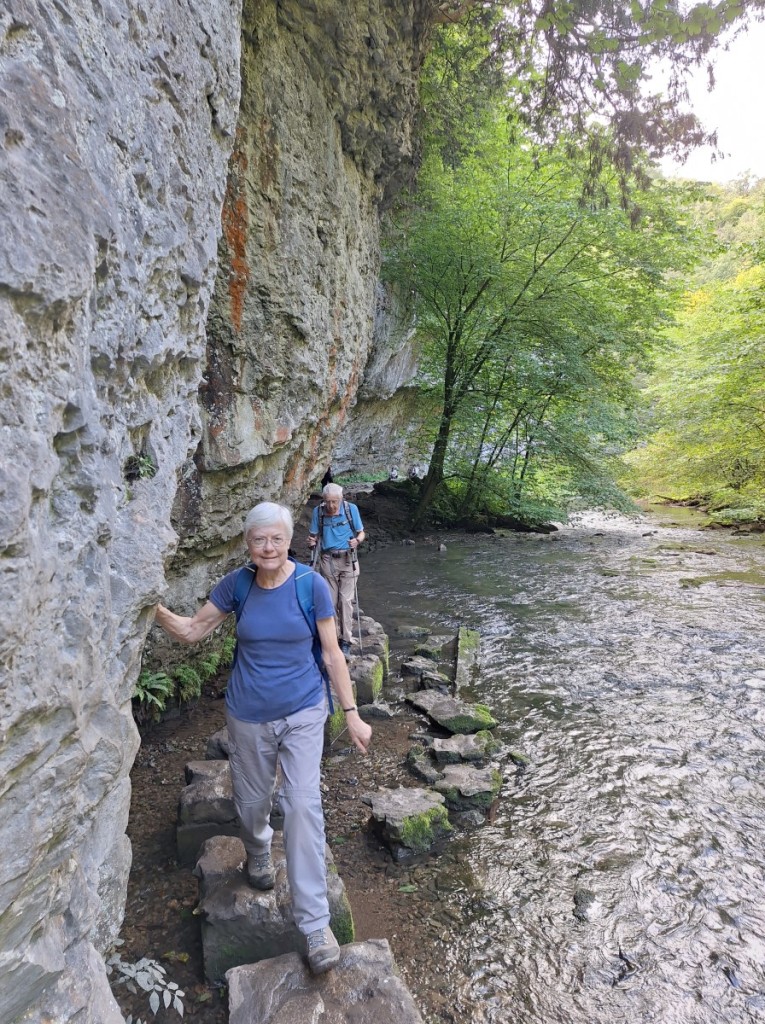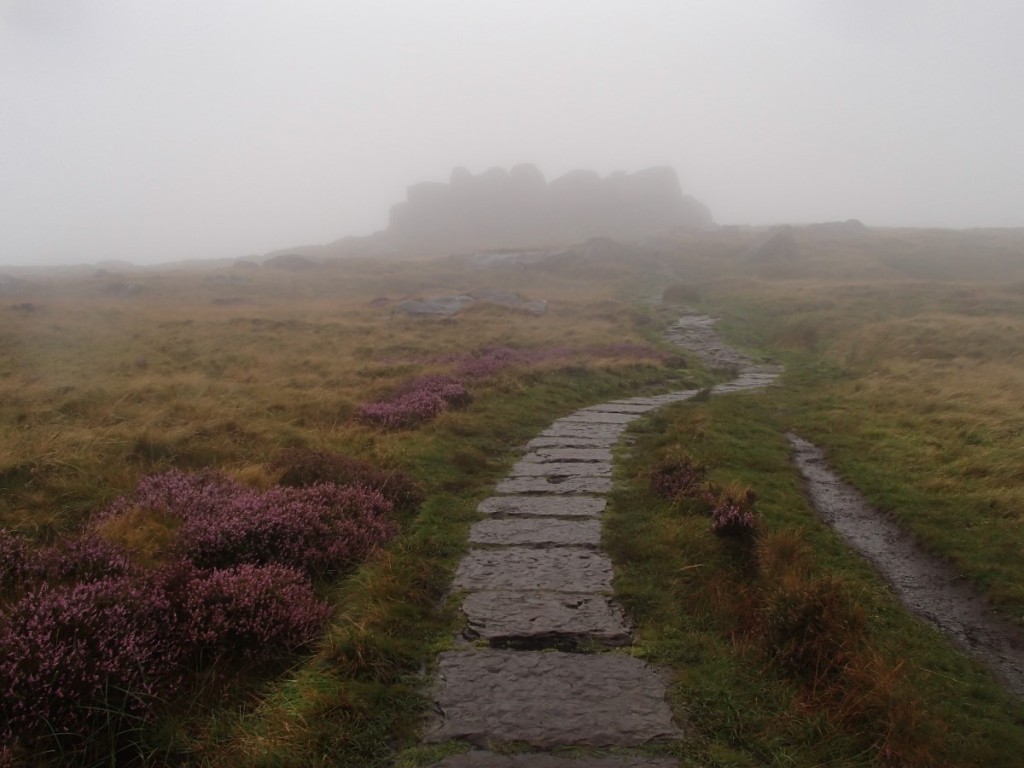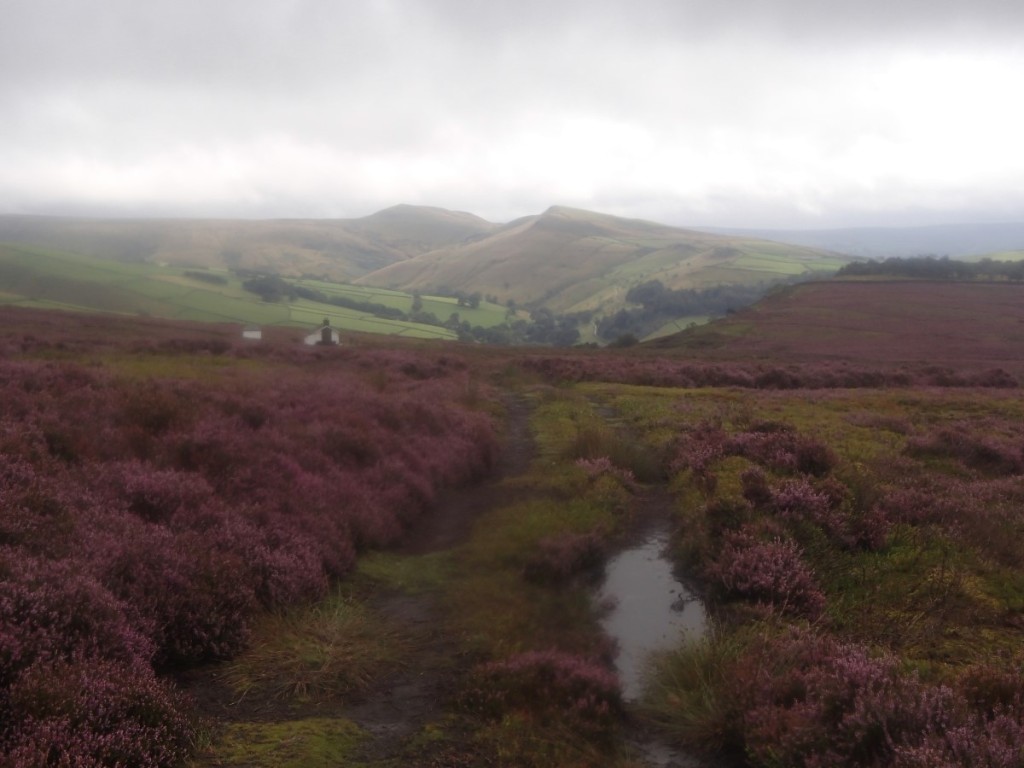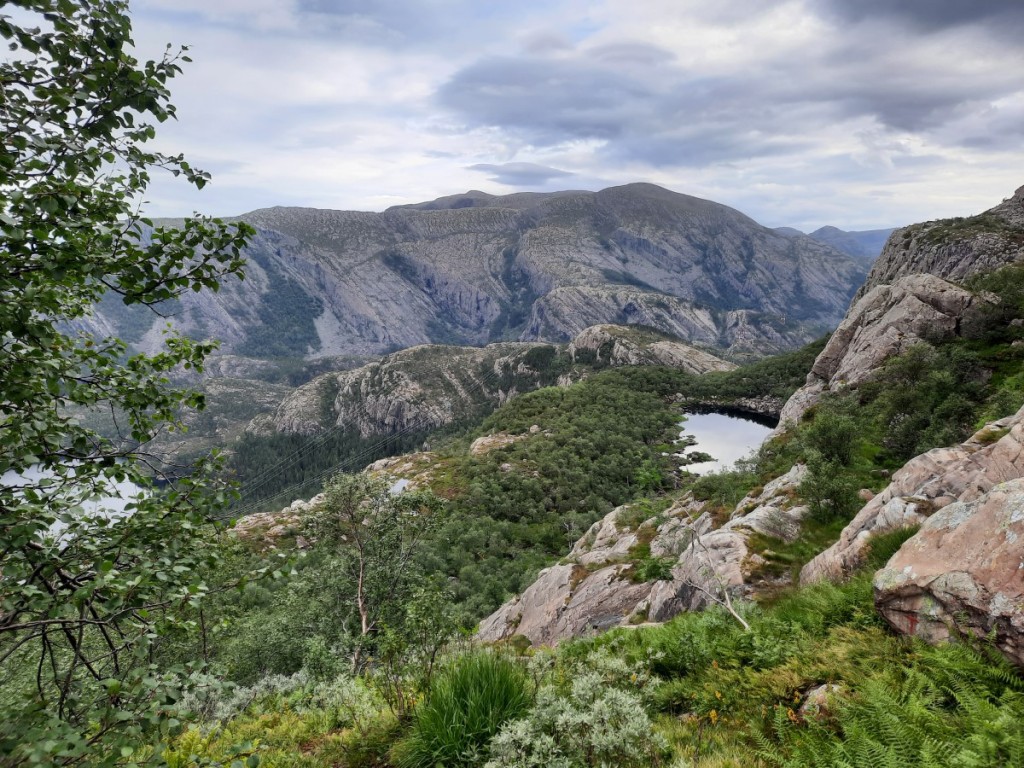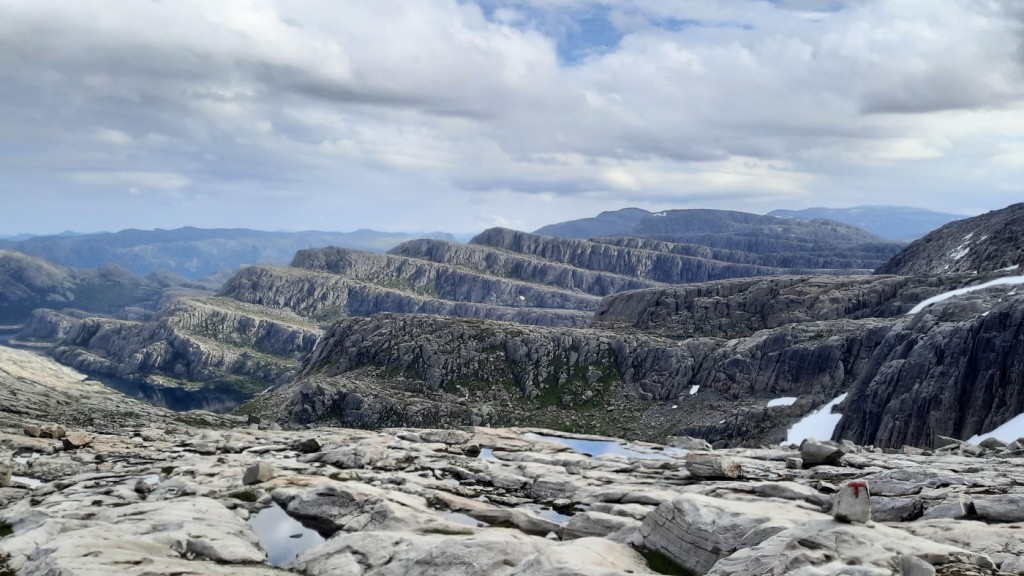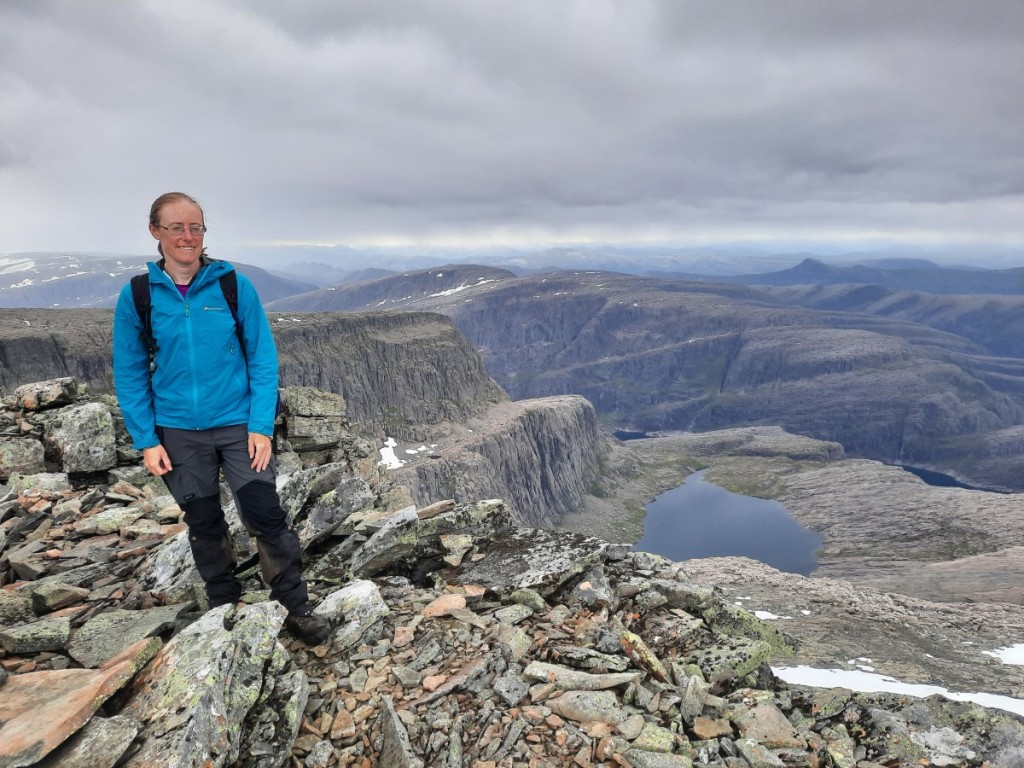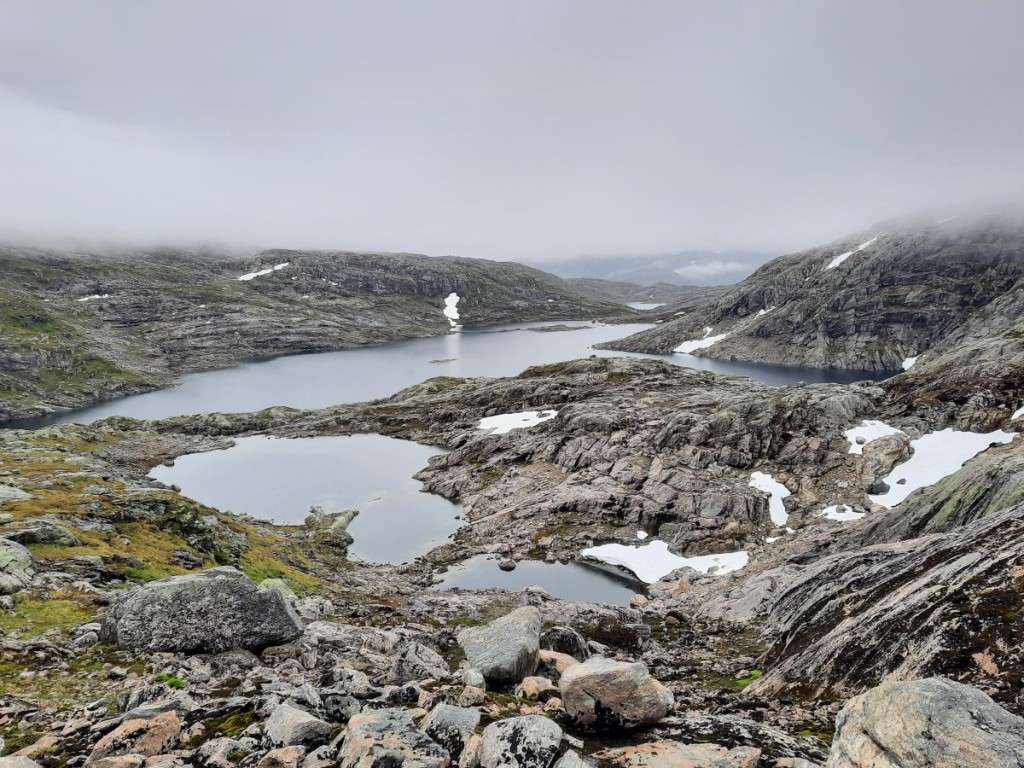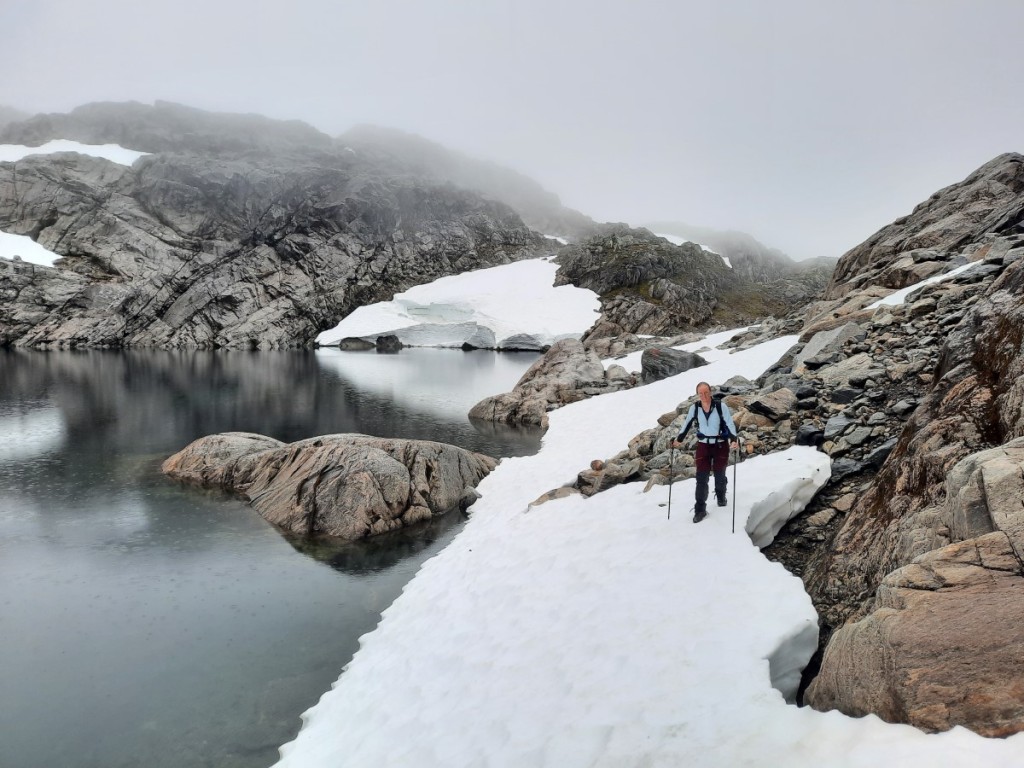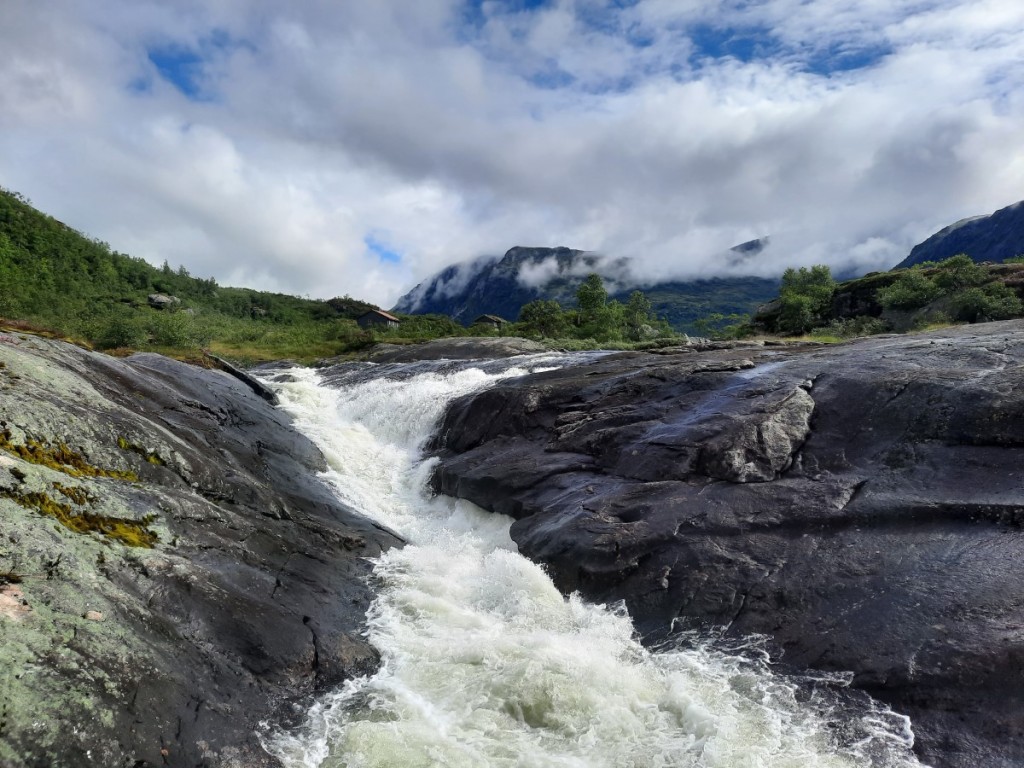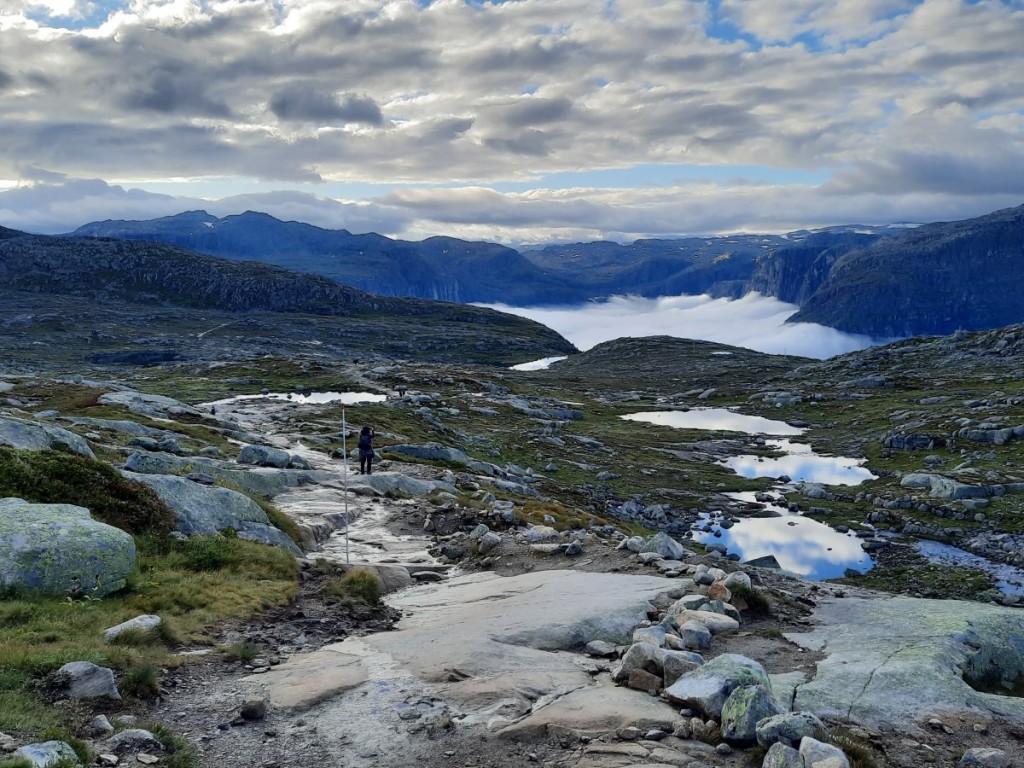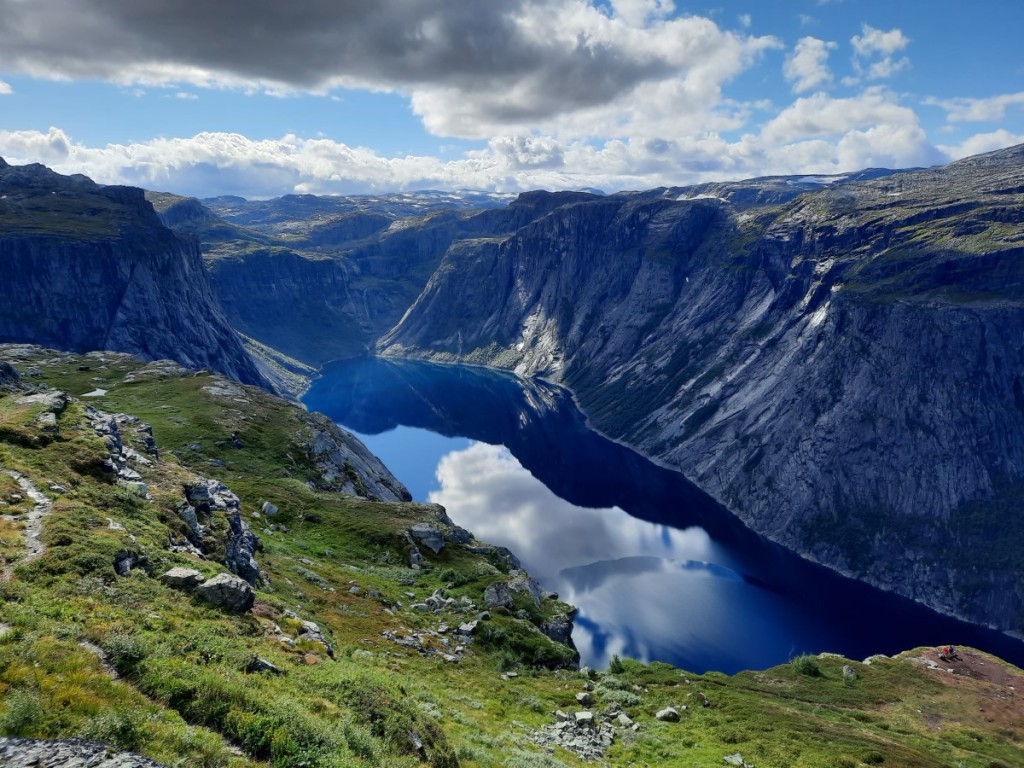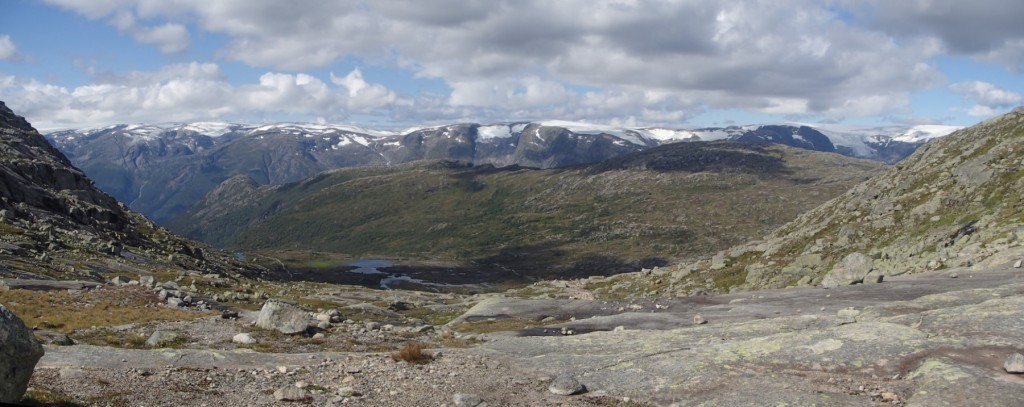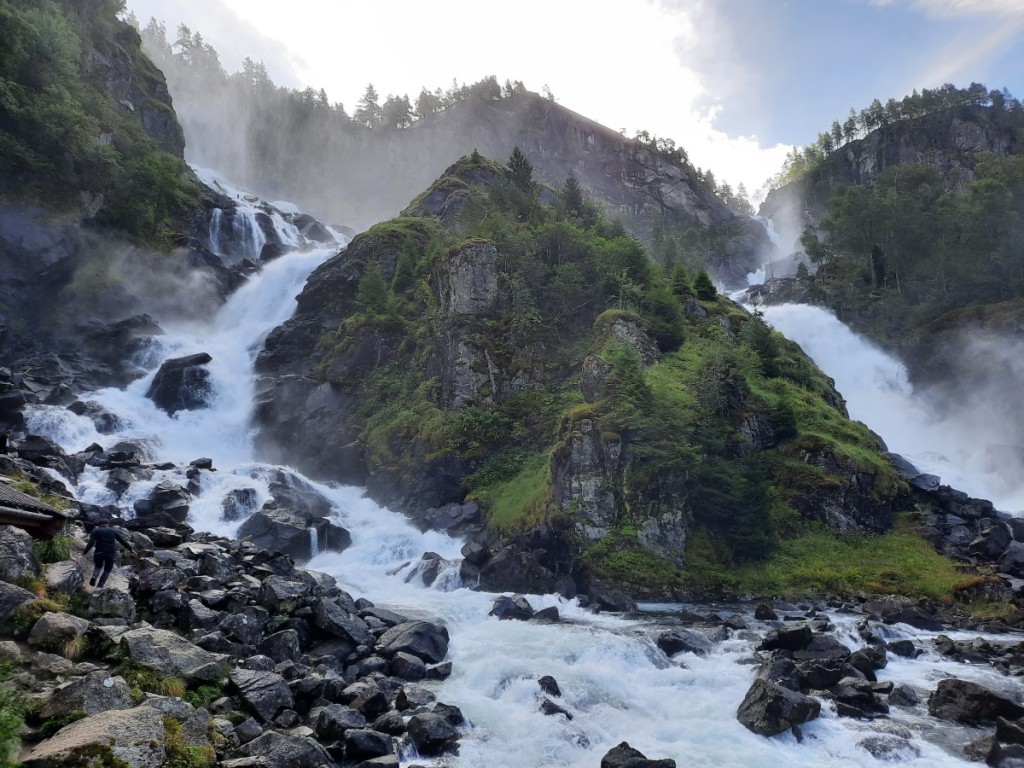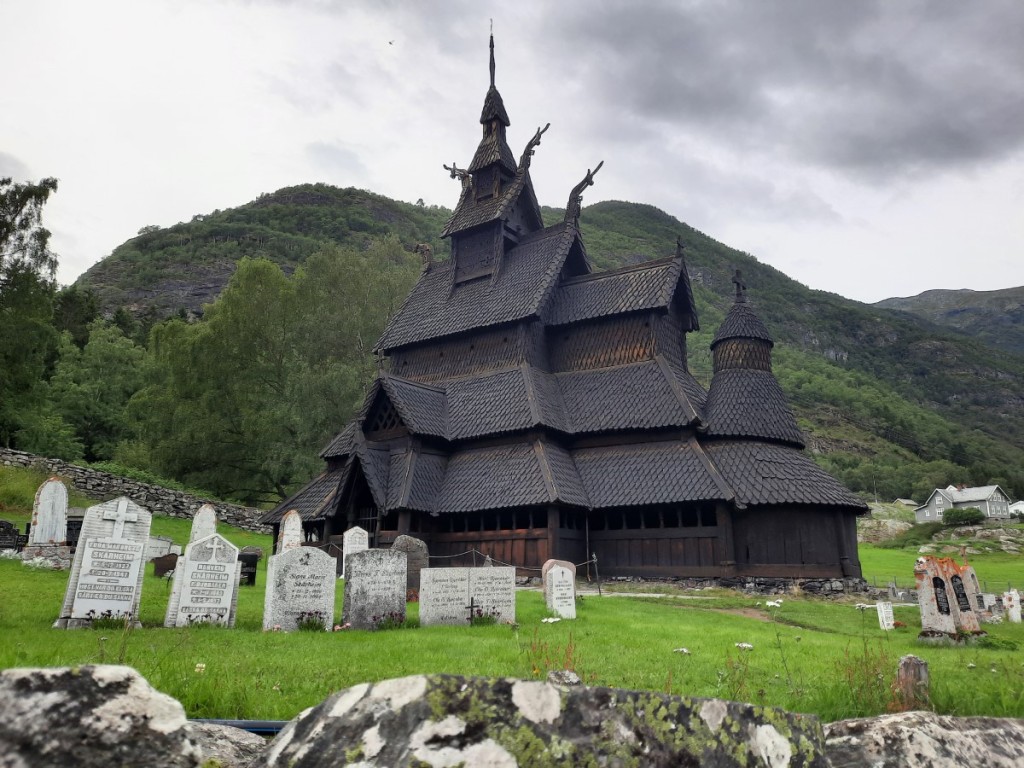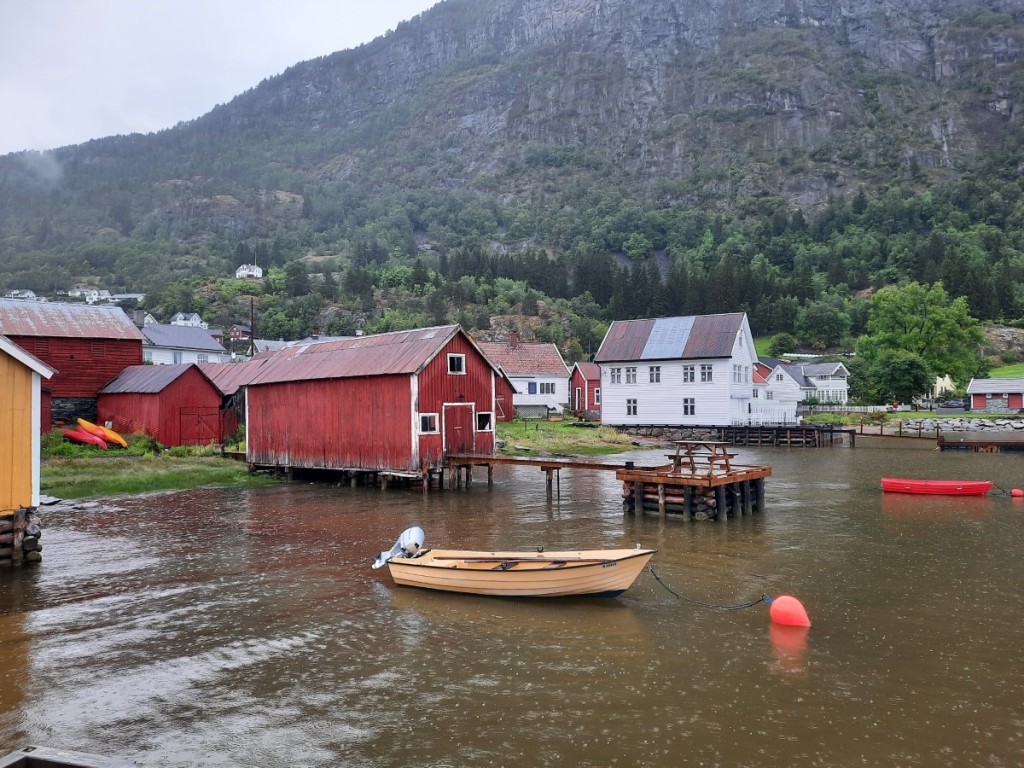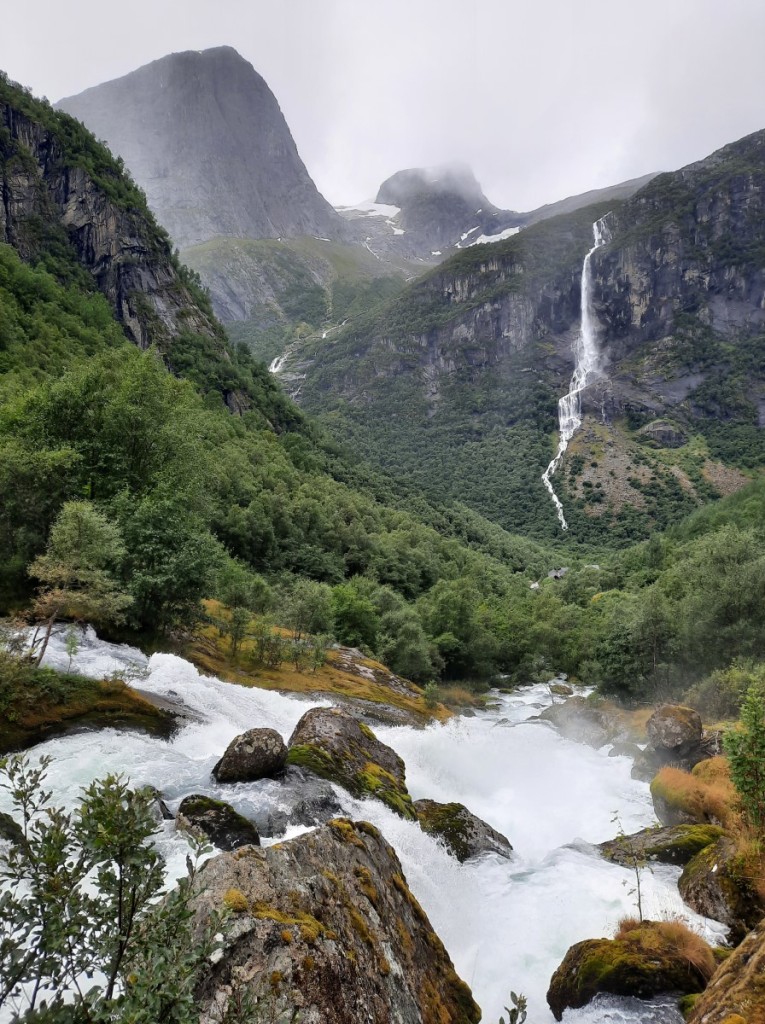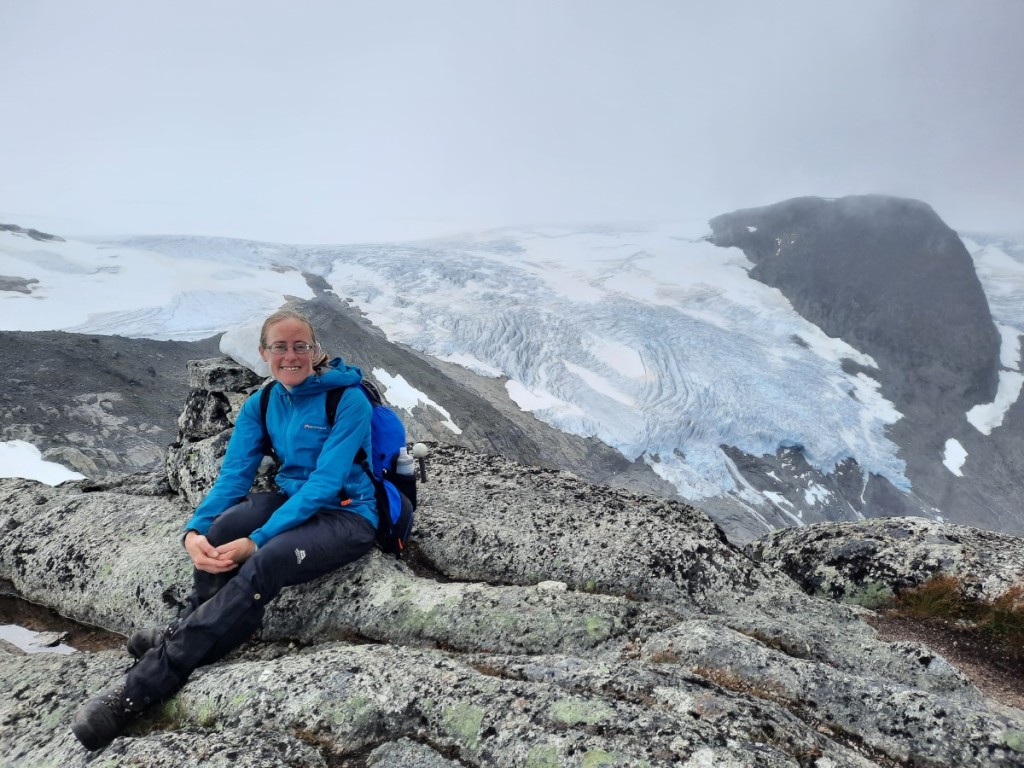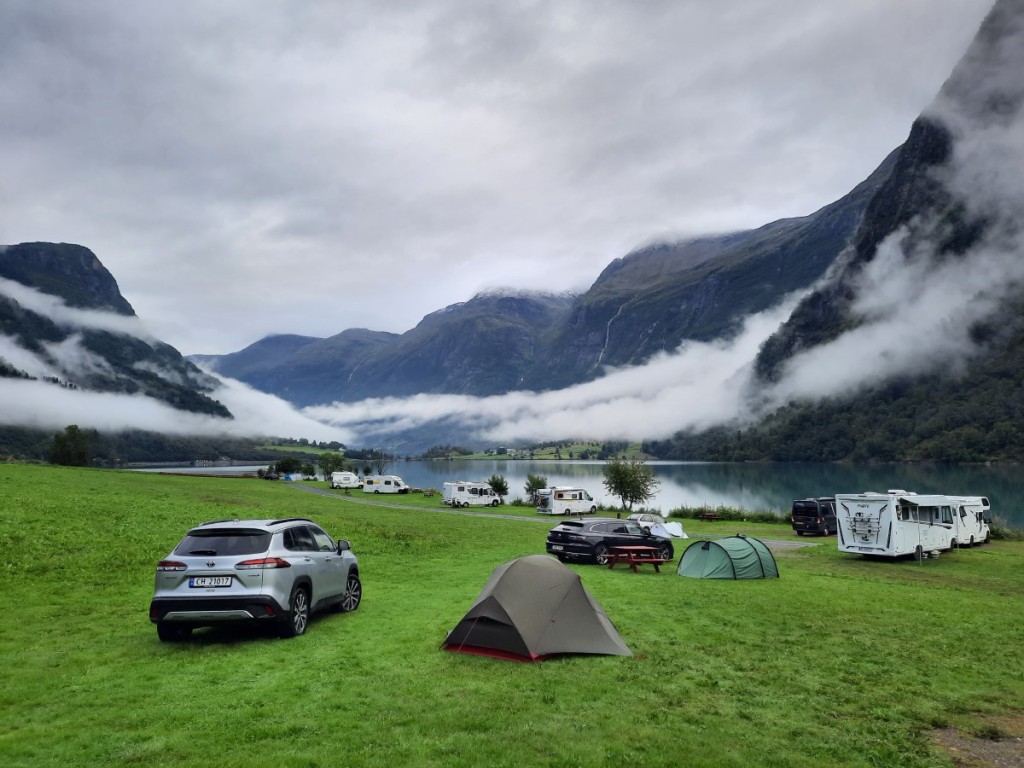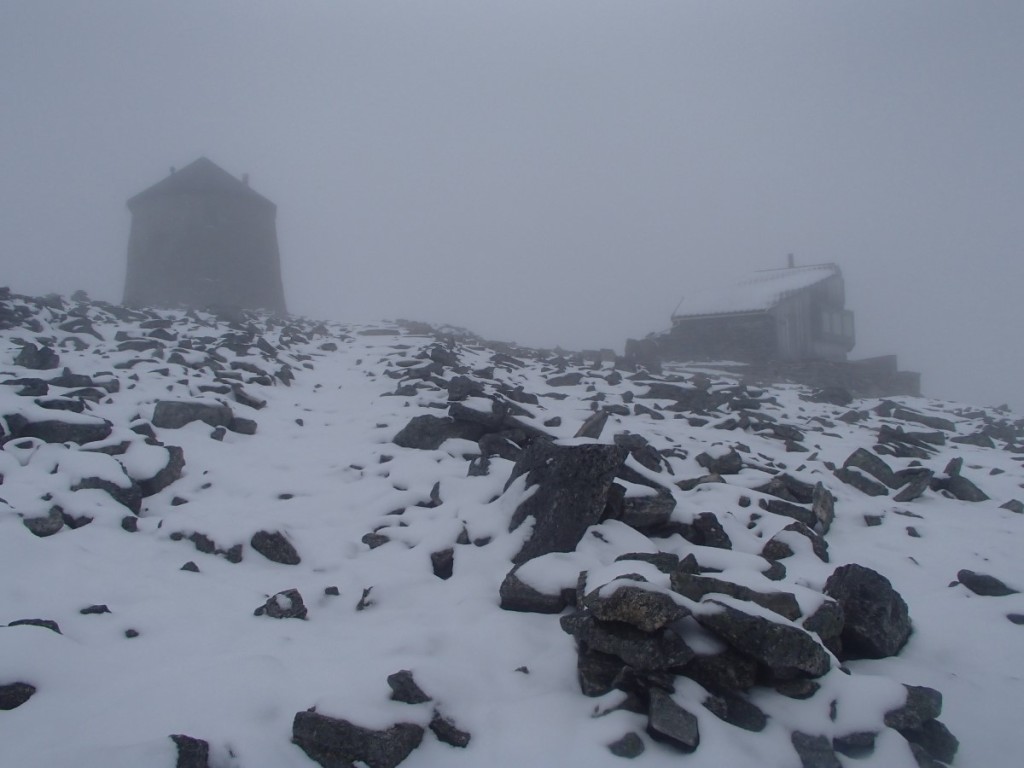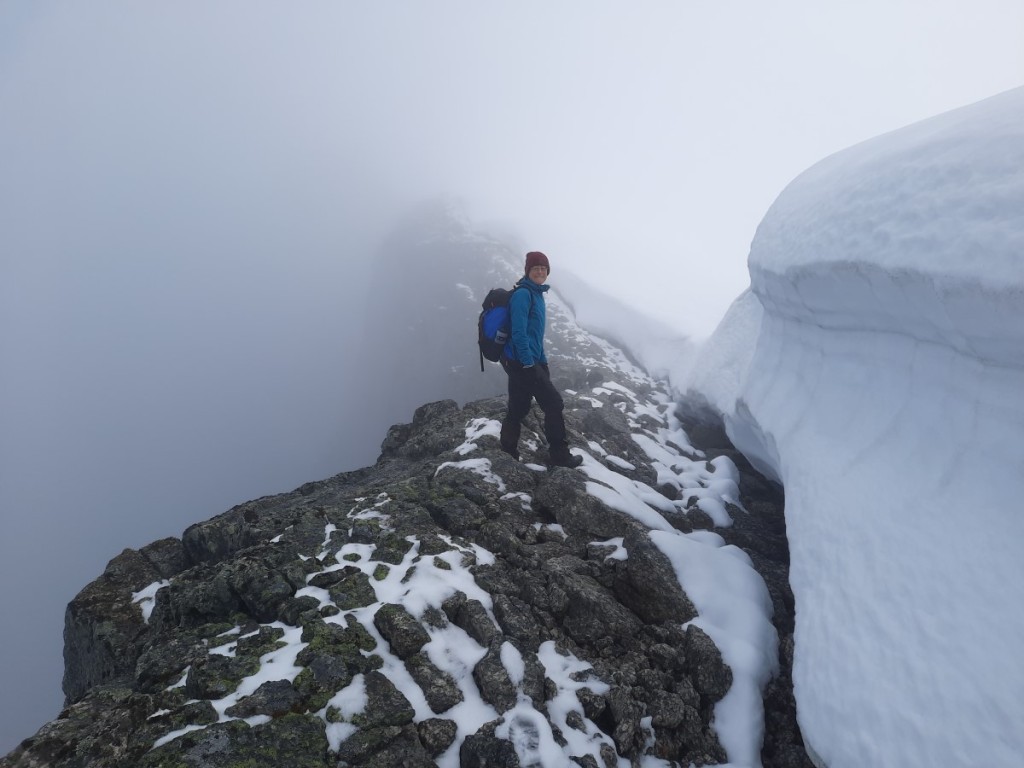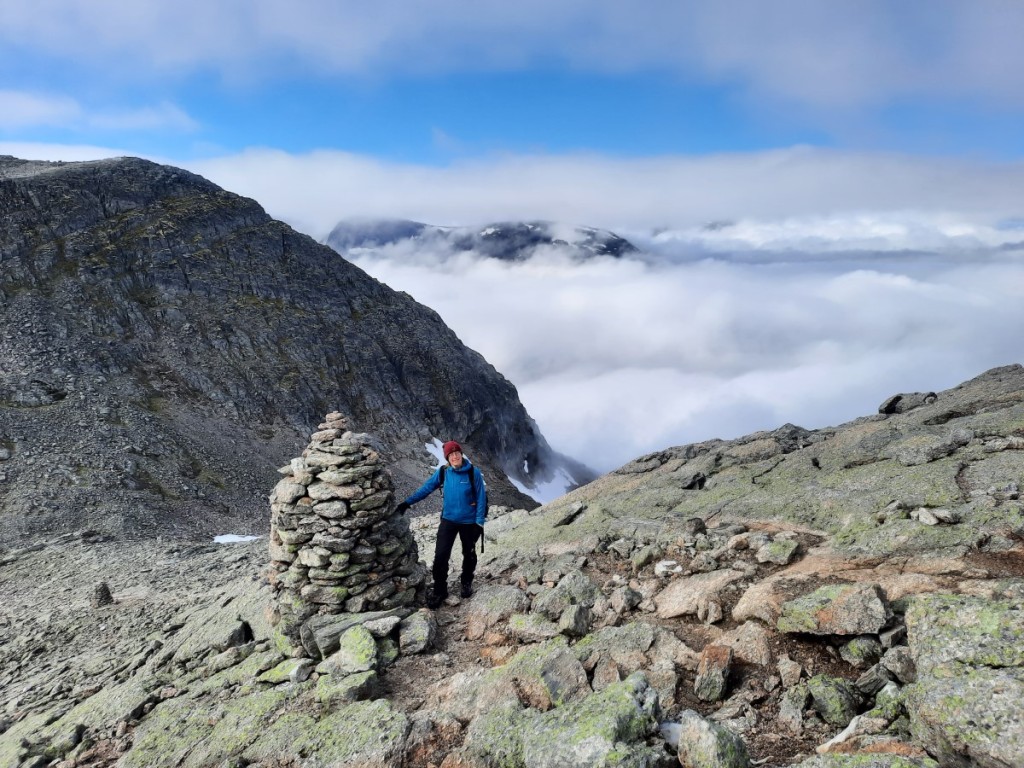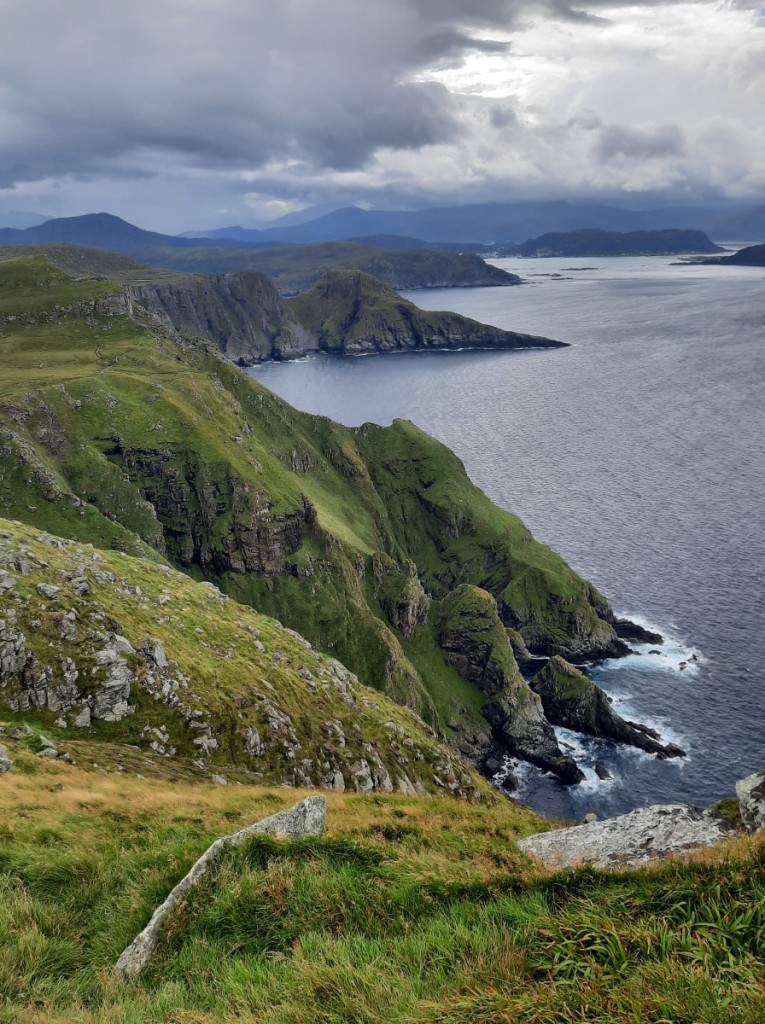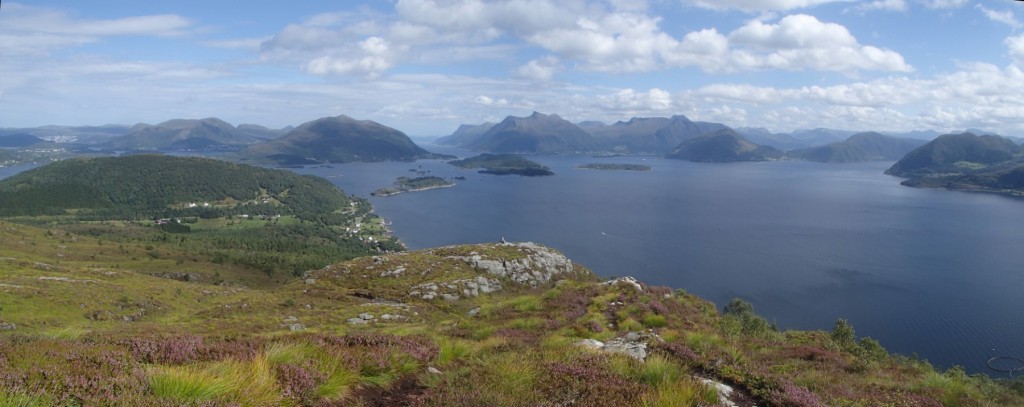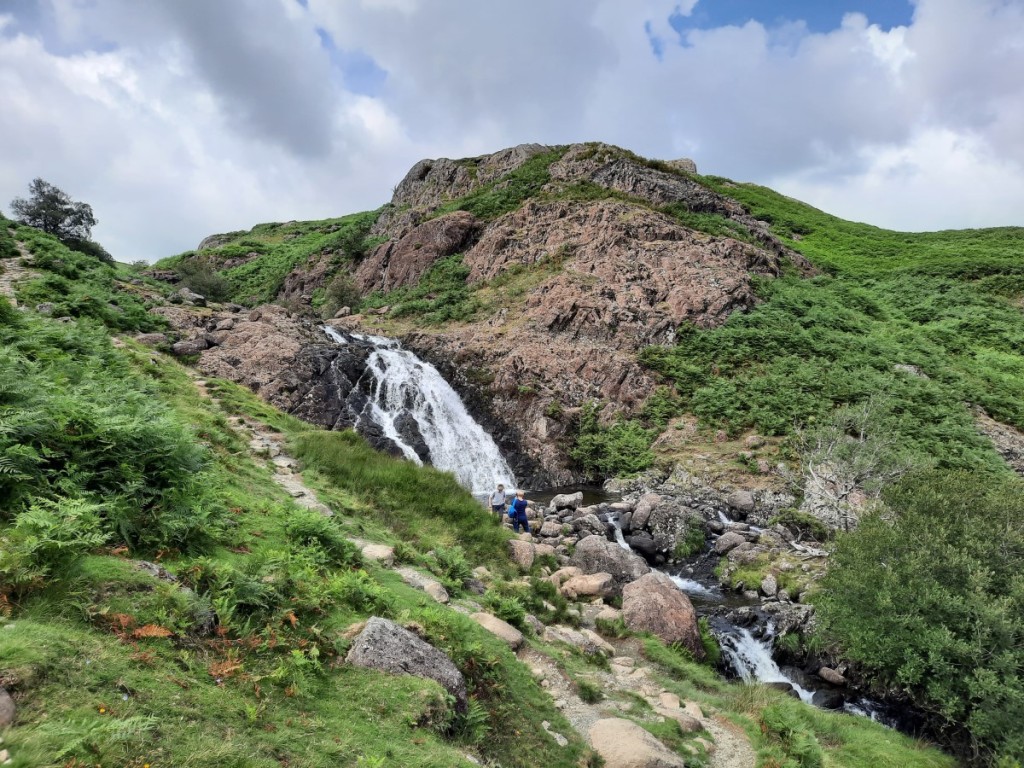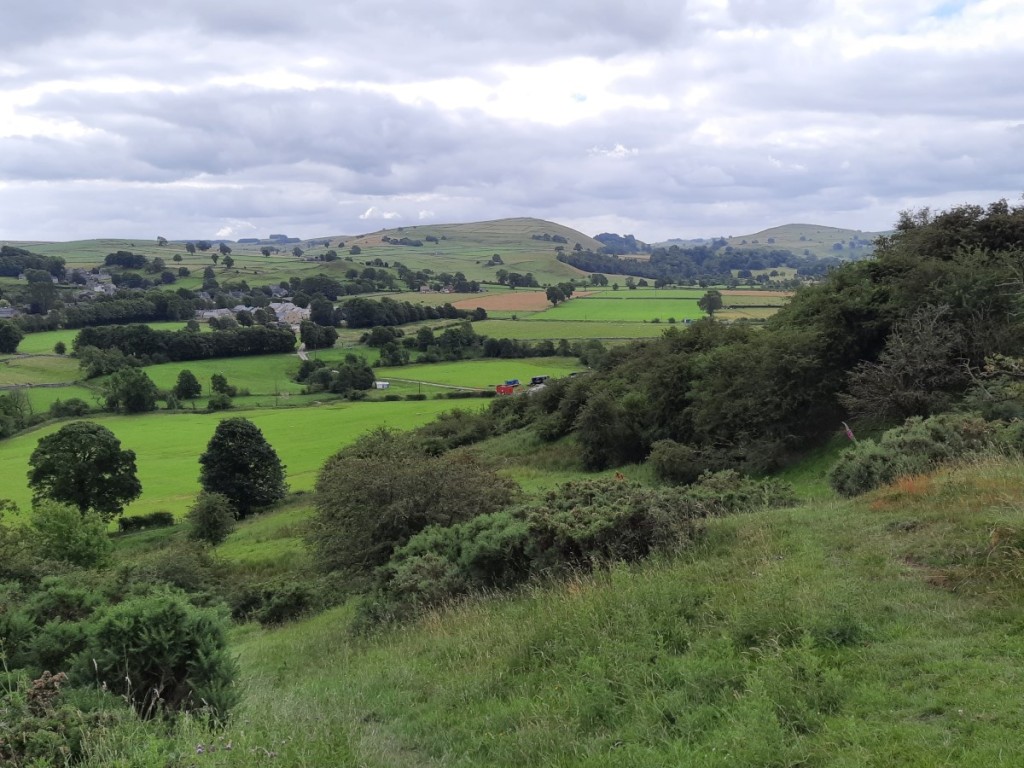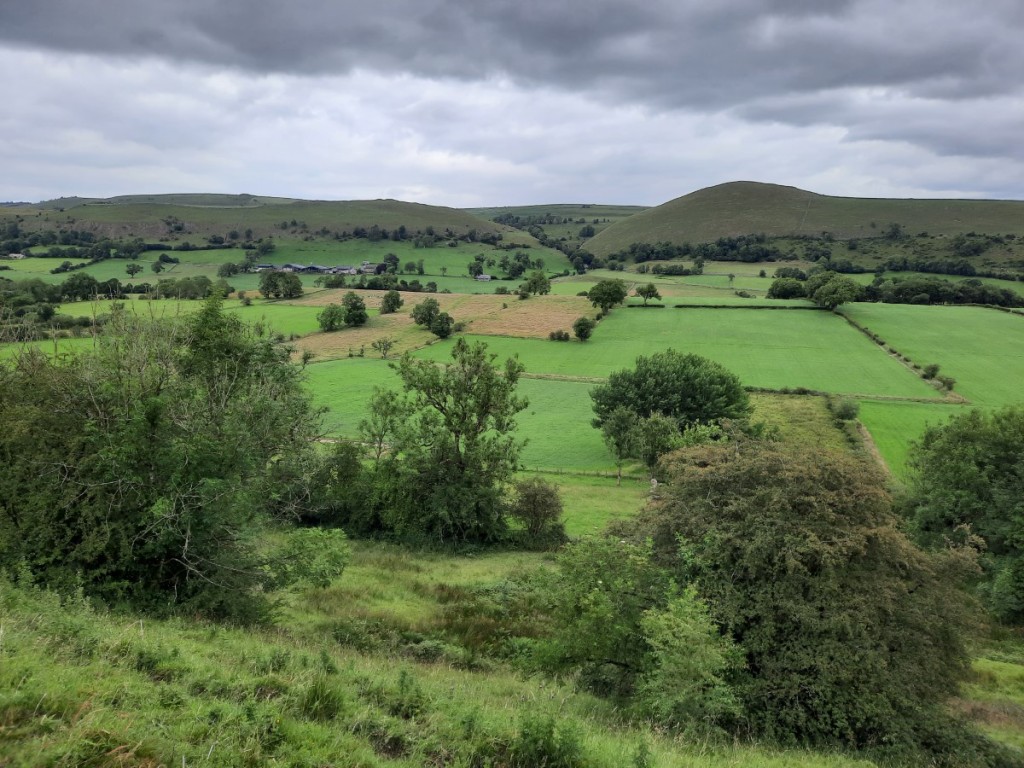As usual, I took a trip to the Highlands for the long Easter weekend, this year a solo trip staying in hostels. I travelled up as far as Mum and Dad’s house in Kendal on the Wednesday evening, and spent the night there. Then after breakfast on Thursday, I continued north to Lochgoilhead, where my first objective of the trip was the recently-promoted Graham, Cruach nam Miseag (one of the few that are below 2000ft but above 600m and thus meet the new Graham criteria).
I parked by the shore of Loch Goil at Corrow, and set off up good forest tracks, then paths up the valley to Lochan nan Cnaimh. Clouds shrouded Beinn Bheula and Beinn Lochain as a prolonged shower blew through, but the rain had stopped by the time I paused for lunch in the shelter of some crags.
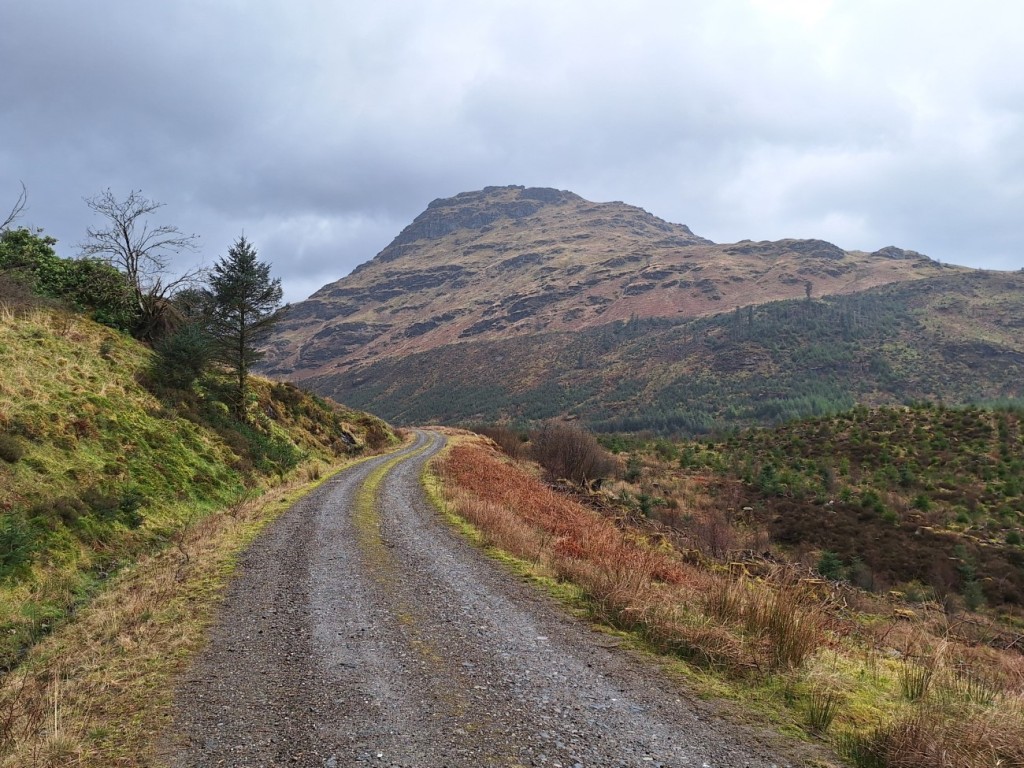

Doubling back on myself to continue up the ridge, it was a sharp climb up on rough grass, soon gaining views of the summit and down to Loch Goil. I passed over a couple of minor tops on the way to the blustery Graham summit, only pausing briefly there to take in the views before seeking the shelter of lower ground. At the start of the walk, I had been in two minds whether to descend directly north or back the way I’d come. It hadn’t looked too tricky to find a way through the forest, so I opted for the direct way, but somewhat regretted it as I did end up picking my way through the brashings and pits of a deforested slope for around 1km on the approach back to the forest track, failing to locate the timber extraction track that I’d seen from below. It was good to get back on easy ground for the final part of the descent.
Route map: https://www.plotaroute.com/route/2565414
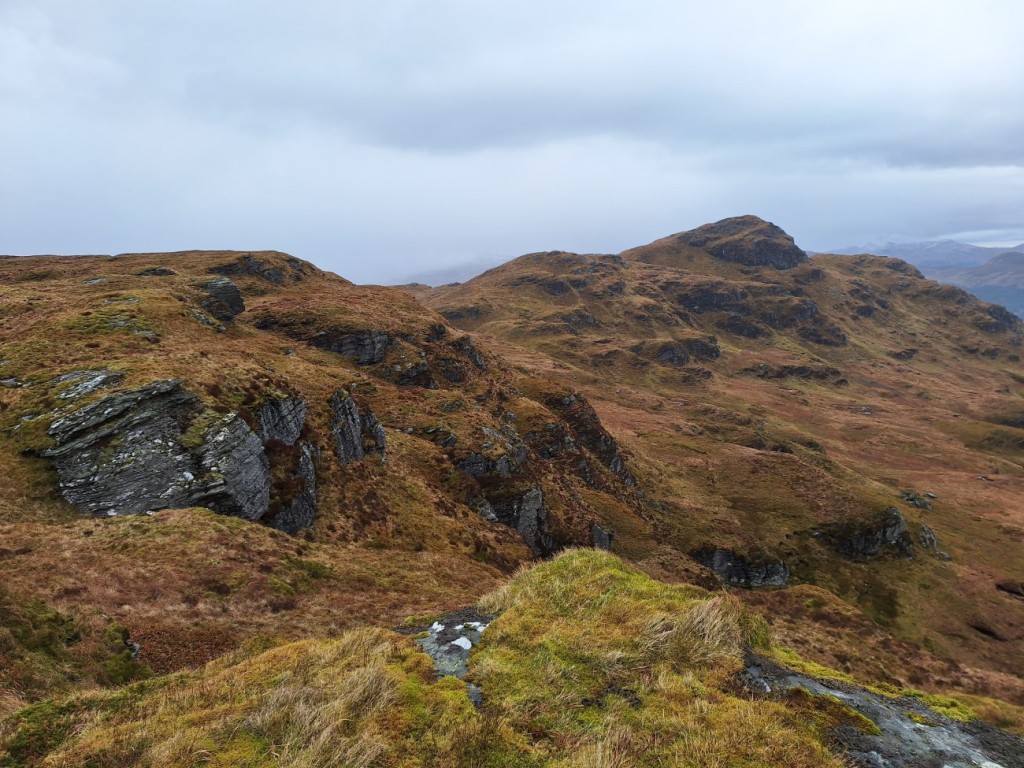
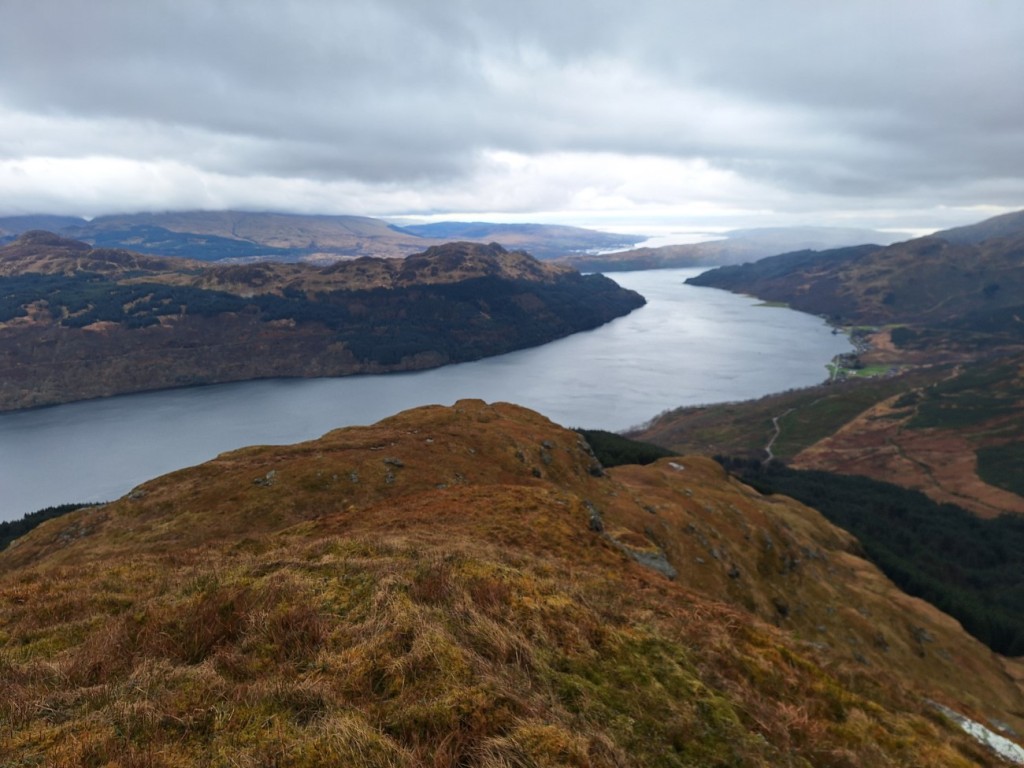
I then drove half an hour or so to Inveraray Hostel for the night, where the warden informed me that I was the first guest of the year, that being their first day of opening and me the first arrival. I settled into my private twin room, then walked into town to buy groceries at Co-op, enjoying the sunshine over Loch Fyne on the way back. After cooking and eating dinner, I had a relaxing evening planning for the coming days.
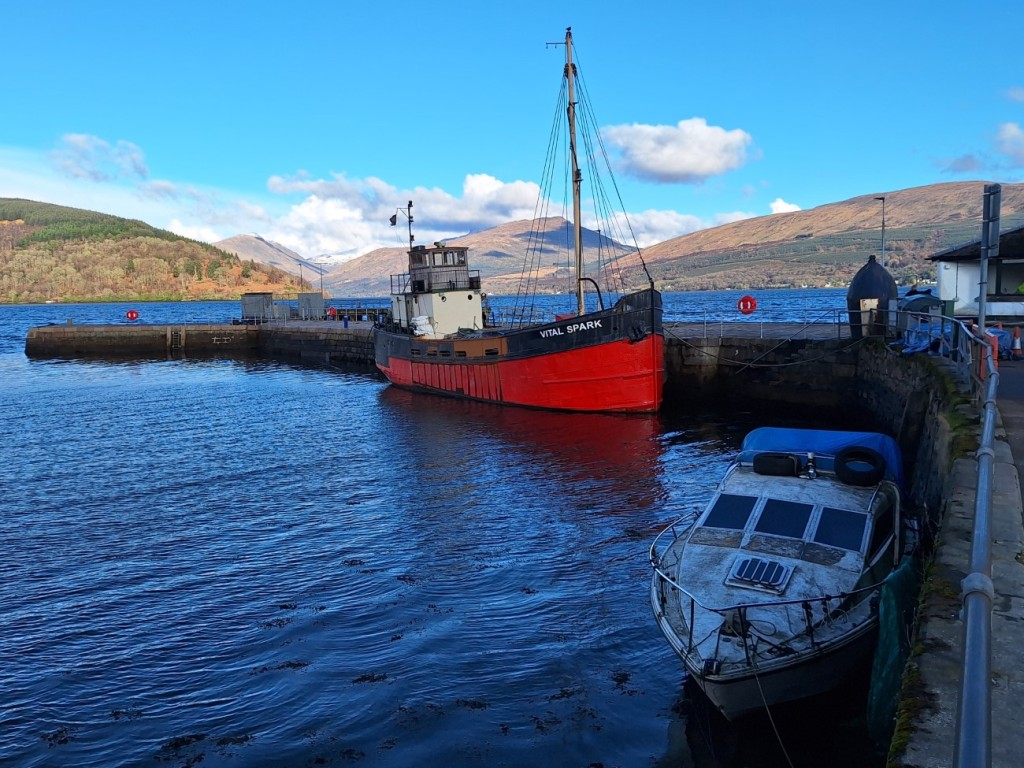
Friday’s weather was supposed to improve as the day went on, so I didn’t rush to get out really early. My twin objectives were the Grahams on either side of Hell’s Glen, the other side of Loch Fyne, which are both easily accessible from the top of the 200m pass. First up was Cruach nam Mult. I followed the main track up Coire No, then a timber extraction track up through a deforested area to reach the open ground northwest of the hill. Then it was a simple climb up grass to the fairly unremarkable summit, the final 100m or so being in mist. It didn’t look like the cloud would break up imminently, so I headed straight back down the way I’d come, only getting fleeting views of Loch Fyne.

Back at the road, I crossed straight over and followed the zigzagging track up the opposite side, then ascended steeply beside the burn almost to the summit of Stob an Eas, the Graham summit. There were a few rocky steps to make the climb more interesting, and the weather was brightening nicely to give views towards both Loch Goil and Loch Fyne.
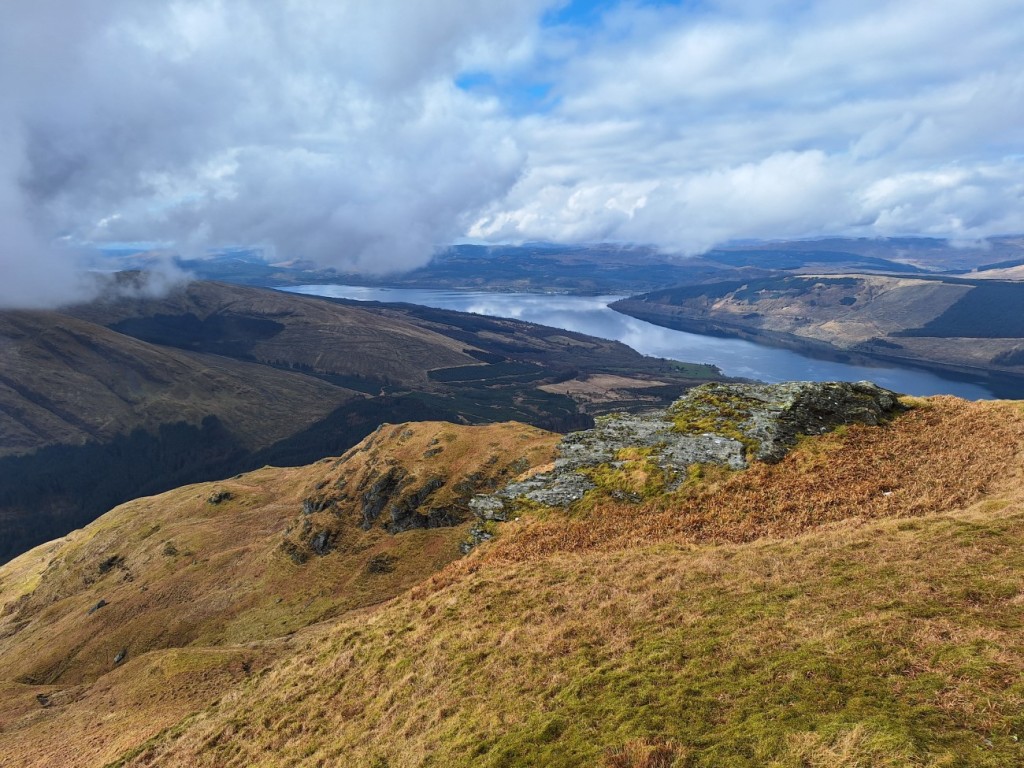
It was pretty cold and windy at the summit, so I soon continued northeast along the ridge to the subsidiary top of Beinn an t-Seilich. This was a better viewpoint both up Glen Kinglas and towards the Arrochar Alps, Beinn an Lochain dominating the view to the east. I found a sheltered spot for a late lunch in the sunshine, then meandered south along the craggy crest, taking lots of photo stops as The Cobbler and Beinn Narnain came into view, and the views to Loch Goil gradually opened up to the south.
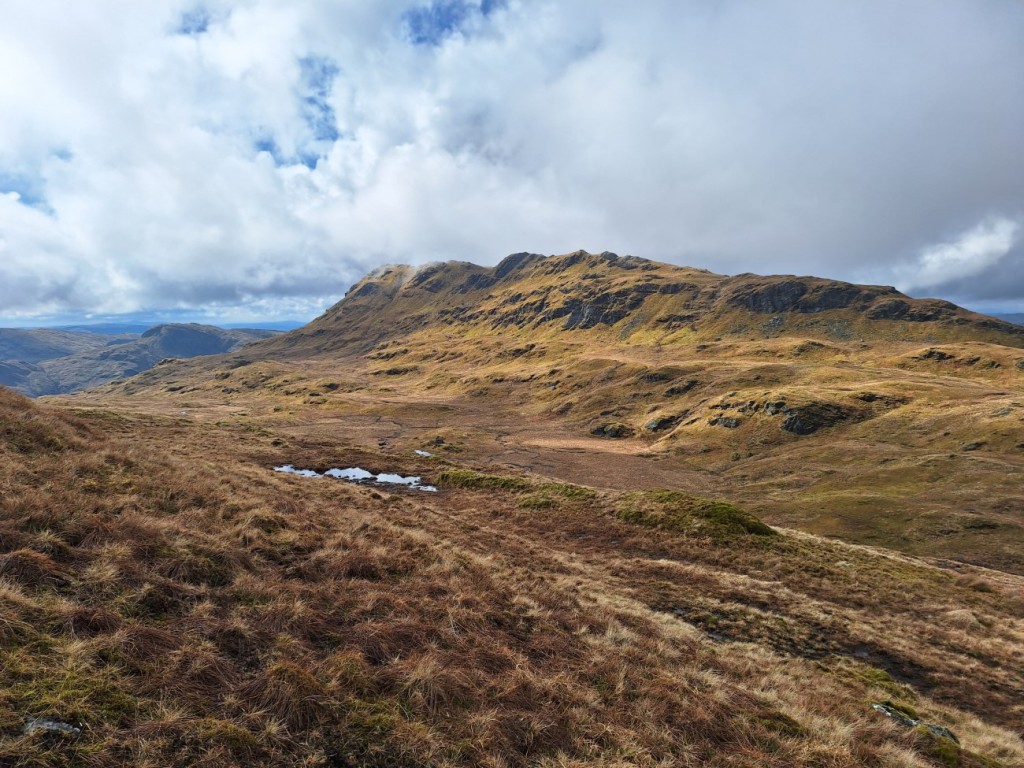
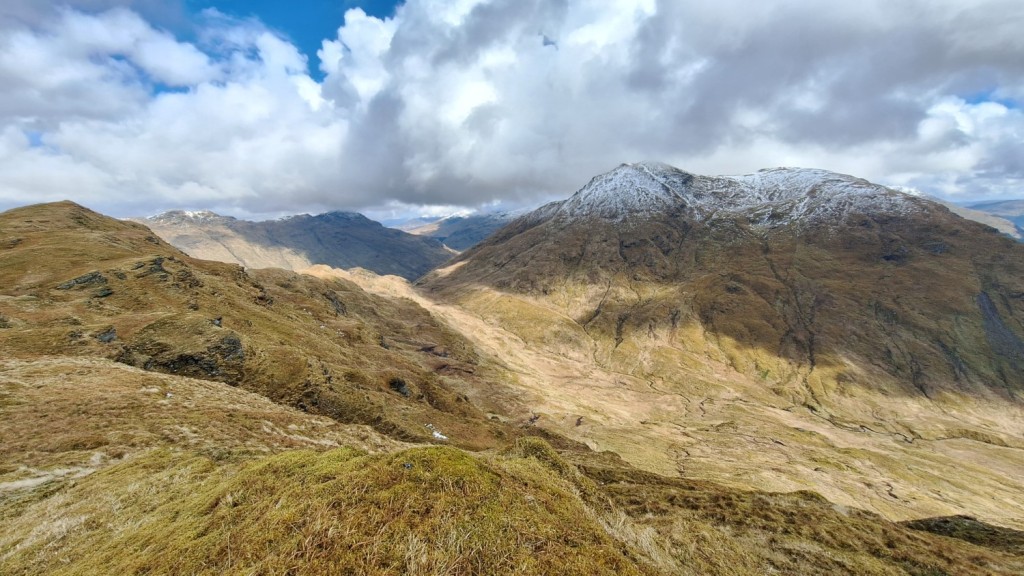
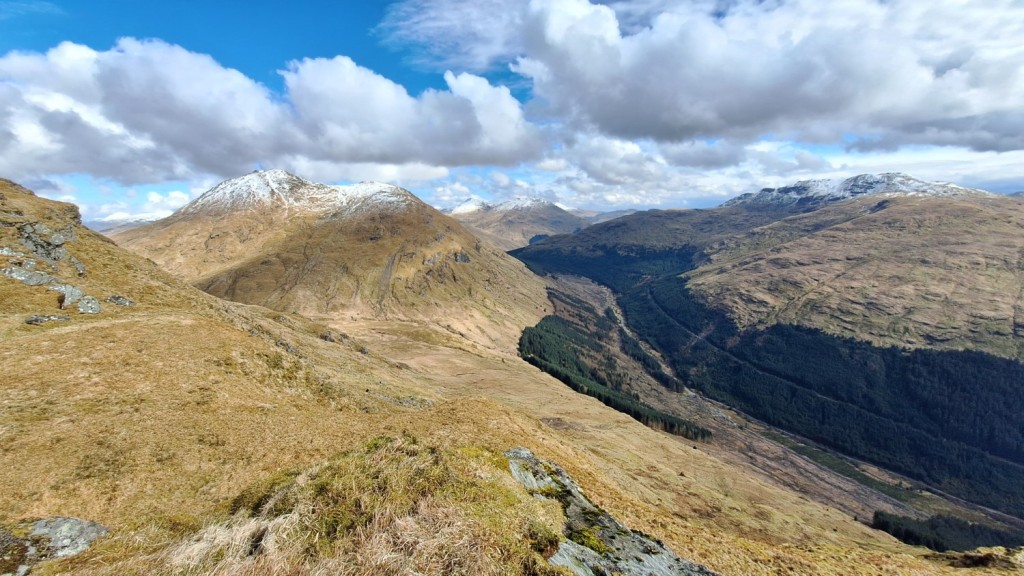
From there, it was an easy descent west down smooth grassy slopes to pick up my ascent track again at the edge of the forest below Stob an Eas.
Route map: https://www.plotaroute.com/route/2566337
It was about an hour’s drive to Oban, where I would stay for the next two nights. Arriving at 4pm, I had an hour to wait before check-in opened at the Backpackers Hostel, but was happy just to sit in the lounge and drink tea. Once I’d checked into the dormitory – which I was fortunate to have to myself that night – I strolled along to Tesco to pick up a couple of extra bits and pieces, then had another lazy evening.
Ganavan Sands parkrun had been on my to-do list for some time, so I was pleased to have created the opportunity to visit it on this trip. I arrived promptly and went for a warm-up jog along the first part of the course, amused by the sign warning of a steep ascent from the off. By 9:30am, 93 runners – their third highest turnout ever – had amassed. Two were very quick, well ahead of me within a few hundred metres and three minutes ahead by the end, but I managed to establish a bit of a gap between myself and fourth place. On a hilly course, I was happy to finish in just a touch over 20 minutes. The views of Mull and Morvern were excellent in the sunny spells.

After parkrun, I took a short drive north to park in Gleann Salach, the other side of Loch Etive, where my objectives were a horseshoe of three Grahams around the River Esragan. First up was Beinn Bhreac, a broad and grassy hill with an ATV track leading about half way, then rough and rather boggy grass. It had been dry so far, but I could see some dark clouds approaching as I continued to the 726m Graham summit, Mam Hael.
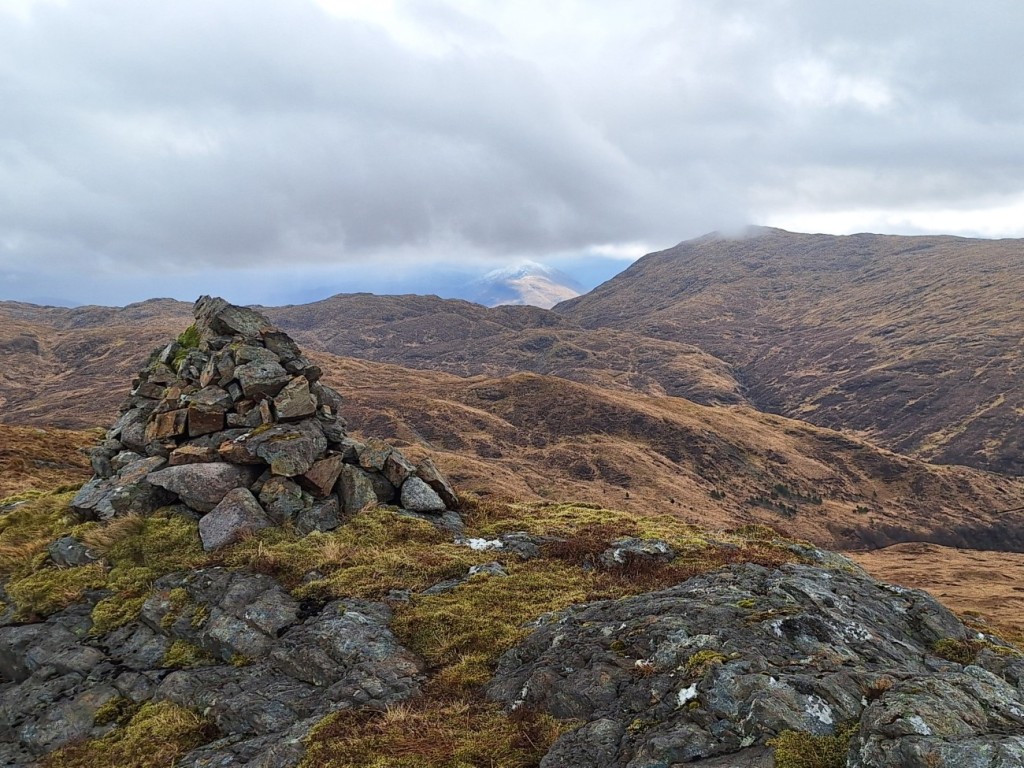
Appropriately, a heavy hail storm began as I left the top, and I descended rapidly towards the saddle with Beinn Molurgainn as I could hear some thunder around. Thankfully, the thunder soon stopped and I could see brighter weather approaching, so I decided it was safe to continue back up. The hail had made the ground pretty white, but did turn to rain for a few minutes before petering out. Soon I was on the Graham summit and continuing southeast towards the minor top of Meall Dearg. The various cairns along its ridge proved to be excellent viewpoints over Loch Etive towards the higher, snowy peaks of Ben Starav and Ben Cruachan, and there were a few sunny spells.
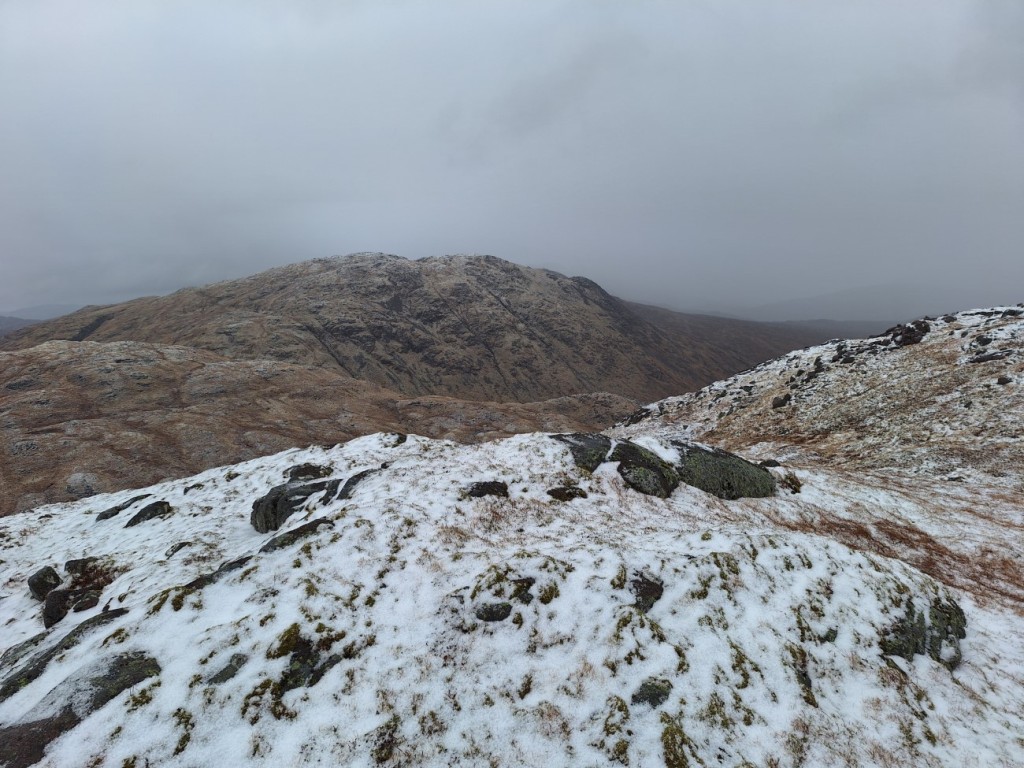
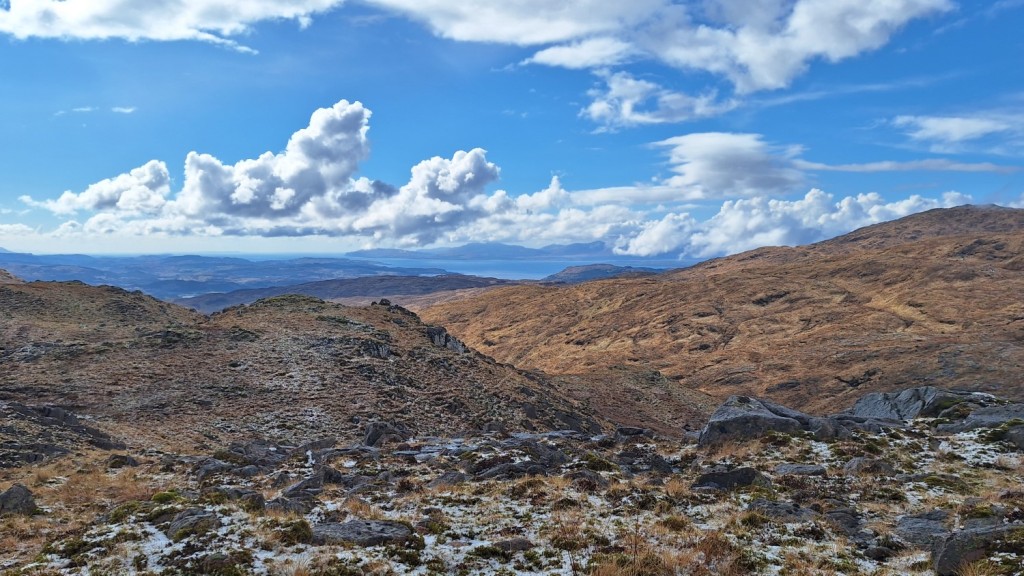

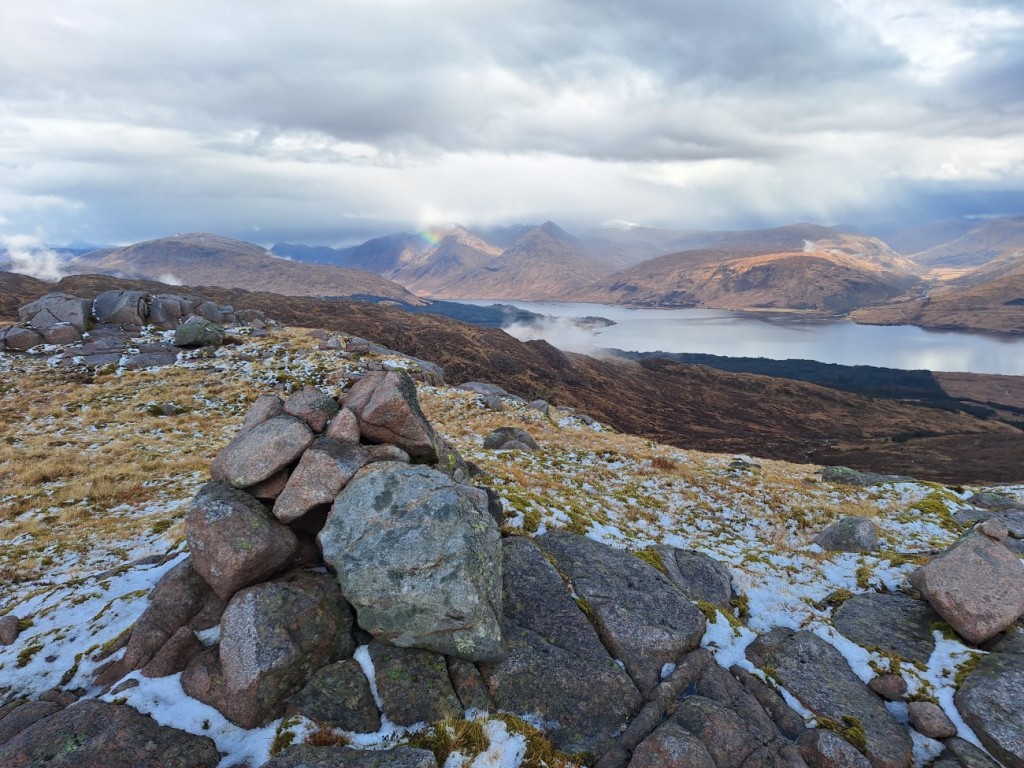
Once I’d reached Bealach Carra, it was an easy scramble up the spur to the summit of Beinn Mheadhonach, the final Graham of the day. I overtook another walker, whose footprints I had seen in the hail earlier, on the way up, but didn’t pass closely enough to speak as he had chosen a less rocky line further right. The summit gave good views towards the sea and Mull.
I descended west then northwest down rough, grassy slopes to reach the confluence of the Eas a’ Chrinlet and Eas na Gearr, where the former could be crossed on stepping stones beside an ATV ford, and the latter had a very helpful bridge. Beyond the bridge, an obvious ATV track led quite steeply up onto the opposite hillside then traversed southwest back to my start point. The attractive rocky ground of the second and third Grahams had definitely made up for the boggy first hill and unpleasant hailstorm to give a good day overall!
Route map: https://www.plotaroute.com/route/2567681
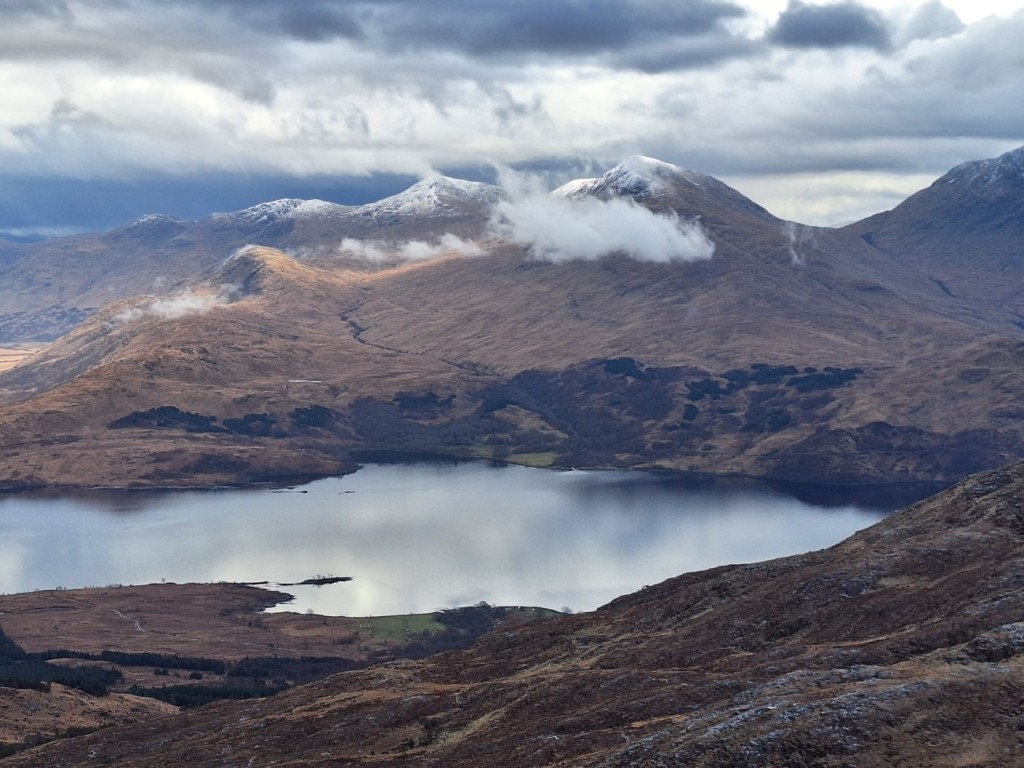
I had been told that I would be sharing the dormitory that night, so was surprised when nobody had turned up by the time I went to bed. Sadly, five others did arrive around midnight and disturb my sleep! Nevertheless, I was well rested by morning and decided to head to a couple of Munros, Beinn a’ Chochuill and Beinn Eunaich, which had looked good across Loch Etive the previous day. The forecast was also good, particularly for the morning, with light winds and sunshine.
Once I’d had breakfast and checked out of the hostel, I drove the half hour to Lochawe and parked by the B8077 junction, wrongly assuming that any places further along the lane were already taken. The first few kilometres were on a good hydro track up the valley, with improving views of the Ben Cruachan group to the left.
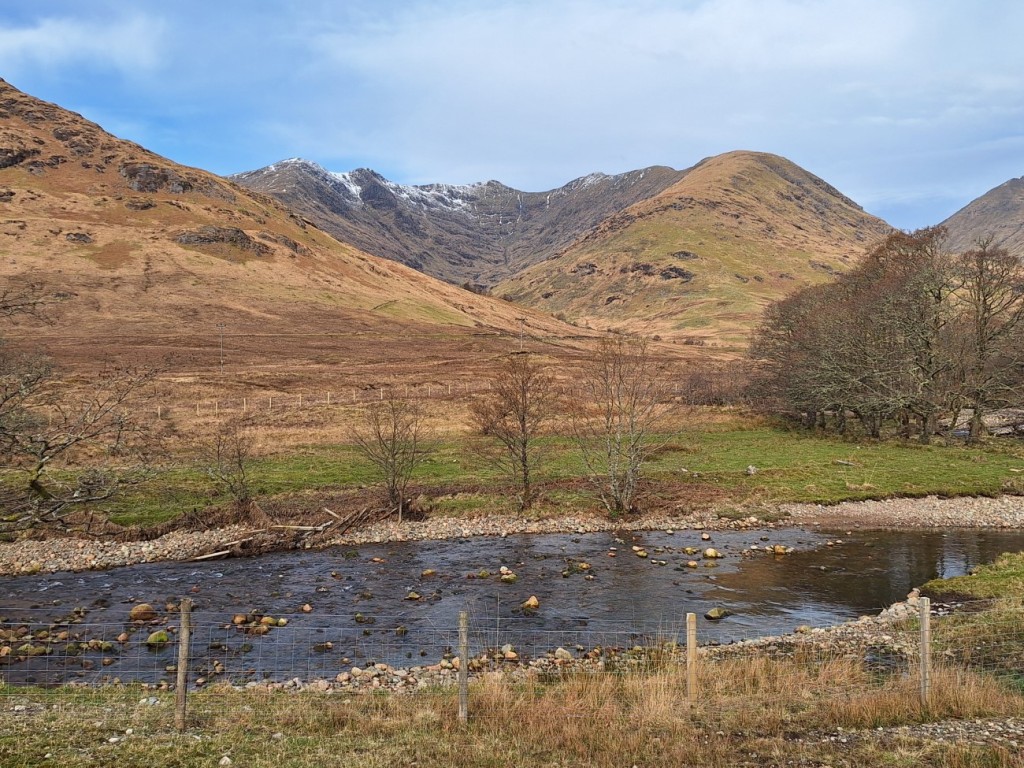
Then it was a steep and unrelenting climb of nearly 500m up the SE ridge of Beinn a’ Chochuill, significantly aided by the expected Munro-baggers’ path. The climb was essentially snow-free, but a decent cornice remained on the north side of the ridge to make the view more dramatic. I enjoyed more stunning views of Ben Cruachan as I walked west to the summit of Beinn a’ Chochuill, as well as appreciating the row of snowy peaks between Ben Starav and Stob Ghabhar to the north.
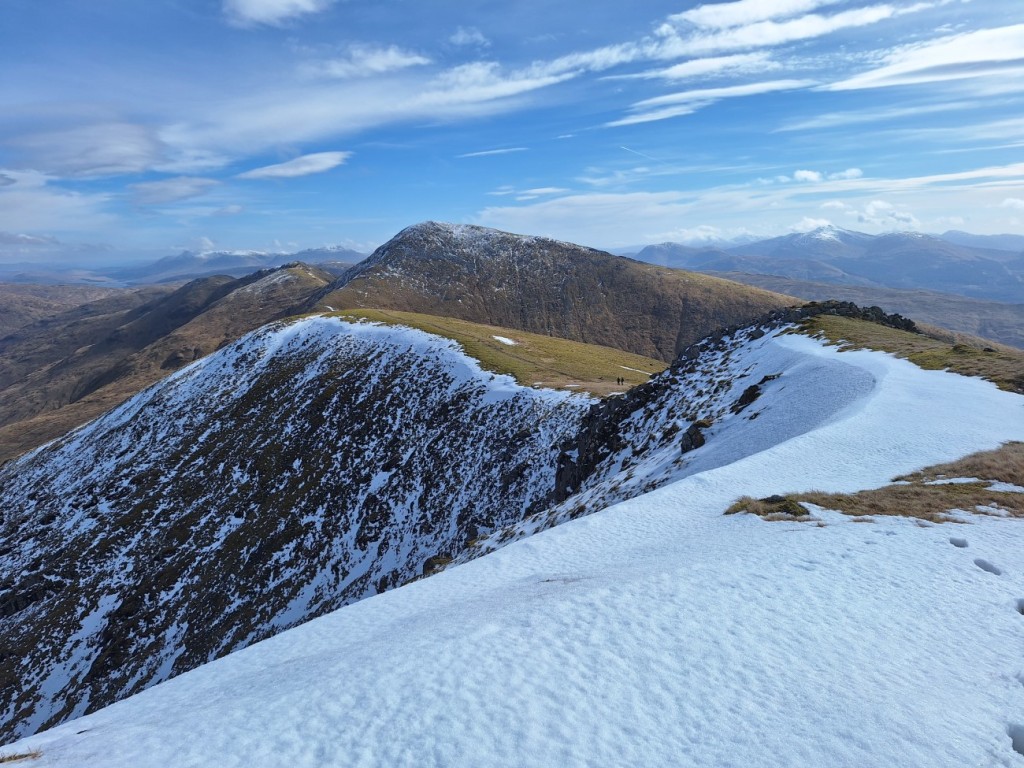
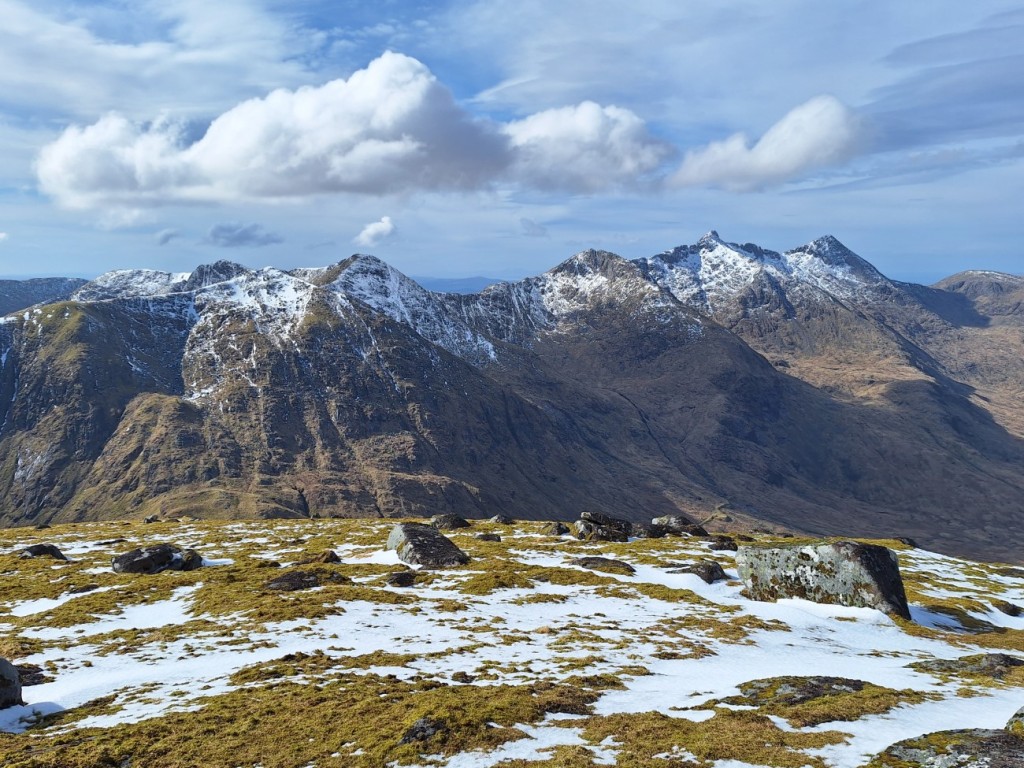
Turning back to the east, I followed the good ridge path to the second, higher Munro, Beinn Eunaich, pausing for lunch in a sheltered spot a little below the summit. As it was still quite early, I decided to continue northeast along the ridge to Meall Copagach and the Lairig Dhoireann, rather than following the masses (perhaps 15 other people that day) down the south ridge back into the valley. Although there was a lot of very steep snow on the east face of Beinn Eunaich, the descent on the ridge itself was easily negotiated without ice-axe, and the continuation was snow-free and enjoyable.
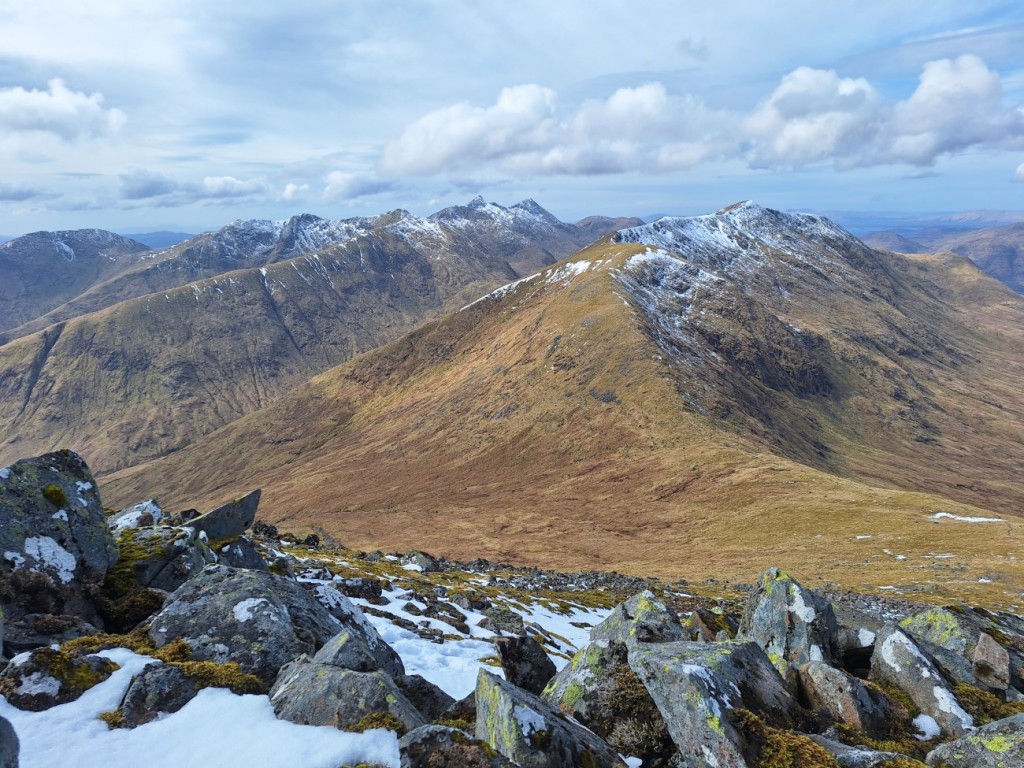

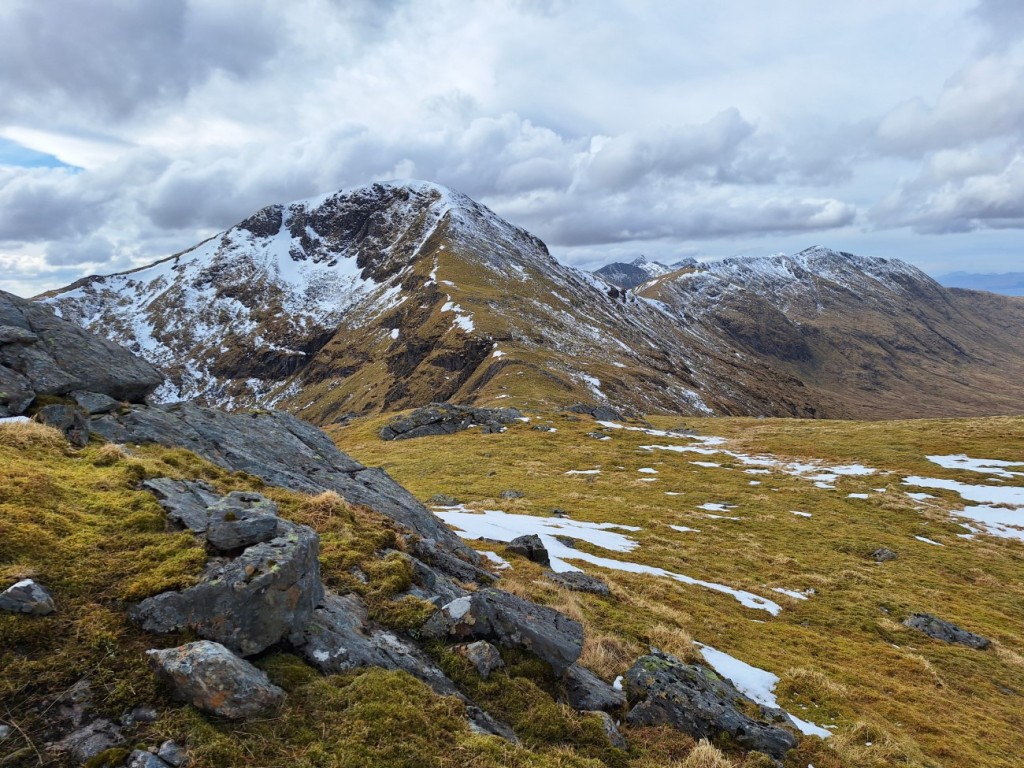
As I’d suspected, the mapped path down the valley was faint and intermittent, but it was at least well marked with cairns. Once down in Glen Strae, a few kilometres on the track and road brought me back to the car. I drove another half hour to reach Crianlarich SYHA for the night, where I was able to claim a bottom bunk in an otherwise full dorm.
Route map: https://www.plotaroute.com/route/2568631
My plan for my final day in Scotland had been to visit some of the Grahams above Luss, but the mountain forecasts agreed that the far south of the National Park would probably have low cloud in the morning. Instead, therefore, I decided to walk directly from the hostel up a couple of Munros, Beinn Tulaichean and Cruach Ardrain.
My ascent route followed forest tracks up Coire Ardrain, escaping the forest by Creag na h-Iolaire and climbing steeply from there to gain the ridge. The views of Ben More to the left and Cruach Ardrain to the right improved as I continued south to the rocky top of Stob Garbh, and the direct route to Cruach Ardrain looked pretty intimidating with a good covering of snow. Luckily I had thought of that and planned instead to contour across the corrie to the bealach with Beinn Tulaichean and climb that hill first, a route that worked well with some large, flat snowfields to cross. I saw one other walker with his dog near the summit, where I paused for a snack.

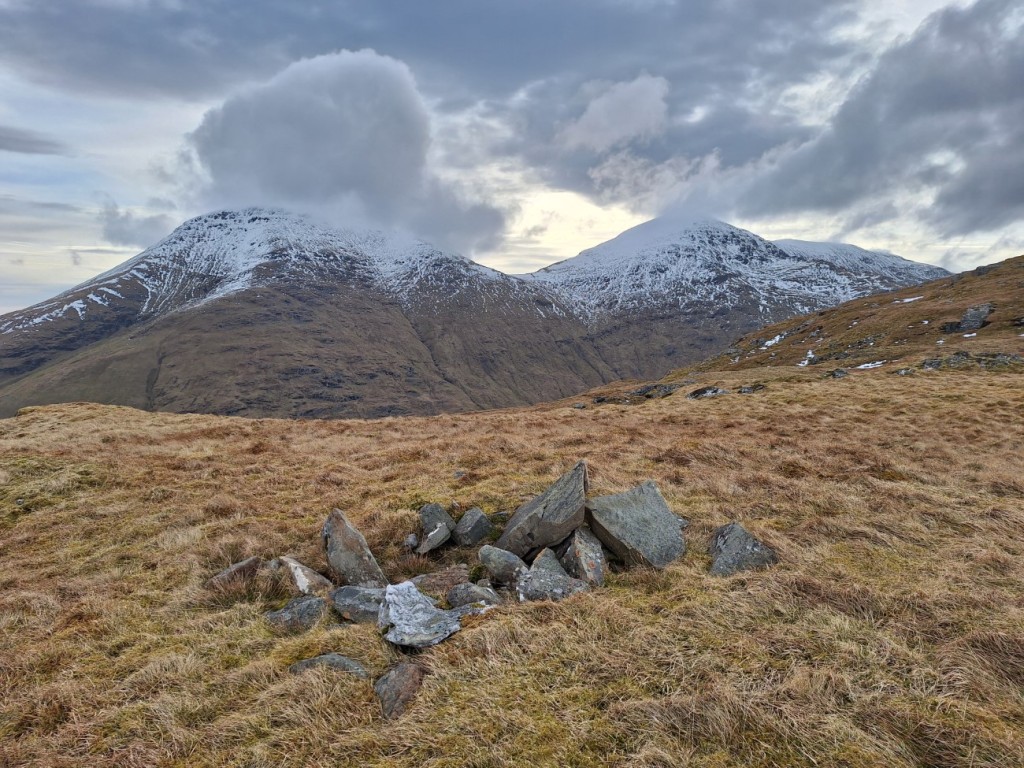
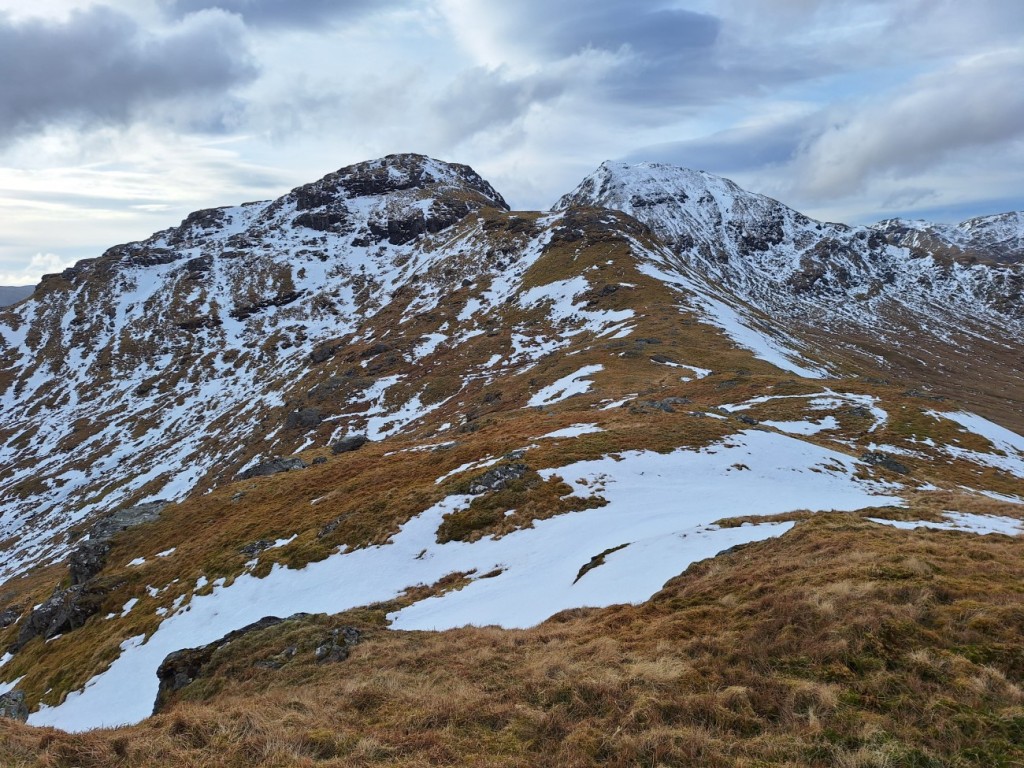
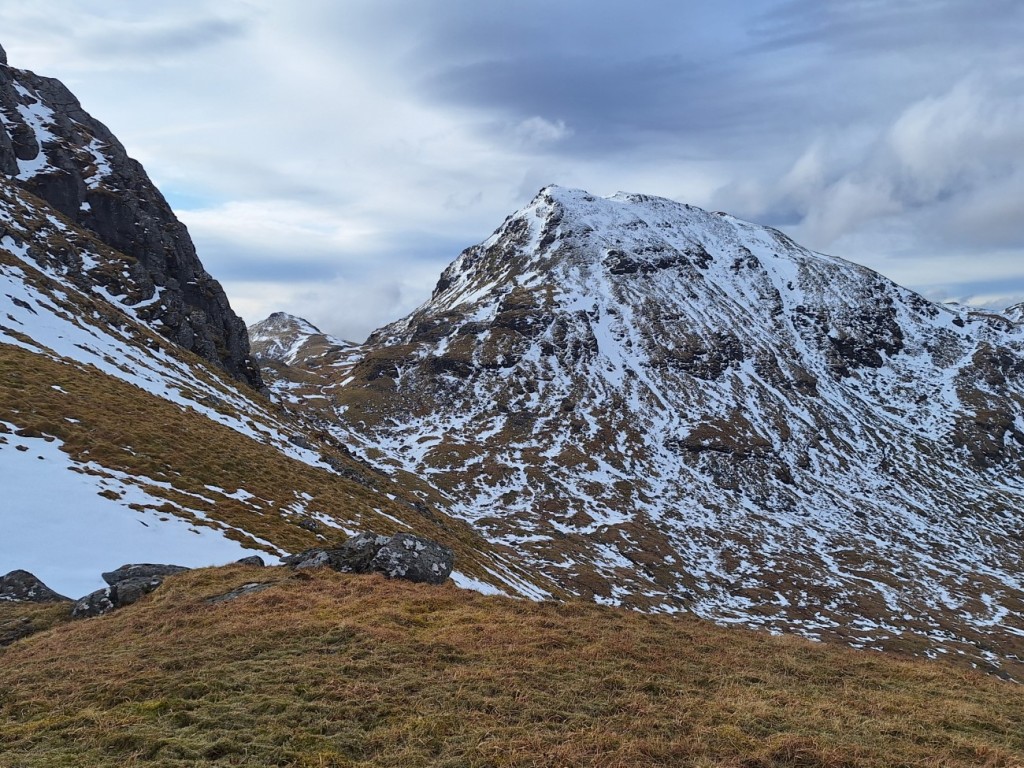

Turning back north, I followed the ridge up to Cruach Ardrain, finding some deep snow drifts near the top but nothing requiring use of the ice axe. There were good views of An Caisteal and its neighbours to the west, as well as down into Strathfillan. To return to Crianlarich, I descended the easy ridge via Meall Dhamh (where I paused for lunch) and Grey Height, passing two other solo walkers heading up. On reaching the edge of the forest, I headed northeast to pick up the end of a timber extraction track that I could see not far below, rather than going down the very boggy rides described in the guidebook.
Route map: https://www.plotaroute.com/route/2570513
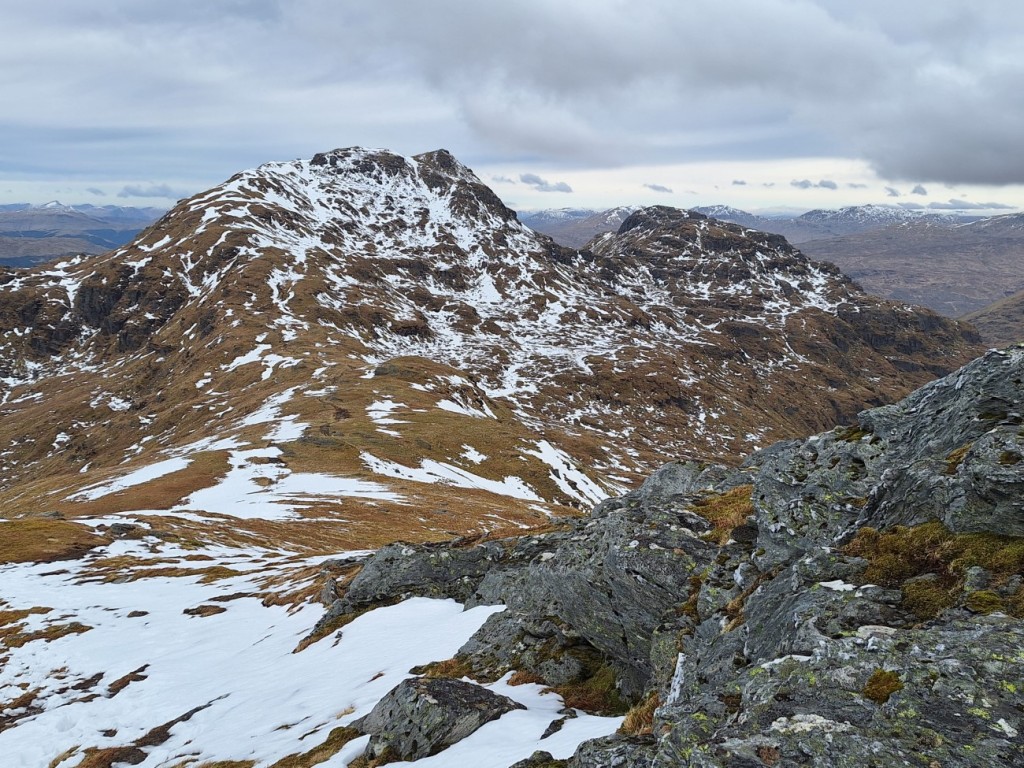

I was back at my car and on the road around 1:30pm and embarked on the drive back to Kendal. Despite some slow traffic through the Trossachs and in Cumbria, I arrived with about 20 minutes to spare before dinner with Mum, Dad, Ruth and Josh. I stayed the night at Mum and Dad’s.
The next morning, Ruth, Mum and I went for a stroll up nearby Farleton Fell to get some fresh air before my final couple of hours’ drive home. It must be quite a few years since my previous visit to this limestone-covered hill, and it was good to refresh my acquaintance.
Route map: https://www.plotaroute.com/route/2570518
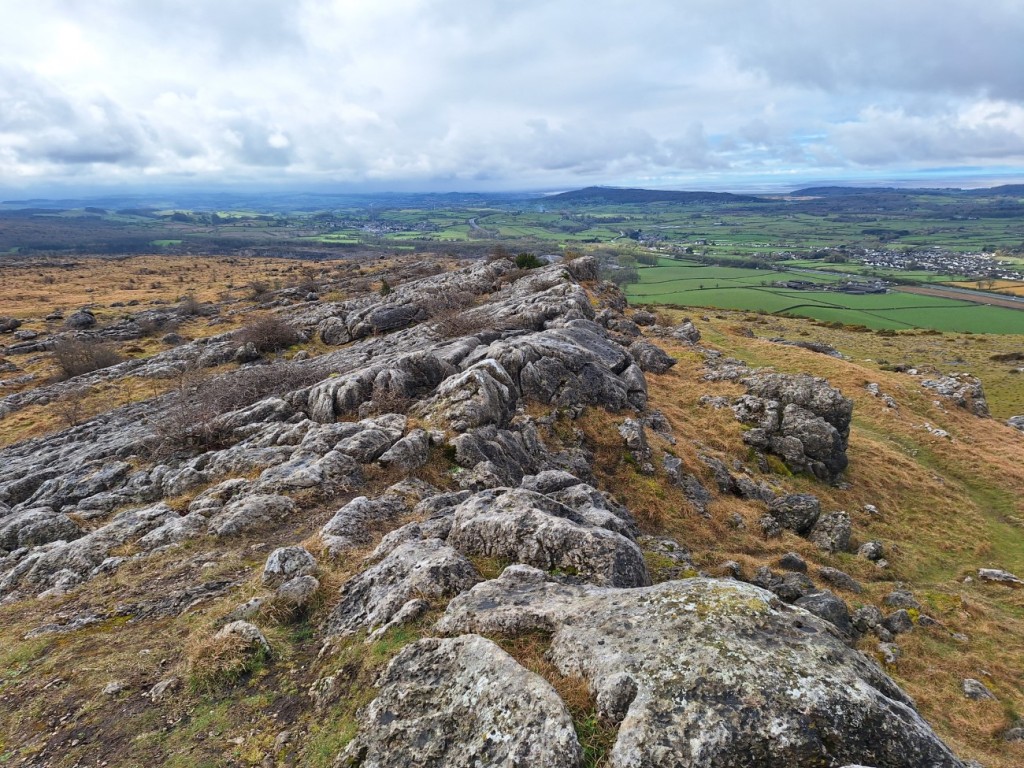
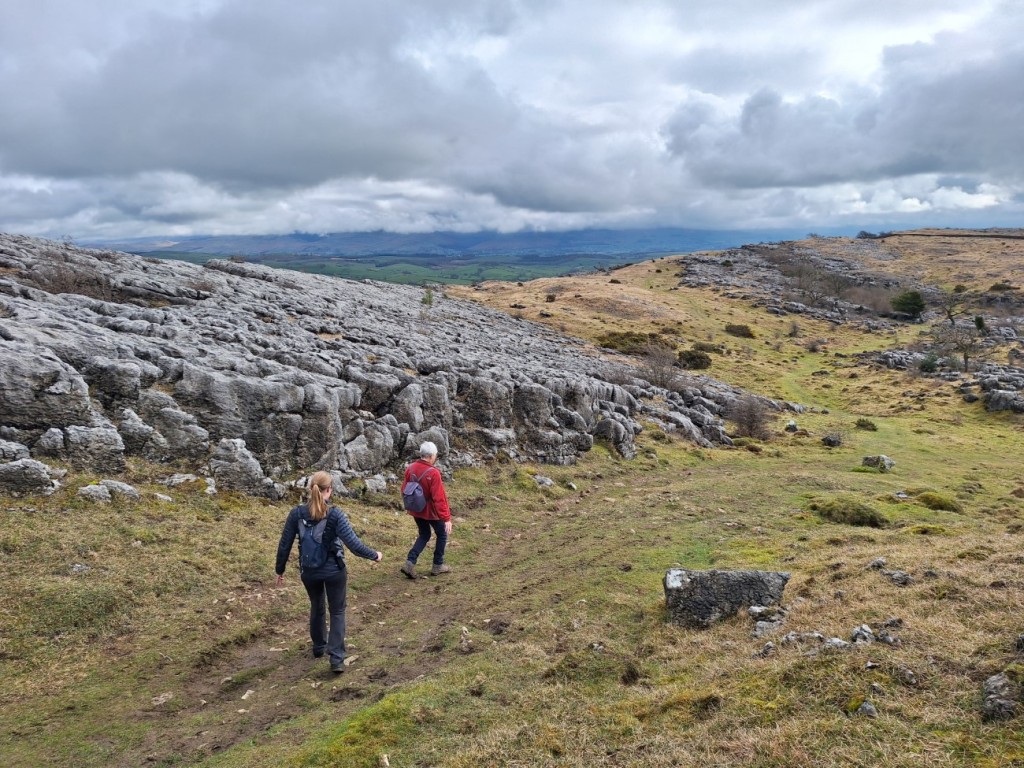
My full photo album can be viewed here. Overall, a pretty good Easter trip, with three totally dry days in Scotland and the other two only showery. I had ticked off six new Grahams and revisited four Munros. I now look forward to my next Scottish trip, to Glen Shiel in late May with the Gentian Club.


